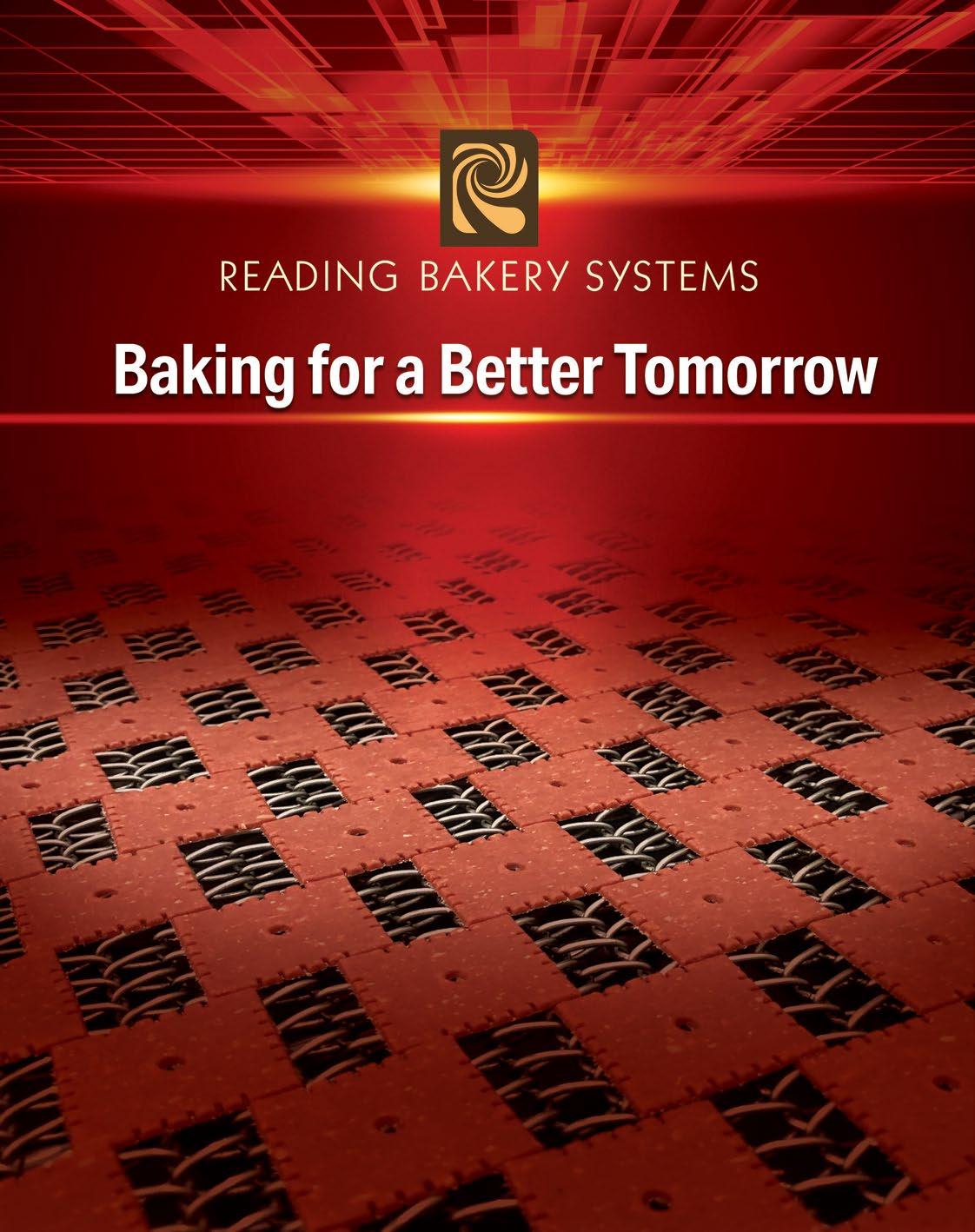
Innovation, automation and sustainable solutions to futureproof your facility. Industry-leading innovation and automation: RBS Booth: Hall 1 Stand B70. www.bakingbiscuit.com 02 23 Production Pies, cakes, donuts Packaging special Sealing the deal; Gentle handling interpack 2023 “Sustainability is the number one topic”
Verhoeven Bakery Equipment Family has a long and successful history of tailor-made development, engineering and production for the food industry. In the bakery market the family labels have established a strong position due our innovation and creative turnkey solutions. We sell high end production lines and state-of-the-art machines. Developed and made by a wonderful team of dedicated people. They make us proud. We would love to show you why.

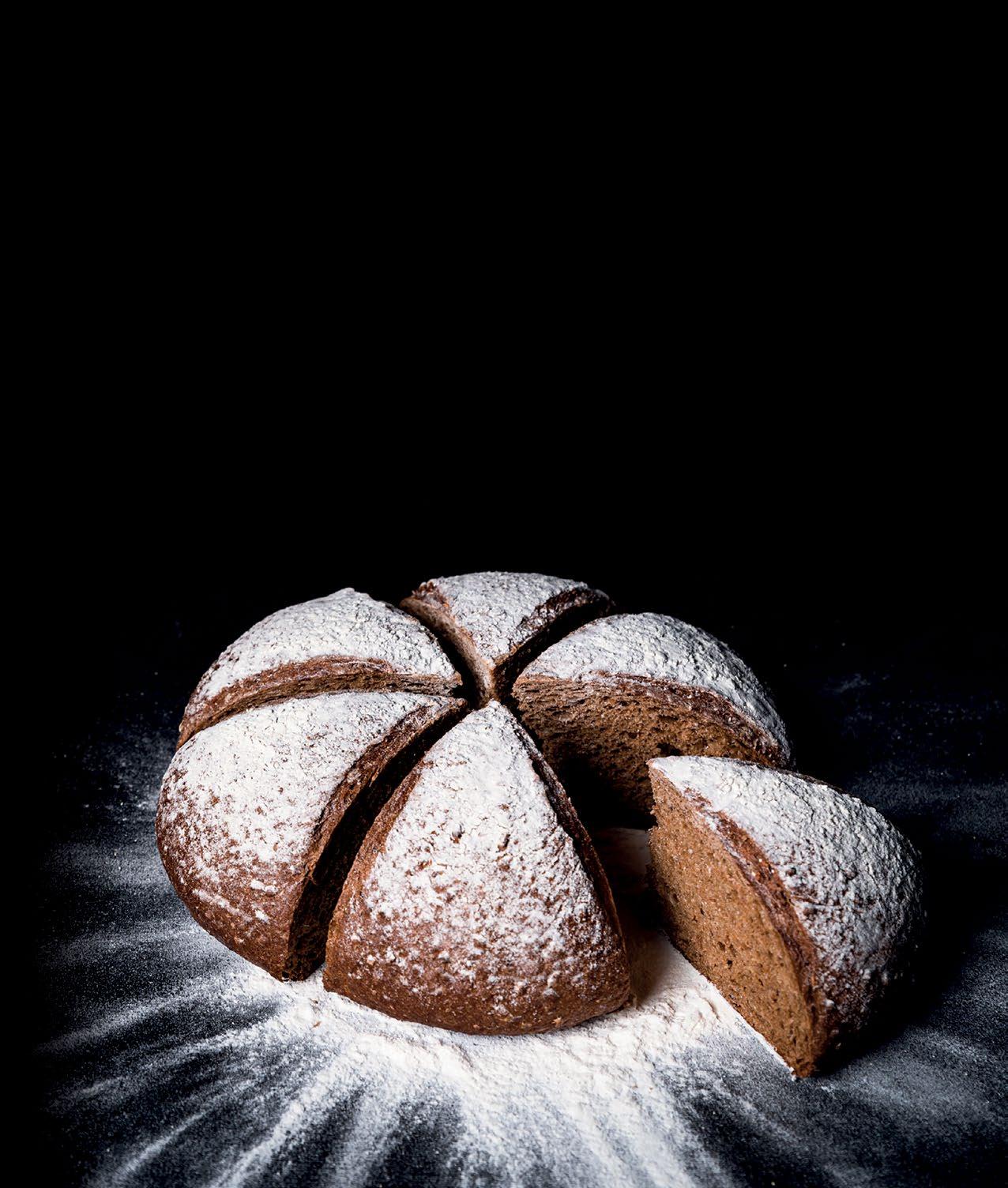
HANDLING Conveying Robotizing Depanning END OF LINE Packaging solutions System integration CONDITIONING Cooling / Freezing Vacuum Cooling The Neth erlands - T +31(0)412 630 545 - info@verhoevenfamily.com MAKE UP Laminating Sheeting lines Universal lines Donut lines Pie lines
IT’S ALL IN THE FAMILY we make to bake PRE-CONDITIONING Product conditioning Proofing VERHOEVEN BAKERY EQUIPMENT FAMILY WWW.VERHOEVENFAMILY.COM
What is versatile packaging?
We are now quickly approaching interpack, the long overdue packaging and processing show. Just like that, a worrisome winter is behind us and we are gearing up to experience packaging and processing innovation returning to Düsseldorf after six years. The worst is behind us, hopefully. However, the uncertainties of the past months do follow us into spring: the cost of living remains high, doubled with recession fears, and unsettling failures in banking systems, in addition to the underlying energy crisis. On top of these, the war in Ukraine that started this snowball effect of disruptions continues.
The turmoil will, no doubt, show the mark it has made in packaging and processing. It already reflects in the global packaging trends Mintel announced. “Pressures from the environmental perspective, the conflict in Ukraine, global inflation, social issues, legal challenges, extended producer responsibility, and other forces mean packaging must navigate new and more challenging routes to market,” commented David Luttenberger, CPPL, Global Packaging Director at Mintel, when the 2023 packaging trends were revealed.
Catalina Mihu, Editor-in-chief

Economic uncertainty determines consumers to rethink their spending; to address budget cautiousness, brands are showing consumers how packaging can stretch their resources. “Offering packaging that represents financial value propositions, while not compromising quality, convenience, freshness, safety, and environmental responsibility, will be a differentiator in 2023 and beyond,” according to Mintel.
Not all change is bad; in light of all circumstances, transparency in communication through clearer labeling and sustainability efforts are at the top of opportunities in packaging in 2023, welcomed by the consumers’ wish to be informed. Mintel envisions packaging to paint a picture of the brand’s equity, in this regard. The communication path is established and consumers are seeking answers to hard topics, from people’s health to the health of the environment. Energy efficiency, for example, is under scrutiny by manufacturers and consumers, too. “In the future, brands seeking to be trusted partners in the kitchen need to take energy consumption into account and deliver packaging that enables energy-efficient cooking,” Mintel suggests.
In all aspects, sustainability is the #1 priority in the industry and at interpack this year. “It is no longer an add-on, but is increasingly becoming a duty, as we are dealing with a change in purchasing behavior,” Thomas Dohse, interpack Director, told us in an interview you can read in the pages of this magazine. For a glimpse of several interpretations meeting trends, improving processes and sustainability, you’ve come to the right magazine. We hope you enjoy reading it.
Have an excellent trade fair, everyone!
We look forward to seeing you there.
Catalina Mihu
03 EDITORIAL
or
Your commments
suggestions are always appreciated: e-mail: mihu@foodmultimedia.de
INTERVIEW
Sustainability is the underlying theme of interpack and a core trend in baking and confectionery. It is no longer “an add-on, but is increasingly becoming a duty”, Thomas Dohse, interpack Director, tells baking+biscuit international , in an interview before interpack 2023.

INTERPACK
As preparations are in full swing for interpack 2023, exhibitors share solutions they are focusing on, information about new technologies that bakers can see at the fair, as well as their views on the trade show and the industry.
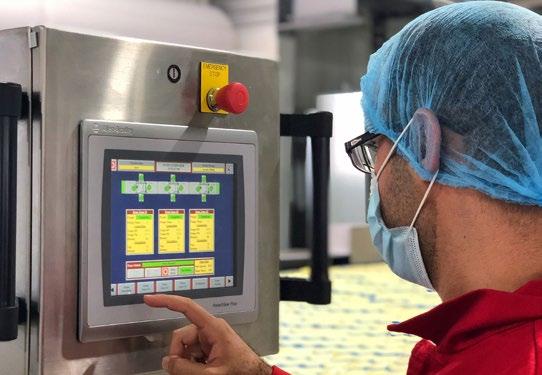
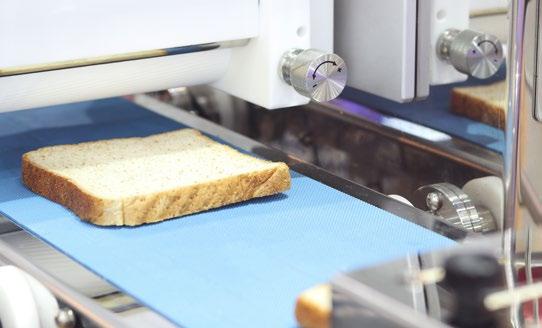
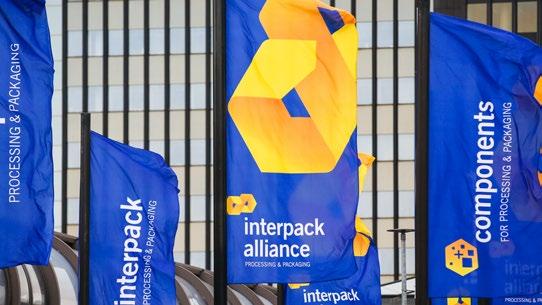
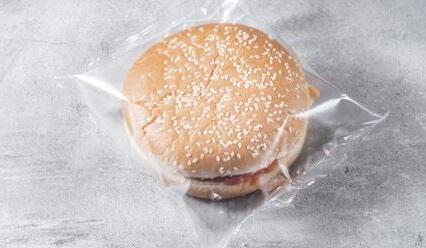
CONVEYOR BELTS
Cleaning baking oven belts can be a dirty, time-consuming task, causing downtimes of two days or even more.
PIES, CAKES, DONUTS
Sweet or savory, pies are a perennial favorite among consumers. Highly specialized production lines are developed to ensure production meets quantity as well as quality needs, efficiently.
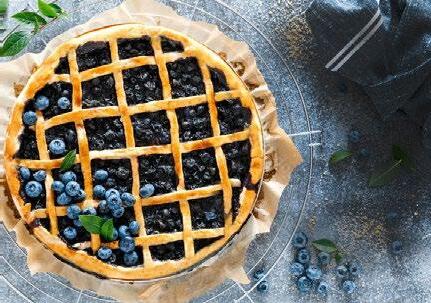
PACKAGING SPECIAL
Identifying the best packaging process and materials ensures all types of baked goods make it from plant to table, exactly as intended.
PROOFING
There are clear requirements for the proofing process. The dough may be resting, but its transformation process does nothing but rest.
www.bakingbiscuit.com 02/2023 CONTENTS 04
COVER STORIES 06
16 40
30
HIGHLIGHTS 10
©
© Messe Düsseldorf, Constanze Tillmann © Sea Wave –stock.adobe.com © Alen-D –stock.adobe.com © sergey–stock.adobe.com © RBS 34
Messe Düsseldorf, Constanze Tillmann













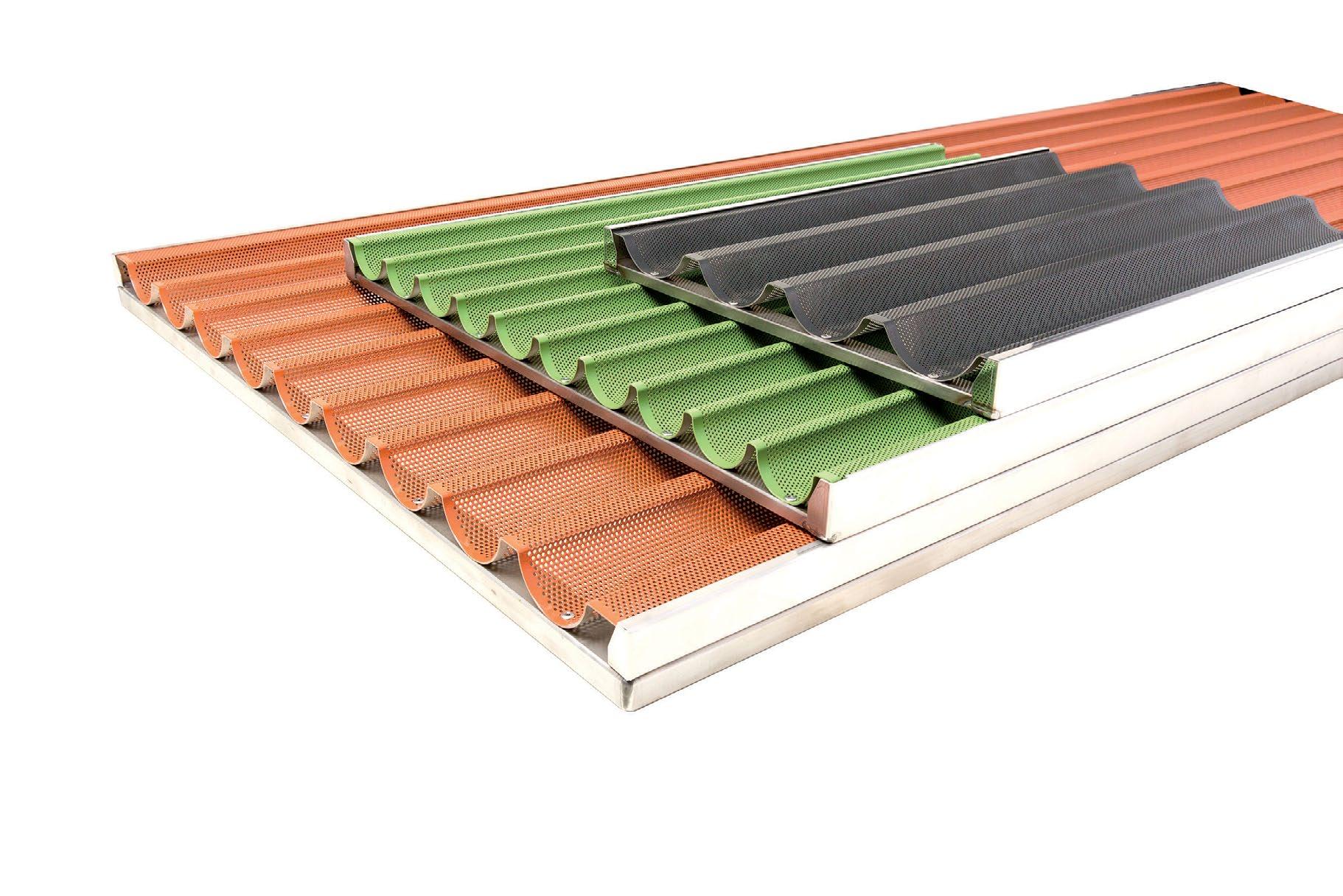
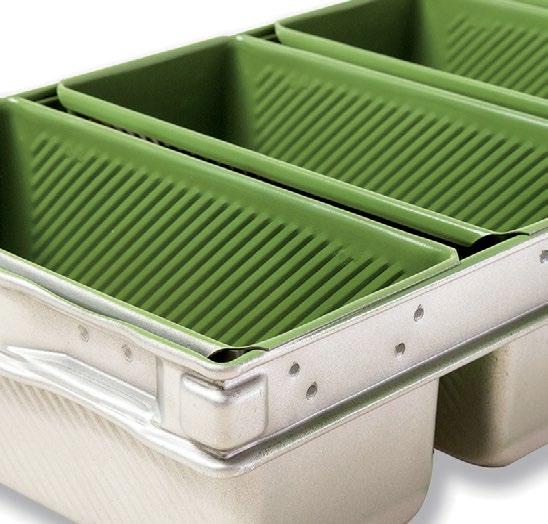
INTERPACK 06 10 PIES, CAKES, DONUTS 16 24 26 PRODUCTION 30 34 46 PACKAGING SPECIAL 40 44 BAKERIES 46 MARKETS 50 SUSTAINABILITY 54 setting a sustainability strategy SCIENCE 58 Campden BRI: Mitigation of product safety issues in bakery CAREERS 64 Dawn Foods: Sponsoring women leaders REG ULARS 03 Editorial: What is versatile packaging? 62 News 66 Advertiser directory Cover photo: Reading Bakery Systems advertisement FOLLOW US ON LINKEDIN Kempf GmbH | Carl-Benz-Straße 3 | 85296 Rohrbach ++49 8442/9669-0 | www.kempfgmbh.de bakeware and coating www.bakingbiscuit.com 02/2023 ADVERTISEMENT
“Sustainability is the number one topic”
Sustainability is the underlying theme of interpack and a core trend in baking and confectionery. It is no longer “an add-on, but is increasingly becoming a duty”, Thomas Dohse, interpack Director, tells baking+biscuit international , in an interview before interpack 2023.

+Catalina Mihu: What will the main differences be between this year’s interpack and the previous edition six years ago, organization-wise?
Thomas Dohse: interpack 2023 is a very special trade fair for us, that’s for sure. We are pleased to finally be able to bring the whole world of packaging and processing to Düsseldorf again. Around 2,700 exhibitors from 60 countries will demonstrate the industry’s capabilities here, discuss current trends and set the course for the future. The range of products and services is, therefore, as impressive as ever. What has changed for us, as trade fair organizers, since the last edition, are certainly the digital services and offers, which are taking on a much greater role. We see ourselves as a connecting and forward-looking platform 365 days a year. This year’s event is particularly about networking exhibitors together with visitors. But, digital tools for organization and an improved trade fair experience and time management have also become enormously important. This is where we want to continue to lead the way.
Mihu: How has the area dedicated to bakery and confectionery evolved?
Dohse: You will find the confectionery and baked goods area directly at the new south entrance to Messe Düsseldorf. Here, an impressive foyer and the new Hall 1 have been created since the last interpack, giving the trade fair a new face. More beautiful, wider, brighter, to put it briefly. The areas are fully booked again this year. Confectionery and bakery solutions and machines have been a large part of interpack, since the beginning. It is no coincidence that our logo is a replica of a classic sugar tong.
Mihu: What concepts regarding the exhibition structure and layout have been updated? Why were the changes necessary?
“Confectionery and bakery solutions and machines have been a large part of interpack, since the beginning. It is no coincidence that our logo is a replica of a classic sugar tong.”
www.bakingbiscuit.com 02/2023 TRADE SHOW 06
Thomas Dohse, interpack Director © Messe Düsseldorf, Constanze Tillmann
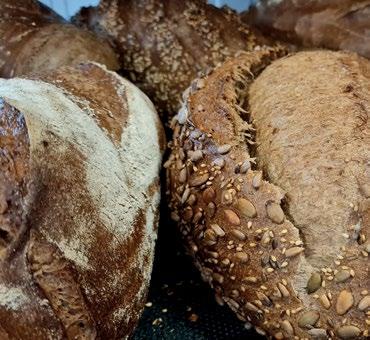
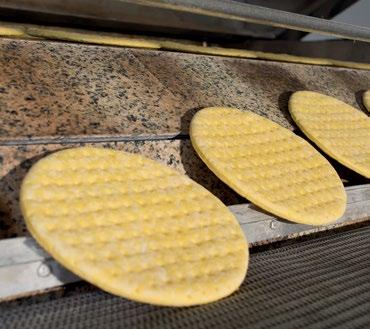
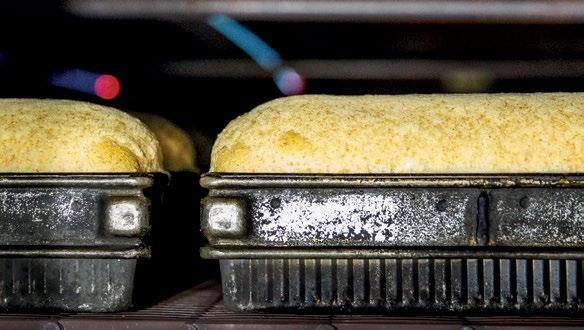
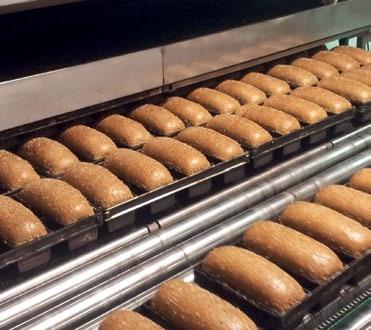
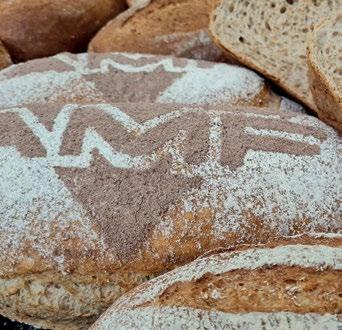
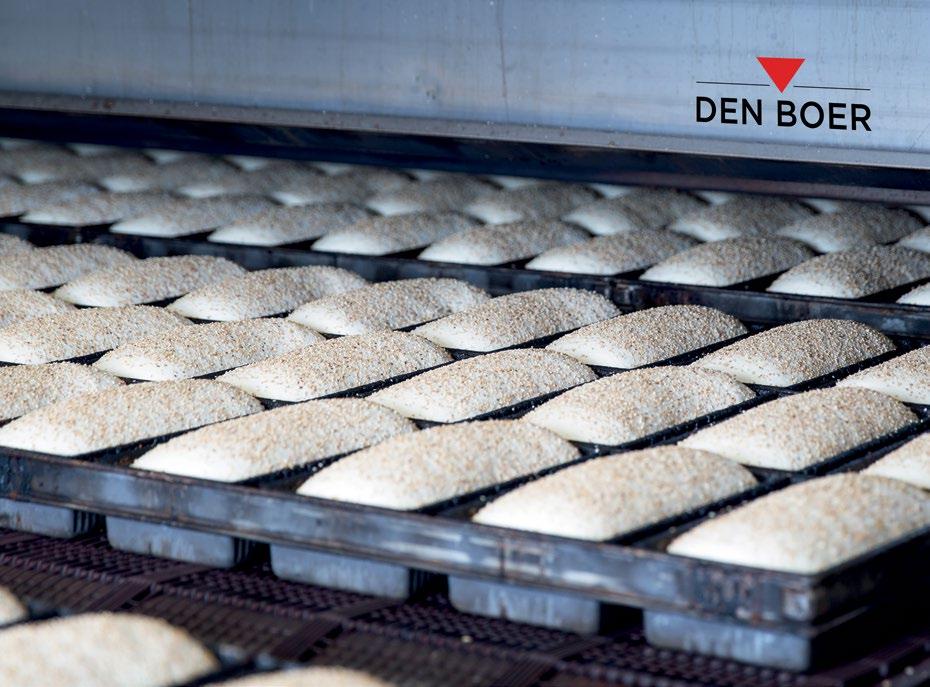

















Dohse: This year, we can finally implement our new hall concept, which sets clear focal points and makes the exhibition more effective for visitors. The confectionery and bakery sector is concentrated in Halls 1, 3 and 4. Packaging materials and packaging means are also important focus points and can be found as a cross-sectional area for all target groups in Halls 7 and 7a, 8a, 9 and 10.
Mihu: What recommendations would you like to share with baking professionals who are visiting the show?
Dohse: Plan enough time, there is so much on offer. Use our digital tools for preparation, such as the exhibitor and product database, the MyOrganziner, or our app. And follow us on our social channels to always be up to date.
Mihu: How are the main trends in packaging for bakery products reflected at this year’s show?
Dohse: Sustainability is the number one topic in the packaging sector; it is no longer an add-on but is increasingly becoming a duty. We are dealing with a change in purchasing behavior. Sustainable packaging is in demand and the industry offers numerous solutions that we will see at interpack. Other consumer trends such as greater health awareness also have an influence on the design of packaging and the information contained on it. The topic of convenience continues to be a perennial favorite, as does innovative packaging design.
Mihu: Sustainability is an underlying theme of interpack 2023. What different approaches to sustainability will be represented with dedicated solutions at the show, particularly in response to manufacturing bakery products?
Dohse: Circular economy is the defining theme in order to be able to use materials again as high-quality materials through intelligent processes. In this context, the focus is on packaging that is easy to recycle, mono-material packaging, the use of recyclables and design-for-recycling. In addition, the conservation of resources is gaining importance at all levels. Companies today are faced with the challenge of acting sustainably and responsibly, making the best use of scarce resources, while increasing efficiency in production. CO 2 neutrality is an important topic among exhibitors and visitors.
Mihu: What can be learned from major, global disruptions such as the ones we currently experience, and how can this knowledge contribute to the food production industry being better prepared in the future?
Dohse: Global crises such as COVID-19, natural disasters, wars and conflicts have brought many lessons for the entire industry. The need to diversify supply chains is at the top of the agenda, to better respond to future disruptions and avoid over-dependence. This is currently a very big problem for many because the industry still needs to fill orders; so, companies increasingly have to deal with the issue of risk management. However, we also see a digitalization push, especially due to the COVID crisis, which brings with it great opportunities and progress. Companies are investing in automation, robotics and digital services. This ensures more efficiency and continuity in production. There is still a lot of potential here.
Mihu: What changes have you observed in exhibitors’ responses as the show was rescheduled, then adapted and updated?
Dohse: The postponement and eventual cancellation of interpack 2020 was a great disappointment for everyone involved. But, the uncertainties were simply too great at the time to meet the demands of a leading trade fair. Everyone agreed on that. We felt great support from the industry. At the time, an overwhelming majority of exhibitors retained their spaces for 2023. For the industry, personal encounters and the live experience of complex technology, in particular, remain enormously important.
Mihu: What attendance figures do you anticipate, compared to the previous edition of interpack?
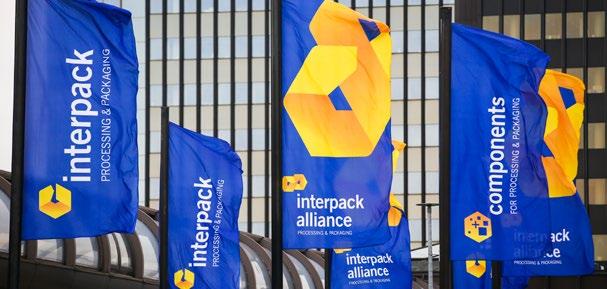
Dohse: We are optimistic that we will once again be able to attract the global processing and packaging industry to interpack, and the registration figures to date are good. However, geopolitical influences and travel restrictions that still exist in some places certainly also have an impact, so it is difficult to make an exact forecast. However, we are very pleased that now having returned from our worldwide press conferences, we received very good feedback everywhere. People are looking forward to the fair and those who can will come. +++
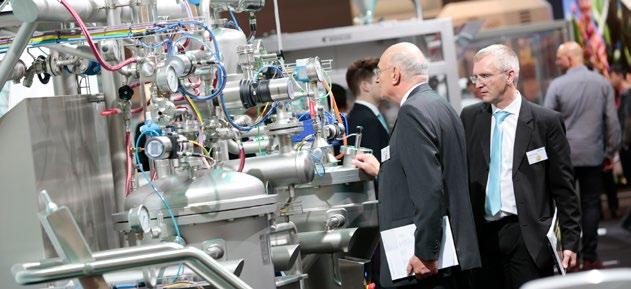
www.bakingbiscuit.com 02/2023 TRADE SHOW 08
© Messe Düsseldorf, Constanze Tillmann
Fast
2100 lines installed worldwide and we are always around the corner.
.

Tasteable quality secured by over 85 subsidiaries worldwide
Ben Baker
interpack 2023 highlights
As preparations are in full swing for interpack 2023, exhibitors share solutions they are focusing on, information about new technologies that bakers can see at the show, as well as their views on the trade show and the industry.
AMF Bakery Systems
AMF Bakery System introduces a new, sustainable machine: the AMF Tromp Powershot – a sauce applicator that can be used for pizza and flatbreads, to deposit sauces and oils. Its new design does not use compressed air and has low energy needs. It has a hygienic, EHEDGE-compatible design, with IP69 components, and optimizes raw material usage.
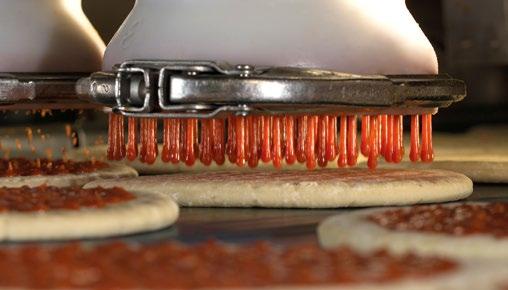
AMF cake production lines and systems are also among the highlights with solutions for snacks and premium products, single-packed cakes, cupcakes and muffins – from entry-level to high-volume production. Equipment includes turnkey solutions, depositors, conveying systems for trays, decoration units, impingement tunnel ovens and decoration modules (topping, injection).
AMF also focuses on sustainable baking ovens. “This topic is hot and current; solutions are needed more than ever. AMF Den Boer tunnel ovens can bake with electricity and hydrogen. Existing ovens can be retrofitted with the required burners,” AMF says. The company can provide electric and hybrid ovens.
The company is looking forward to interpack’s comeback, ahead of the other major trade shows this year, iba and Gulfood. “The world wants to meet, and people like to meet people. We switched quickly to all digital channels
over the last few years, as that was needed anyhow. The customer journey is becoming more diverse, so we have to be where our customers are,” AMF concludes.
Reading Bakery Systems
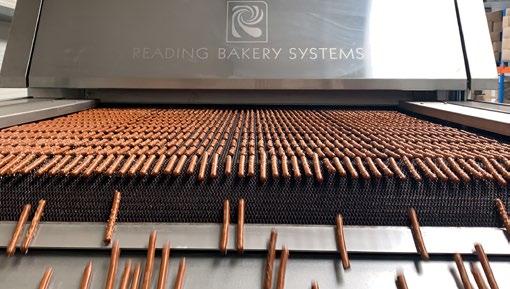
RBS is focusing on achieving sustainable and flexible operations at interpack. The company is featuring its new sustainable and electric baking capabilities, continuous mixing technology, and its lowpressure extruded snack systems.

Returning to interpack after the show’s hiatus, RBS focuses on innovation. “During the pandemic, we reframed our energy around people, the planet, and prosperity; how we can improve every step of our value chain. The results are impactful for our customers, such as new digital offerings like educational webinars, RBS eZone, a 24/7 selfservice parts portal, improved systems automation via RBSConnect for greater efficiency, intelligent and lean design/build protocols for manufacturing, as well as the SafeShield program for easier cleaning and sanitation,” RBS says.
The company is expecting a successful trade fair as it observes that customers are looking to manufacturers to solve some of their operational challenges, like energy
www.bakingbiscuit.com 02/2023 TRADE SHOW 10
Hall 1 A69
Hall 1
B70
© Messe Düsseldorf, Constanze Tillmann
© AMF Bakery Systems
© Reading Bakery Systems
efficiency, sustainability, labor and material shortages, and new product development. “Customers need partners with innovative system solutions, not just equipment suppliers.” RBS anticipates that today’s industry trends will become standard operating procedures very soon, regarding automation, sustainability (e.g., electric ovens, labor-saving operating systems) and increased flexibility.
Ashworth Belts B.V.
Ashworth brings the PosiDrive, its direct-drive solution for spiral systems to the fair, which can be used with new systems and as a retrofit for existing lotension spiral systems. The PosiDrive provides product stability and stable operation in demanding situations (high belt load, heavy product, greasy application), the company explains. The SmartSpiral is also among the stand highlights, providing trending data (graphs) for temperatures, belt tension, oil quality, bearings, etc. Ashworth also offers plastic belts for lotension- and direct drive spiral systems (Best of Both Worlds) and belts, parts and Factory Service assistance for self-stacking spiral systems (ExactaStack). “Ashworth does not only manufacture belts, but also provides customers with Parts, Audits and Factory Service Assistance, all over the world (Ashworth Factory Service – AFS). AFS in the US is often hired by European OEMs to repair and assist with installing their equipment in North America,” the company shares.
Its SmartOven ™ is among the innovations it brings to the show, a solution similar to the SmartSpiral, but for tunnel ovens, with sensors collecting data on uniform heat distribution on the belt and vibration in the system.
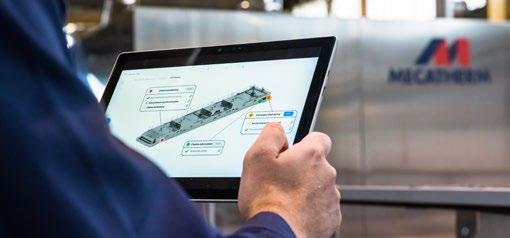
IPCO

IPCO highlights chocolate forming systems at interpack, designed for the production of industrial ingredients – chips, chunks, drops and blocks –and decorative products such as shavings, rolls, pencils, blossoms, etc.

“These have applications across the bakery industry, with ingredient products used in everything from cookies and cakes to brownies and muffins, and decorative products used to add value to cakes, pastisserie and other premium products,” IPCO details.
The main highlight will be its flagship Rotoform system, with a fully operational unit at the stand. Rotoform is a rotary drop depositor that produces chips of highly uniform size and shape and this is the foundation on which all of IPCO’s
high-capacity systems are built. “Chips are free-flowing for easy handling, storage and dosing. The system is also extremely versatile in that chips of different sizes – from 30,000 to 300 pcs/kg – can be produced by simply changing the shell,” IPCO explains.
Among the company’s latest solutions is its piston depositor that uses a D-motion to deliver chocolate or compound directly onto a moving belt.
This is the first time IPCO joins interpack with its new brand name. “Six years ago we were still Sandvik Process Systems so, if any visitors are unfamiliar with the IPCO name, it will be an opportunity to reintroduce ourselves and help them make the connection!”
MECATHERM
This year, the French specialist focuses on solutions for energy efficiency, the new, easy-to-clean M-DAN oven and new digital solutions for industrial performance.
MECATHERM is launching the new M-DAN Oven, with an improved hygienic design that includes wash-down capability. It can be used for a wide range of food products such as dairy desserts, or pastry products with liquid fillings, with easy changeovers to reduce product waste. The company also highlights the M-Care, its new predictive analysis solution that enables industrial bakers and sweet goods manufacturers to detect anomalies (such as drifts) in equipment early and provide operators guidance for easy initial maintenance checks to optimize their machine availability.
In addition, its experts will share specific insights on how to achieve energy savings. First, they will explore oven designs, such as compact vertical ovens or tunnel ovens, and how different ways of operating these ovens provide opportunities to reduce energy losses. Then, it will underline how
11 TRADE SHOW www.bakingbiscuit.com 02/2023
Hall 3
D20
Hall 3
D22
Hall 1 B82
© IPCO ©
© Ashworth
MECATHERM
convection heating can optimize baking time and reduce the temperature of fumes. MECATHERM ovens are all equipped with convection heating technology, either as the main heating mode (vertical ovens), in combination with radiant heating (M-TA and FTM Ovens), or as an option in a specific heating zone (FTP Oven). Moreover, many of its ovens are compatible with an electric heating source. The company will showcase its MECAFLEX Line, which includes the M-TA Tunnel Oven and the M-UB Handling System to produce a wide range of products from different process combinations with diverse baking tray types and formats.
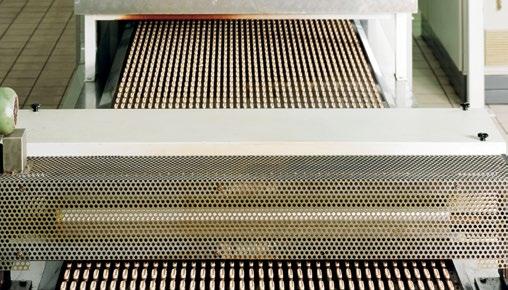
Koenig
Koenig comes to interpack with a focus on industrial baking. “We are looking forward to discussing the respective needs with our visitors in individual talks, especially in the area of complete turnkey solutions for buns or breads,” the company says.
Since the last interpack, Koenig has continuously developed its products. “In our opinion, energy and production efficiency will continue to concern customers this year and it is a main issue in the bakery industry.” Koenig is addressing this with smart and energy-efficient oven technology, with the ‘Save Energy’ series, or process optimization such as vacuum conditioning. Koenig has also launched new machines and lines for dough processing in the ‘Easy Clean’ design. In addition, further development has been made to the KGV system in EC design, which will be introduced with an expanded production output in Autumn 2023. Koenig will present solutions like these to its visitors in multimedia at its interpack trade fair stand.
Koenig has high expectations for trade shows this year. “We expect a challenging market environment in 2023 and interpack will give a good impression on the investment barometer for this year. The highlight will be iba in October, with the entire world of baking meeting in one place.”
to meet. At interpack, “We expect an in-depth exchange and the opportunity for extensive networking,” it anticipates.
Automation and digitalization will be a constant focus for DIOSNA's customers, to better position themselves for the future, the company shares, observing that end customers also influence industry trends with their desire for healthier products that are also manufactured in a resource-saving fashion.
Berndorf Band Group
Berndorf Band Group comes to interpack with its steel belts for the baking and food industry, which are designed for extreme mechanical and thermal stress, to support various processing steps, and to meet all hygiene requirements for food production. The surface is also abrasion-resistant, which facilitates the cleaning of product and grease residues.
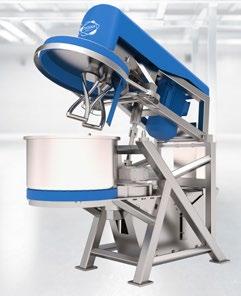
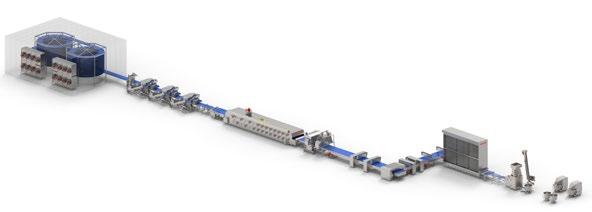
Additionally, Berndorf Band Group offers a new surface technology. “Our new easy-release surfaces have evolved from a batch to a continuous process. Whether PTFE-based or SolGel-based coatings, we are working on the requirements and production issues of our customers. Instead of using very expensive cleaning methods, we focus on the concept of permanent clean and efficient production conditions,” the company explains.
The company shares their views on today’s trends: “We focus very much on sustainability and energy efficiency. One example is the use of energy-efficient solid steel belts, which are lighter and consume less heat than other belt technologies. Another trend is the easy and energy-free cleaning of the steel belt surface through our new coating technology, which is designed to prevent caking on the belt’s surface. We want to be a positive role model with our environmentally friendly production, the use of a photovoltaic system, our own hydroelectric power station and a ‘zero waste philosophy’.
DIOSNA
DIOSNA showcases its solutions for the food industry regarding fermentation, granulation and mixing. Additionally, “We will focus on automated, secure processes and systems. For example, AGV systems and the advantages they bring in symbiosis with our machines,” DIOSNA details.
Recent challenges saw DIOSNA shift its focus to process digitization. The company anticipates that interpack, and fairs in general, are still a special occasion for the industry
www.bakingbiscuit.com 02/2023 TRADE SHOW 12
©Koenig
Hall 3
E47
Hall 4
C23
Hall 4
©
©
C39
DIOSNA
Berndorf Band Group
Handtmann

Handtmann focuses on integrative solutions for food and baked goods production from processing through to packaging, which are modular and flexible to configure. Live demonstrations include fully automated solutions for versatile products such as deposited products. “These modern processing methods will be supported by a large number of smart digital solutions that have been developed in-house by Handtmann and specifically adapted to these processes,” it anticipates. The new solutions showcased at the stand include a fully automated dosing process, comprising the modules Handtmann VF 808 S vacuum filler and DS 552 dosing system with transfer to the denester and tray sealer packaging solution by its partner MULTIVAC. The DS 552 offers direct multi-lane dosing of a wide variety of products into thermo-forming packaging and trays or dough sheet systems. The automatic dosing process runs on 2 to 24 lanes and allows a production output of up to 200 cycles per minute. The dosing principle with return suction without filling pistons and valves can dose fluid to semi-viscous filling products with high precision. A large selection of dosing nozzles further extends the wide range of products. “The
patented, servo-driven flow divider in the depositing system ensures a constant product flow without pressure fluctuations, resulting in the most accurate weights in every single lane.” The technology concepts Handtmann presents include digitalization and automation features. “As a food innovator, Handtmann welcomes trade shows to bring its courage, creativity, understanding of trends and technological know-how to rethink classical products or develop concept products with this initially rather challenging novelty to the market.”
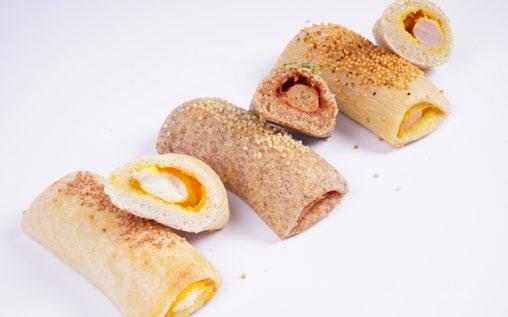
Hybrid made easy.
13 TRADE SHOW www.bakingbiscuit.com 02/2023
With our new hybrid heating system you can heat with an electric and/or any other alternative energy source. The choice is yours!
ADVERTISEMENT
Curious?
Hall 5 C38 ©
Handtmann
Syntegon
Syntegon presents flexible systems for cookies and bars, an Innovative Intelligent Direct Handling system that offers format flexibility for cookies and crackers, a high-speed bar system for maximum efficiency with new wireless HMI, and sustainable packaging for cookies and bars made of paper and mono-material.
The new Syntegon IDH is at the heart of a line that flexibly packages cookies and crackers in trays and flow wraps made of mono-material. A new pick-and-place technology with integrated linear motors ensures gentle product handling. Linear motors also feature in various feeding modules in both lines to prevent product damage during handling and boost flexibility. In addition to gentle handling, the system for bars that will be on show offers high levels of sustainability and digitalization. The line is equipped with a paper-ON-form forming shoulder and wraps bars in paper before placing them in glueless formed cartons in the TTM1 topload cartoner with an integrated lock-style forming station. Moreover, Syntegon will present a new wireless Human Machine Interface (HMI) that allows operators to access all available information and digital services at any time.
Another solution launched at interpack is the new wireless HMI 4.0 – a new feature that boosts efficiency, especially in large, fully automated systems. It allows operators to control and monitor the entire line via a single interface.
The Schubert Flowpacker will also be highlighted, a solution which allows quick switching between flowpack films with different properties. It enables both recyclable mono-plastic films and paper-based flow-wrapping films to be used in a single machine. Schubert will demonstrate this with a system that combines an ultrasonic unit for longitudinal sealing with a flexible cross-sealing unit.
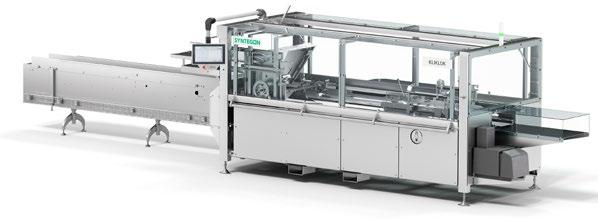
Schubert
Some of the highlights at Schubert’s stand include cobots for the rapid feeding of different packaging components on a line and an entirely new, efficient, resource-saving feeding system for carton blanks. In addition, the packaging machine manufacturer developed a concept study for a new generation of machines, in combination with a new type of transport system that will increase automation, flexibility and efficiency. The company also presents a wide range of new services for more environmentally compatible packaging, including the new five-point Packaging Perspectives program.
The new Schubert tog.519 cobots, now ready for series production, are presented for the first time to an international trade fair audience. One cobot will be processing bars, chip bags or highly reflective pouches, demonstrating the advantages of its AI.
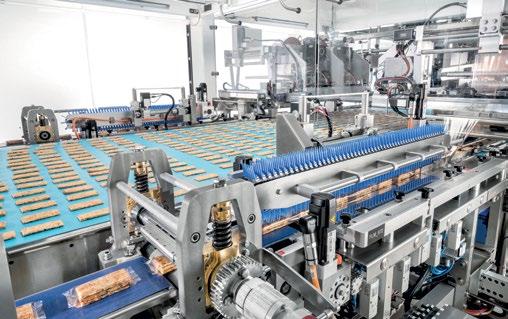
American Pan
American Pan is highlighting its latest designs and coatings, including the ePAN designs for bread, bun, roll and cake products. Some ePAN designs have been proven to save up 8% on oven energy usage.
“With our recent partnership with Turbel, we are also able to offer new coatings including a silicone resin coating that is an ideal choice for cake-type products,” the company details. In addition, the new American Pan refurbishment center in Wassenberg, Germany will be featured, an operation that was added as a result of this recent partnership.
“We also continue to offer custom and stock bakeware, coatings and bakeware refurbishment services, now with a wider selection to help attendees find the right solution for their projects,” American Pan highlights.
“It is very exciting to be back at interpack after 6 years. In that time innovation has not slowed down, in fact, it seems to have accelerated in the baking industry. It is very exciting to see the new technologies and partnerships that are moving the industry forward.” +++
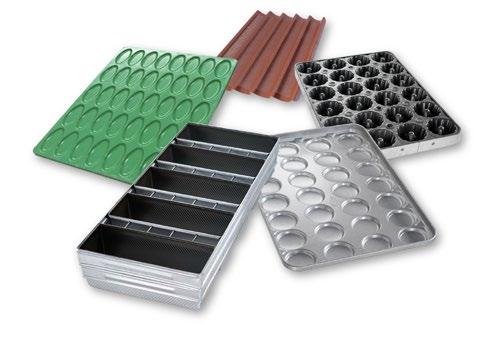
www.bakingbiscuit.com 02/2023 TRADE SHOW 14
Read more from the exhibitor Q&As, on www.bakingbusiness.com
Hall 14 D01
Hall 15
C 38-2 6 A31
Hall
© Schubert
© Syntegon
© American Pan
DIOSNA Innovative Mixing in Hygienic Design
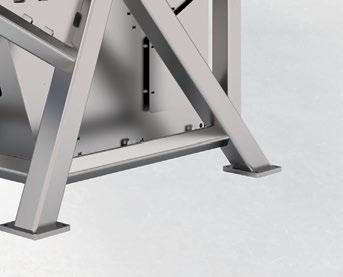
For dough at its best
The Wendel Mixer of the Hygienic Design series connects high performance mixing with an open construction to allow easy cleaning, and thus a very fast switch between di erent recipes.

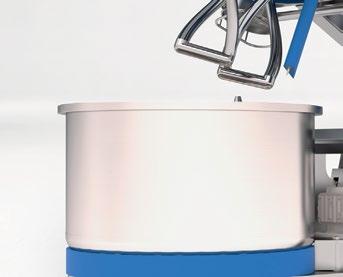
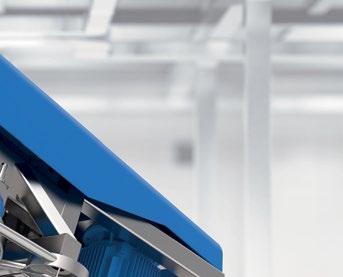
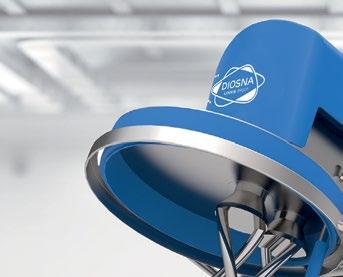

As it is typical for DIOSNA Wendel Mixers the method of gentle processing of the dough by folding allows perfect dough development in shortest possible time, avoiding crushing of seeds and fruits if used in the recipe. The WH240 ”A” model allows fast succession of batches by the easy change of mixing bowls.
DIOSNA enjoys worldwide recognition as specialist for dough processing and pre-dough fermentation on a large scale. Machine equipment and biotechnology represent the ideal interaction for best results in food production.
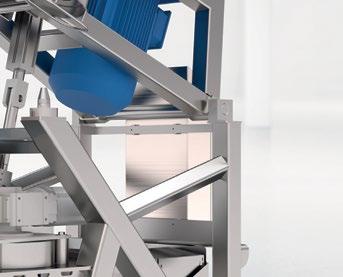

→ Ideal for all types of dough, masses and bars
→ Gentle dough and ingredient processing
→ Optimal integration in existing line production



→ Easy cleaning - reduced downtimes

→ Hygienic design mixers with changeable bowl or direct ground discharge

 VISIT US # 4C23
VISIT US # 4C23
Easy as pie
Sweet or savory, pies are a perennial favorite among consumers. Highly specialized production lines are developed to ensure production meets quantity as well as quality needs, efficiently. They are also designed to be operated with ease and safety.
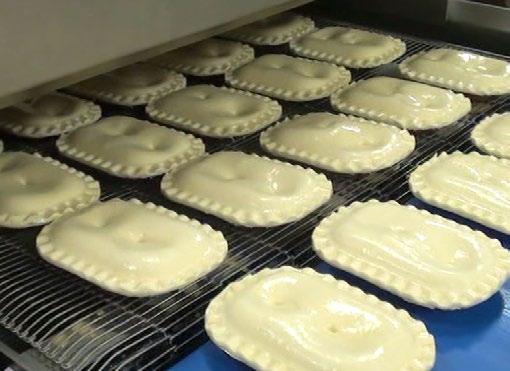 By Catalina Mihu
By Catalina Mihu
More often than not, technology lines for pie manufacturing are dedicated to certain varieties only, which means they can enjoy the benefits of a high degree of sophistication. Different modules can also easily handle variation or volume expansion when needed.
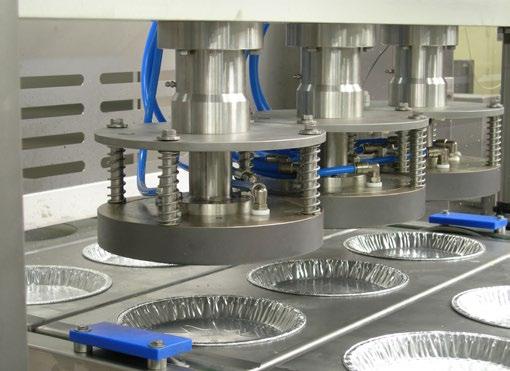

AMF Tromp pie line
However, the automated line designed by AMF Tromp can flexibly support a wide range of pies, too, either savory or sweet, in a baking tray, in foils, or in paper cups. They can bake the pie shells only, pies with the top opened or closed and pies with or without a lattice decoration. “With this wide range, we can make almost every pie from any culture or continent. We love a good challenge, and our Innovation Center is also open to developing new pies together with
”Sweet and savory pies may look alike, but can also be very different, depending on culture and eating habits.”
potential customers,” says the specialist responsible for pie systems at AMF Tromp, Hans Besems (Executive Product Manager). This diversity is apparent in AMF’s installations making pies worldwide.
Different modules are behind this wide variety: depositors are used for all types of fillings, from more liquid, quiche types, to chunky fillings such as meat for the traditional
www.bakingbiscuit.com 02/2023 PIES, CAKES, DONUTS 16
+
© AMF © AMF © Sea Wave –stock.adobe.com
Hans Besems, Executive Product Manager, AMF Tromp
British pie. “Sweet and savory pies may look alike, but can also be very different, depending on culture and eating habits,” Besems explains. Usually, the spot depositor – or piston depositor – is selected for the process on the AMF Tromp pie line, as the option best suited to pie fillings and the ingredients in them. This system is designed for accurate volume dosing of semi-liquid fillings as well as fillings with large inclusions such as meat chunks or fruit pieces.
Universal depositors from the Unimac series can also be used for different fillings, sweet or savory. In this range, the Unimac XL is the most frequent choice, as it is suitable for fillings such as almond paste or cake batters.
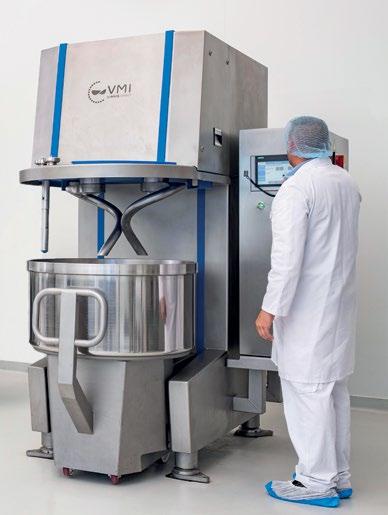
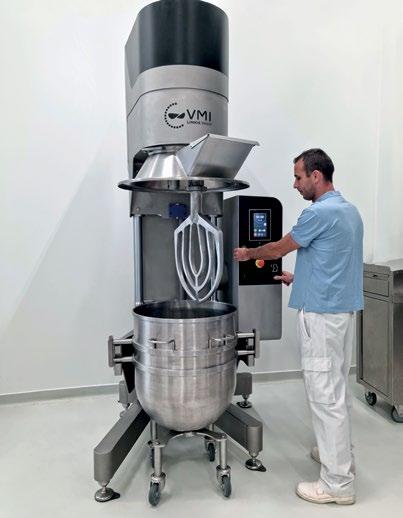

Applying various toppings on pies requires a different depositing solution: the Tromp Target Applicator. It can handle crumble (streusel) toppings, sugar, sprinkles, nuts, or chocolate. This equipment accurately deposits the ingredients in the center or pre-defined spots on round pies, so that no ingredients are lost, which not only saves materials but also keeps the production belt clean.
Aside from these depositors, a spraying system can also be integrated for water or glazes. It can also spray egg yolk to create a crust. Other decorations such as sprinkles, nuts, chocolates and sugars are dispersed via roll strewers. For even more decoration options, shapes can be added with a rotary molder.
For (pre-)baking the pies, AMF recommends a Den Boer Multibake tunnel oven with impingement heating or a direct-fired system. “Depending on the type of pie, we advise the best possible Den Boer tunnel oven, which fits the process and products baked in it,” Besems explains. It is chosen for the equipment lineup of the pie line because of the baking results it offers for pies, along the entire width of the oven belt. Its airflow and sustainability features also back the recommendation, AMF highlights. “The ROI on ovens like this is very high, and maintenance very low.”
The AMF Vesta Spiral Conveyor is also a part of the pie line, to cool the pies gradually and consistently, before freezing and packaging. It also creates a buffer for large amounts of products coming out of the oven, which supports high-volume manufacturing. Alternatively, a step cooler could also be an option, also offered by AMF Den Boer.
Personalized lines – check
AMF has installed numerous pie lines worldwide, most of them very much dedicated to one type of pie or only a few, as requested. Variations in production mostly mean different shapes or sizes. With the dough remaining the same in most cases, it is mostly the fillings that may vary more frequently.

PIES, CAKES, DONUTS ADVERTISEMENT
AMF Tromp pie line, process steps for sweet pie:
+ Foil cups de-nester
+ Placing cups or foils in baking trays
+ Depositing dough billet in foil
+ Pressing the pie shell
+ Depositing filling sweet
+ Top lid placement (a dough sheet, a lattice, or from a rotary molder)
+ Crimping unit to press the top and bottom halves of the pie together, with decorative edges possible
+ Optional decorative deposit on top of the pie
+ Glaze or egg yolk application for a shiny, appealing crust
+ Crumble application
AMF Tromp pie line, process steps for savory pie:
+ Foil cups de-nester
+ Placing cups or foils in baking trays
+ Dough billet deposit in foil
+ Pressing the pie shell
+ Depositing filling, both warm and cold
+ Top lid from a dough sheet (shortcrust or puff pastry options are possible)
+ Pressing top to bottom halves of the pie with a crimping unit
+ Glaze or egg yolk application – crust
+ Pop decorations with cheese, seeds, herbs or other toppings, with applicators or strewing units
Pie-making is a complex technical setup. For flaky pies, specific systems are used for carrying and detecting the foils in which the pie base is created, for example. “Not one pie line is exactly the same as another; but, AMF Tromp pie lines can support quick changeovers between various types of pies, because of the configuration set up before even building the line,” Besems explains.
AMF’s pie line can handle entry-level volumes up to highcapacity production. “If it’s a dedicated line for a single type of pie, production volumes are often higher, compared to more flexible lines that do several changeovers per shift,” the specialist adds. To optimize production, and mitigate staff shortage, more steps can be automated.
For new product development, AMF Tromp can make changes on existing lines, or create a side step in the process, to allow the production of an additional type of
pie. “For instance, two or three pie lines making use of one giant tunnel oven could be very efficient,” Besems suggests. Or, at the beginning of the process, an AMF horizontal mixer can be set up to feed several pie lines – a step up in efficiency, since the pie shell recipe is often the same.
Pie, tart and cake line –Verhoeven Bakery Equipment Family
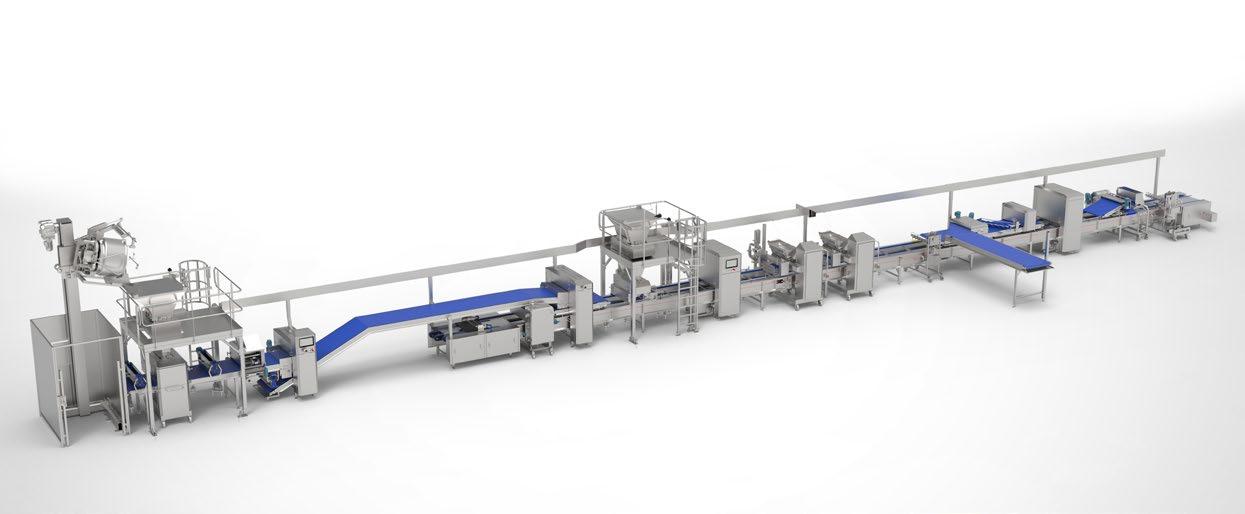
With BVT’s turnkey line, product variety extends beyond sweet and savory pies, which by themselves make up for a diverse product range, to begin with. The fully automated Pieline can handle all types of pies, tarts and cakes. All kinds of dough can run on this line, from puff pastry to Danish pastry, or shortcrust pastry, yeast dough, and dough for cakes, muffins, and even chiffon cakes, and more. To further add to the possible variety, all kinds of fillings can be combined with the doughs, meaning meat, fish, quiche lorraine, or sweet fillings, to give some examples. Furthermore, all sizes are also on the NPD table with this line, from small forms to full trays. Various shapes are also possible – round, square, or oblong. Lidding the top surface can further extend product variations, as well as lamination. The capacity of a BVT Pie line extends from approximately 1,000 pieces per hour to more than 45,000 dough pieces per hour. Product sizes can start from 30 grams, and go as high as 2,800 grams.
To optimize the possible process/product combinations with various degrees of automatization, BVT customizes each line to the unique requests of the manufacturers. “Sometimes, we even combine tarts, cakes and pies on one line, from the make-up to the packaging,” Verhoeven Bakery Equipment's team details. The company designs turnkey solutions that can also include its known vacuum cooling technology. “There are some boundaries to the customizations we can provide, but not many. We can combine different product groups in one line, even with different processes,” they add. An underlying focus throughout the various types of equipment integrated into this industrial line is process automation, so that there would be no manual interference from make-up through to packaging.
BVT can incorporate any depositor from its portfolio onto the Pieline. The company works with the customers to identify the best choice for the particular job, analyzing aspects
www.bakingbiscuit.com 02/2023 PIES, CAKES, DONUTS 18
© BVT
VERSATILE SMART TECHNOLOGY & BELTING SOLUTIONS
Ashworth Bros., Inc. revolutionary “Smart Technology” products report real-time remote monitoring, and when paired with the Eye-Link belt provides the best of both worlds for your baking manufacturing facility.

SMARTSPIRAL®
Remotely monitor multiple spirals at different plants in real time.
EYELINK®
Versatile steel conveyor belts can be designed and manufactured to satisfy the most demanding of applications.

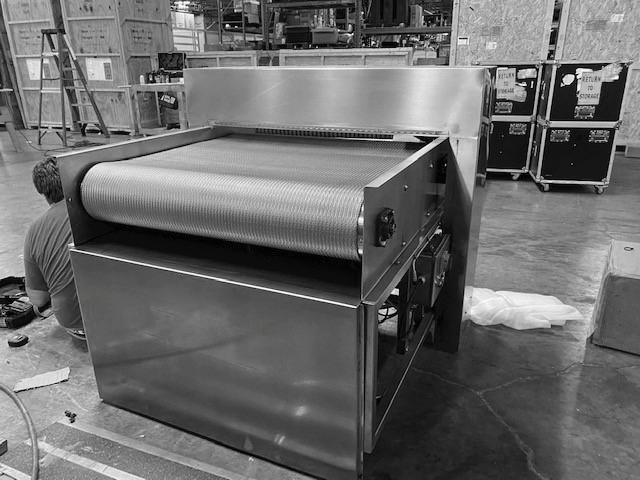
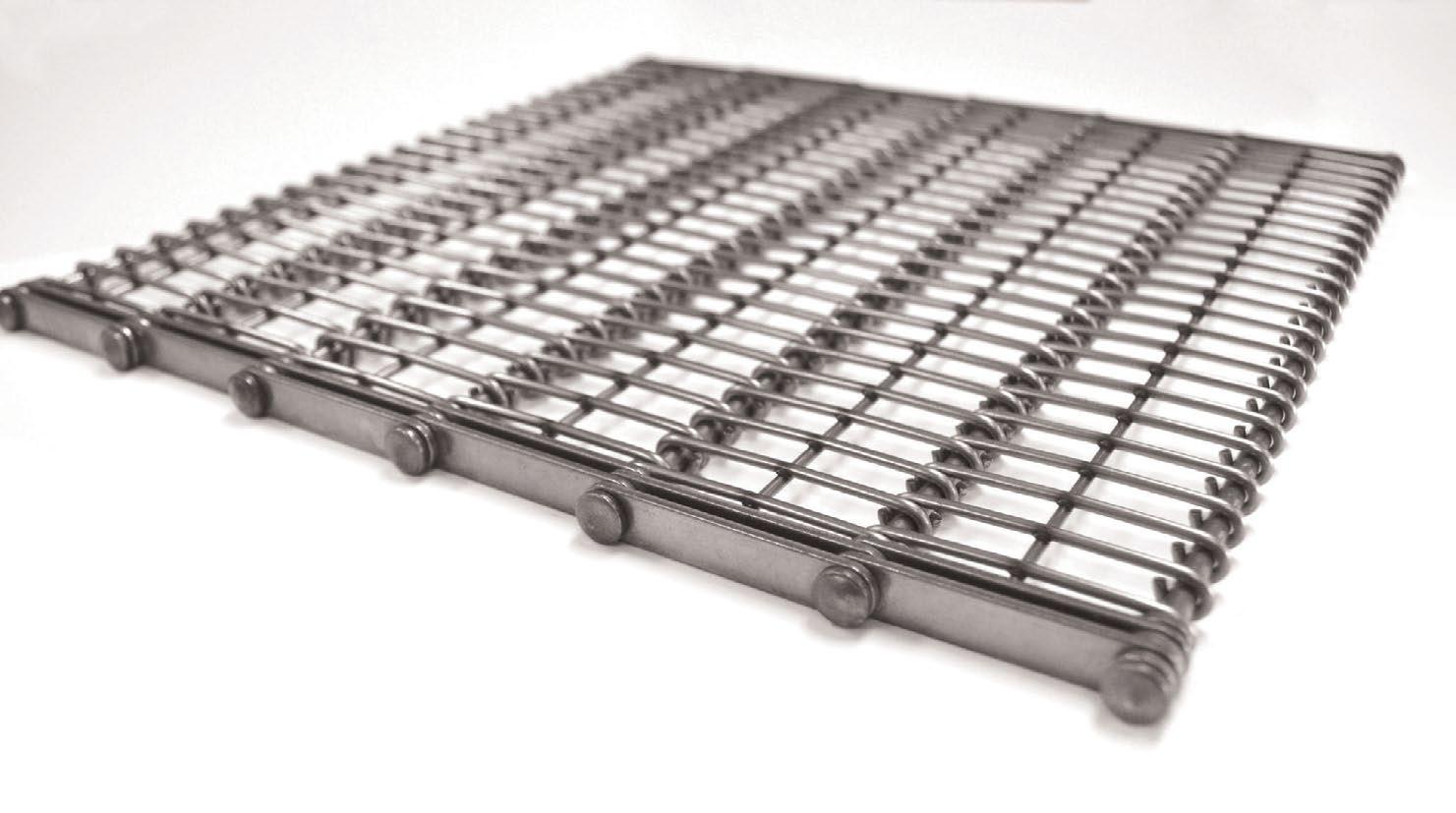
SMARTOVEN®
Monitor key metrics used to identify changes in equipment operating parameters.
us today
forward,
+31 20 581 3220 or visit us at www.ashworth.com/bakingandbiscuit
Contact
to let us help you move your business
Call
VIEW OUR RECENT SMARTSPIRAL® SUCCESS STORY!
EYELINK
SMARTOVEN SMARTSPIRAL
”Cooling times can be dramatically reduced; for example, a big apple pie takes around 150 minutes to cool down. With vacuum cooling, this time is brought down to three minutes.”
Verhoeven Bakery Equipment specialists
such as the viscosity of the fillings and desired volume variations.
To fully tailor its turnkey line, BVT offers a comprehensive array of options. Looking at the makeup stage, choices can be made between:
+ Paper/tray feeding the forms machine
+ Equipment to support different kinds of dough
+ Different types of pressing heads
+ Different types of depositors
+ Rotary molder for the top cover
+ Bypass line for the top cover
+ Decoration cutters
+ Decoration food printers
+ Decoration strewers
Handling can also be completely automated: trays are swapped and stored, loaded into the oven and then unloaded, after baking. Automatic depanners are in place, adjusting to the requirements of vastly different products, from pies and cakes to tarts, muffins, or quiches.
Packaging is also included in the BVT turnkey line (BakePack End of Line Solutions), with options for dedicated systems for primary, secondary and tertiary packaging.
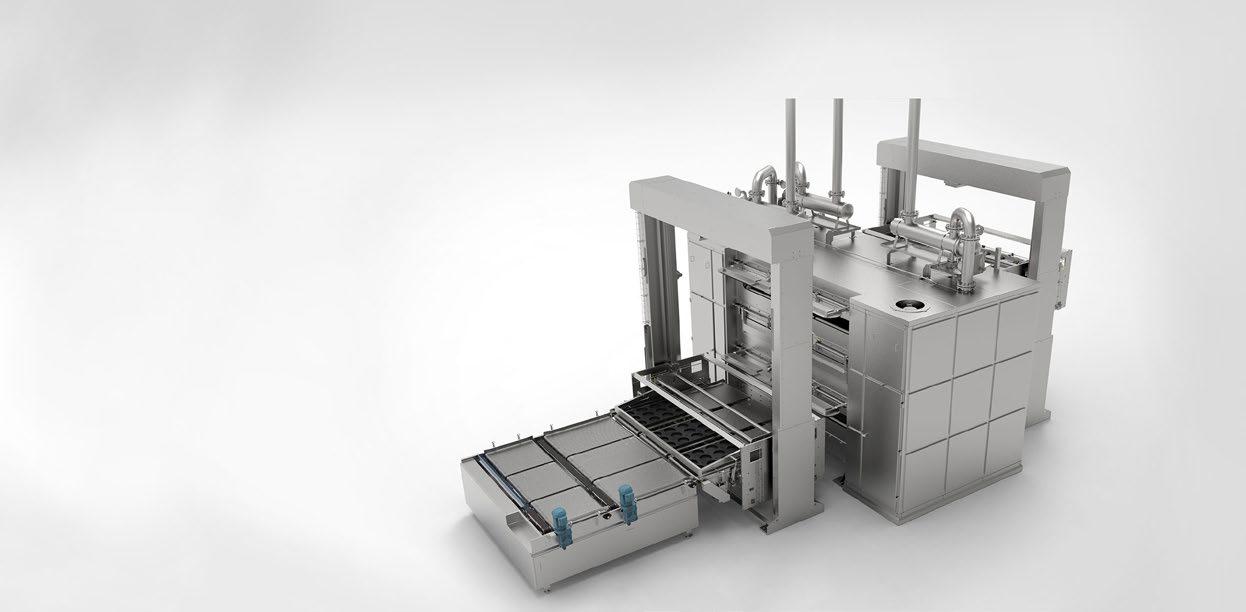
“For us, every request is a new request. We reverse engineer the products; so, when you know the end products you want to achieve and the required capacity, we design the lines,” BVT explains.
Vacuum cooling
Vacuum cooling technology is a major component of the Pieline, BVT underlines. “Cooling times can be dramatically reduced; for example, a big apple pie takes around 150 minutes to cool down. With vacuum cooling, this time is brought down to three minutes. Next to the reduced cooling time,
energy and time can be saved up to 40% of the oven capacity.” Vacuum cooling also provides better product quality, with optimum organoleptic properties and more volume, compared with conventional cooling, BVT says. It also has a positive outcome over the shelf-life of the products. This technology also saves precious floor space, as it will occupy, at the most, 20% of the space required by traditional coolers.
To optimize operations with this line, it should be regarded as an entity, and not as an assembly of various individual machines, BVT recommends. “An end product is the result of all individual machines throughout the line. Its success is a measure of how well they all work together.”
Pie and quiche line – Rademaker
The Rademaker Pie and Quiche line is developed to produce an extensive assortment of pies and quiches from all cultures, ranging from meat pies, fruit pies, egg tarts (such as the beloved Pasta del Nata) and cheesecakes, to Melton pies, pork pies and even quiches; pies with an open top or closed with a dough lid, or crumbled top. Products can be made in different foils, paper containers, metal baking trays, hoops, tins as well as indented baking trays.
The line can be built with working widths ranging between 600 mm to 1,200 mm wide. Depending on the width and the product size, production capacities can go as high as 20,000 pieces per hour – for pies 80 mm in diameter. For 250 mm-diameter pies, the hourly production capacity can reach 5,200 pieces, while for egg tarts or Pastel de Nata, it sits between 9,000 to 36,000 per hour. It can also produce 3,000 – 7,200 quiches per hour, to illustrate some of the main product categories.
This versatile line can be used interchangeably for a wide product variety without the need to make any changes to
www.bakingbiscuit.com 02/2023 PIES, CAKES, DONUTS 20
© BVT
Proven to Lower Energy Costs
ePAN® designs from American Pan have been proven to save bakeries money on every bake. In fact, one customer reduced gas usage by almost 8% year over year by switching to an ePAN.


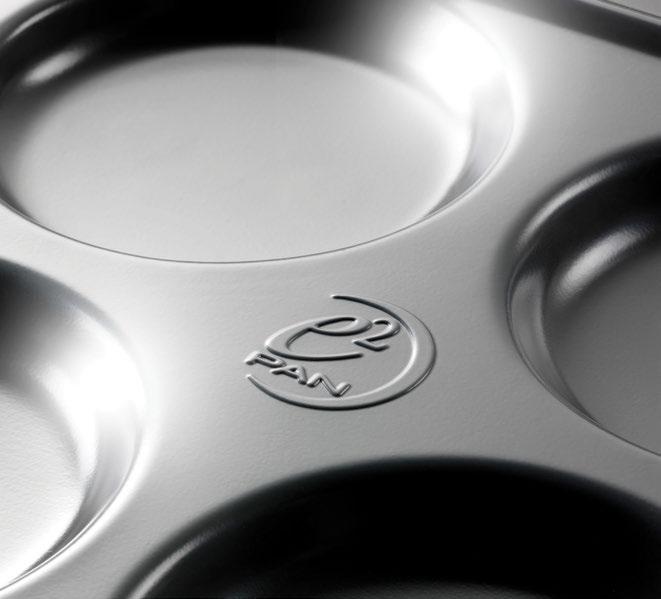
Energy solutions like wind turbines and solar panels are a major investment and require a large amount of dedicated space. ePANs can fit on your existing bakery line and save you money from the very first bake. Here’s how:


DECREASED OVEN TEMPERATURE






Oven temperatures have decreased by up to 30°C when using ePANs.*
REDUCED BAKING TIME
Baking times have been reduced by up to 45 seconds.*
REDUCED WEIGHT OF BAKING TRAYS & TINS
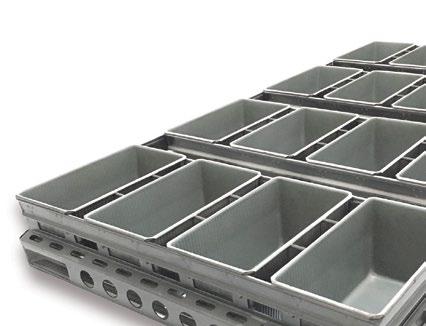
Trays and tins are up to 30% lighter, requiring less energy from bakery systems and employees for handling.*


*Results from real bakery experience. Results may vary based on specific bakery conditions.

Jesper Albertsen | VICE PRESIDENT OF SALES +45 23 68 51 85 | jalbertsen@americanpan.com FIND US IN: Germany | Romania | Spain | Sweden | Turkey | UK | USA Visit us in Hall B1 - Stand 110!
its configuration. When changing product sizes, the only changeover required is that of the product-specific parts (e.g., the size and shape of the foils and platens, the size of the blocking and crimping head). And changing from sweet to savory pies is simply a manner of switching to the desired filling in the depositor. Of course, fillings are widely varied in consistency – here, Rademaker recommends the best-fitting depositor for the specific product/range: “Either a spot depositor, mono pump or gearwheel depositor can be used, in combination with nozzles that can have both ‘shut off’ and ‘blow off’ functionality. In some instances, ‘shower head’ nozzles are used to deposit through multiple outlets over the surface of the pie,” Rademaker’s specialists illustrate. Before the pie line is delivered, filling accuracy is optimized for the characteristics of the desired fillings in the operator panel, and the settings are saved.
”By thinking through these ‘what ifs’ in advance, the goal is to achieve a line design that can allow different depositors or applicators to be placed at different locations or stages through the process.”
Rademaker specialists
Depositing accuracy is ensured with direct-drive servo motors, which allow repeatable, recipe-controlled position settings from the beginning of the run. Multiple depositing parameters are defined and can be controlled, including target weight, speed, or starting and closing time of the nozzle (and many more that will further fine-tune the process). “Some features such as ‘no product- no deposit’ can be designed into the line. For example, if a foil is missing on the conveyor, then the depositor does not deposit into the empty spot,” Rademaker shares.
For product decoration, there are several available options with this pie and quiche line, including dough lids with different designs, in addition to lattices and crumbs.
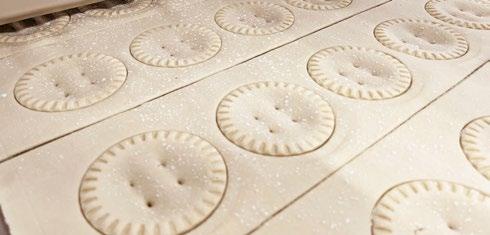
Drawing from the wish list
To design a line that produces complex products to specifications, Rademaker collects all possible ‘wish list’ items
Rademaker pie and quiche line specifications
+ Working widths between 600 mm to 1,200 mm wide
+ Production capacities of up to 20,000 pieces per hour (for pies 80 mm in diameter)
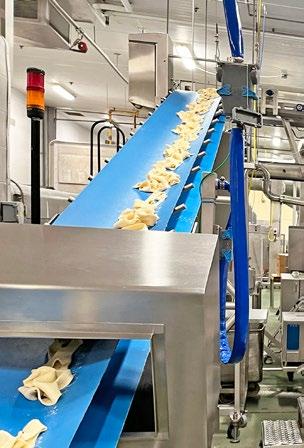
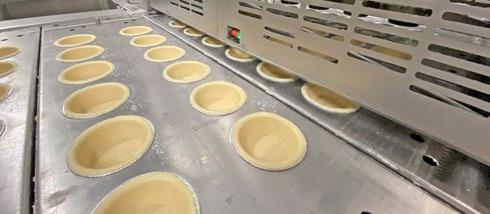
+ Quiche production ranges from 3,000 to 7,000 per hour
+ Egg tarts/Pastel de nata capacity between 9,000 to 36,000 per hour
first. “By thinking through these ‘what ifs’ in advance, the goal is to achieve a line design that can allow different depositors or applicators to be placed at different locations or stages through the process. It is also important to understand the ingredient delivery to the production line that these products may require,” the specialists explain.
Rademaker’s R&D has recently focused on improving the line’s safety, maintenance and hygiene features. The pie and quiche line allows fast removal of essential parts for easy access during cleaning and maintenance operations.
“Of course, all parts are designed within the ergonomic Rademaker Sigma ® guidelines with a special focus on rounded edges and process visibility,” Rademaker’s team explains. For improved safety, access to various key parts is controlled by sensors. The same guidelines are also reflected in the line’s hygienic features, as they take into consideration various standards and certification requirements, such as the machine’s finishings, angled surfaces, food-contact-approved plastic parts in the standard blue color, and having hinges and bolts reduced to an absolute minimum. It is also entirely designed with washdown in mind.
Servo controls have also been optimized, to accurately control positioning as well as motion. Rademaker details: “For example, the servo control of a production line ensures the proper positioning for each of the units’ operations, which is critical if the line is required to run multiple sizes.” Digital line control, whether PLC or PC-based, is given, and utilized for recipe management and line performance monitoring.
With this and any fully automated production line, process optimization is a direct result of several factors, from the setup and ensuring it is maintained in good condition. The consistency of the incoming ingredients and operators’ skills also contribute to operational efficiency. Continuous specialization in running and maintaining technology is as important as having the latest-generation technology. It spells success for the people, the production line, and the quality of the products – for any of today’s and tomorrow’s favorite pies, too. +++
www.bakingbiscuit.com 02/2023 PIES, CAKES, DONUTS 22
© Rademaker
1000+ INSTALLATIONS WORLDWIDE DIRECTDRIVE™ SYSTEM

When Intralox invented the original low-tension spiral conveyor solution in 2012, it raised the bar for spiral technology beyond the reach of other belting manufacturers.
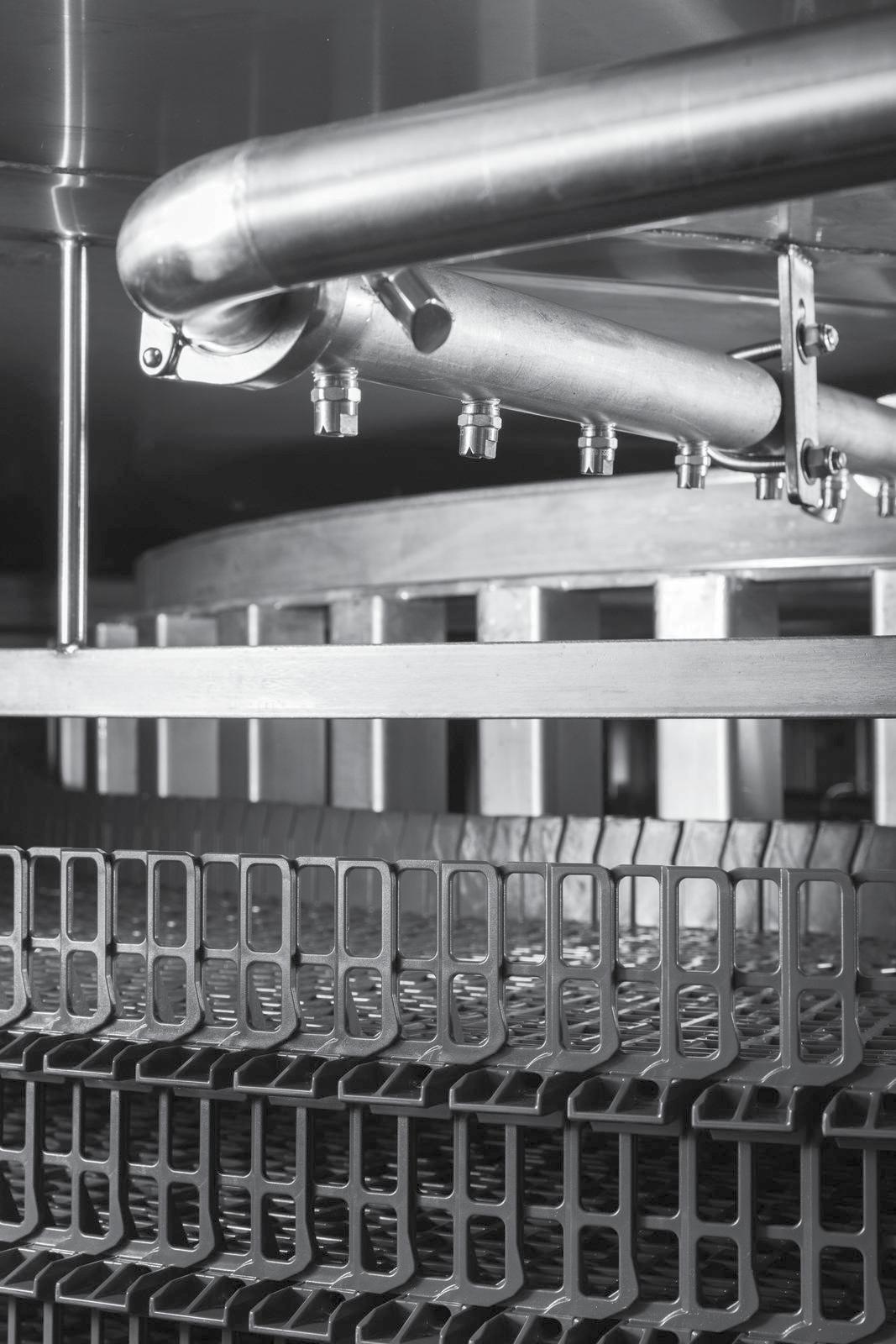
The One and Only DirectDrive System delivers:
Improved production
Reduced maintenance
Simplified sanitation
Scan QR code to see it in action.

Europe enjoys authentic American tastes
Consumers across Europe are embracing American sweet bakery favorites, donuts included. This growing demand is met with ingredient solutions that can help formulate popular choices – from blondies to New-York-style cheesecakes and peanutbutter fillings – and any number of trendsetting creations inspired by America’s darling flavors.

Dawn Foods’ consumer survey found that 4 out of 5 European consumers who tried American sweet baked goods said they liked them. In addition, Gira’s recent research shows that a fifth of all fresh pastries consumed in Europe were US-style products. UK consumers, in particular, enjoy them – the ratio is 62% for them.
Experts from Dawn Foods, a bakery ingredient company with deep roots in American bakery, share expert insight into this dynamic market including different formulations, manufacturing insights and guidance into donut innovation and American-favorite sweet bakes.
Consumer demand for American-style sweet bakery goods is on the rise in Europe. Sarah Browner (Market Research & Insights Manager EU & AMEAP) illustrates: “In retail, for example, the annual average new product launch is up by 16% for donuts and 13% for cheesecake, over the past five years.” (Source: Mintel Database)
Wanted: ‘Authentic American’
Dawn Foods recently launched three new solutions that meet the growing trend for American-made flavors in Europe: a Blondie mix, a New York Style Cheesecake mix and a Crunchy Peanut Butter filling, all part of its ‘Authentic American’ range.

+ The Dawn Blondie Mix
This mix helps create a variety of new pastries to add to brownie offerings, helping with consistent results even with variations in the production process. It is designed for easy depositing and can be used with the recommended recipe, or to create new, unique blondie specialties. “Blondies need to be chewy, sticky, and gooey

in the middle,” Alexandre Deschamps (International Application Manager), explains.
+ The Dawn New York Style Cheesecake Mix

A true New York-style cheesecake needs to bake gently, without cracking its surface, or over/underbaking it. This mix can help solve such challenges, to bake cheesecakes consistently and with less room for errors in the process. It also brings versatility to the NPD table: it can be combined with several fillings and flavors.

+ The Dawn Balance Crunchy Peanut Butter Filling
This true-American product can be used as a filling or topping, pre- and after-baking. Made with 100% peanuts, it is naturally vegan and has no added sugar, packed with proteins and fibers.
While they come with several recipe ideas and recommendations, there are no limits to how all the ‘Authentic American’ products can be used. “They can be easily combined: think Peanut Butter Blondie or even combining the three into a Blondie with Peanut Butter & Cheesecake filling. You can also play with shapes, formats and flavors: Cheesecake on a stick, Peanut Butter filled cookies, or bring exciting flavor combinations by adding Dawn Compounds and/or Dawn Delifruit Fruit Fillings to cheesecake applications,” Dawn Foods‘ Alexandre Deschamps (International Application Manager) tells us. Ultimately, the new products are designed for creativity in developing signature applications.
An American donut in Europe
It’s donuts’ time on the European market. It is a landscape that has been advancing over the past decades and it’s going up by leaps and bounds today as consumers are
www.bakingbiscuit.com 02/2023 RAW MATERIALS 24
+
all pictures: © Dawn Foods
enjoying their donuts with exciting new icings, fresh tastes and better-for-you properties.
Donut shops of all kinds, from multinational franchises to independent craft businesses, have been opening at an impressive rate over the past 20 years. Product innovation is also matching this growth: donut launches in Europe peaked in 2022 (Source: Mintel research), and more donut launches are expected this year and beyond, Browner anticipates. Widely popular on both sides of the Atlantic Ocean, there are different approaches to donuts – in preparation and indulgence. For example, donuts are more of a morning choice or a snack that has a texture closer to bread in the US, while in Europe, consumers and manufacturers regard it more along the lines of cakes – softer, with a delicate structure, and are more popular with the afternoon coffee or tea, Marie Frigo (Category Marketing Manager Dry EU & AMEAP) said.
Over the next years, donut creations will continue to evolve and break boundaries with new flavors, textures and formats. Tapping into several emerging consumer trends, Dawn predicts even stronger growth for donuts in the coming years. One of the rising trends is veganism; as it continues to grow in all bakery products, innovation in donuts also looks into joining in with exciting, new offers. “According to our recent Global Bakery Trends Survey, 61% of European consumers who have tried vegan sweet baked goods, said that they liked it. Dawn has made it easy for bakers to start their donut vegan journey with a wide assortment of high-quality mixes, icings and glazes – all vegan or vegan suitable,” Browner detailed.
regardless of the experience of the staff in each shift. Dawn Foods introduced donut mixes on the market, which help with the consistency in product quality. Offering new and exciting choices is always key to having a competitive edge. It’s also true for donut innovation with the potential to entice new consumer groups. Dawn offers solutions for new flavor profiles, or product segments, such as the vegan mix, for example.
Looking at the manufacturing process next, achieving quality consistently is an acquired skill. “We like to say that 50% is in the bag of mix and 50% is in technical know-how,” Eikemper says. With this mindset, the company offers customized ingredients solutions and supports the bakers in selecting the right ingredients and optimizing production. Answers are found on all donut-related topics: “Do customers require large-scale production, to decorate orfill the donuts, or do they want different shapes? What ingredients are needed and what type of equipment?”
A yeast-raised donut, for example, needs to be cut into shapes with a dough cutter, which means the sky is the limit to the products that can be made, from rings, donut holes and long johns to twists, pumpkins, hearts, or stars. By comparison, a cake donut, which is deposited, only allows a limited range of shapes; but, it shines when made into mini donuts, whereas yeast-raised donuts do not handle miniature sizes well. Depending on the intended outcome, Dawn claims it can provide the ingredients and recommend the type of equipment that is best suited.

Guidelines to good donuts
To support bakers with new product development in donuts, Dawn shares their extensive experience and research findings, on which the company builds its new product innovation. The specialist addresses the most difficult challenges with the solutions it offers. The most difficult one has nothing to do with any particular step in donut production, and everything to do with the production process overall – namely, the lack of skilled people. Herman Eikemper (Sr. International Application Manager): “The biggest obstacle is finding skilled labor that can operate the donut production line. We know the equipment and the processes through and through and have formulations that work in every situation. They have been developed to save time, to be ‘foolproof’, to ensure a consistent outcome every time,”
Dawn’s donut mixes can be used following the recommended instructions, but they can also serve as a base for a lot of other new creations. Take, for instance, the Dawn Exceptional Raised Donut Base: it can be the start for donuts with various fillings, icings, or glazings, and it can also be used for deep-fried pastries, or sweet and savory yeast pastries, and yeast dough. Dawn partners with equipment suppliers to support bakeries in their effort to perfect donut creation, with a complete view of the product and the proces. Earlier this year, the ingredient specialist teamed up with RONDO for a seminar where each shared their expertise on making and baking donuts to perfection and to even better service and support donut manufacturing customers. +++
25 RAW MATERIALS www.bakingbiscuit.com 02/2023 ADVERTISEMENT Markenqualität und Frische aus Tradition. The Nut specialists KOENIG Motiv3 91x53.qxd 07.02.2007 11:23 Uhr Seite 1 · Almond- and Hazelnut-Products · roasted, sliced, diced and slivered · Sugar–coated and salted Products · Specifications KOENIG BACKMITTEL GMBH & CO. KG • Runtestr. 22 • D-59457 Werl Tel. 02922/9753-0 • Fax 02922/9753-99 E-Mail: info@koenig-backmittel.de • Internet: www.koenig-backmittel.de Quality-brand and freshness with long tradition
”The ‘Authentic American’ ingredient solutions can be easily combined: think Peanut Butter Blondie or even combining the three into a Blondie with Peanut Butter & Cheesecake filling.”
Alexandre Deschamps, International Application Manager, Dawn Foods
Dough-How, donut-how
Each process stage, from mixing to creating the dough band and donut shapes, through to baking, contributes to their final quality. It also holds opportunities to optimize production, such as correctly introducing re-work dough into production, for semi-automated and fully-automated operations.
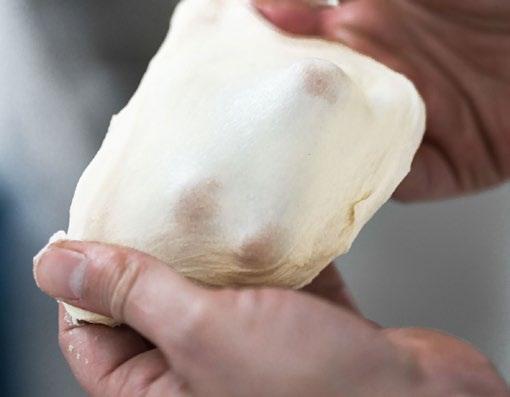
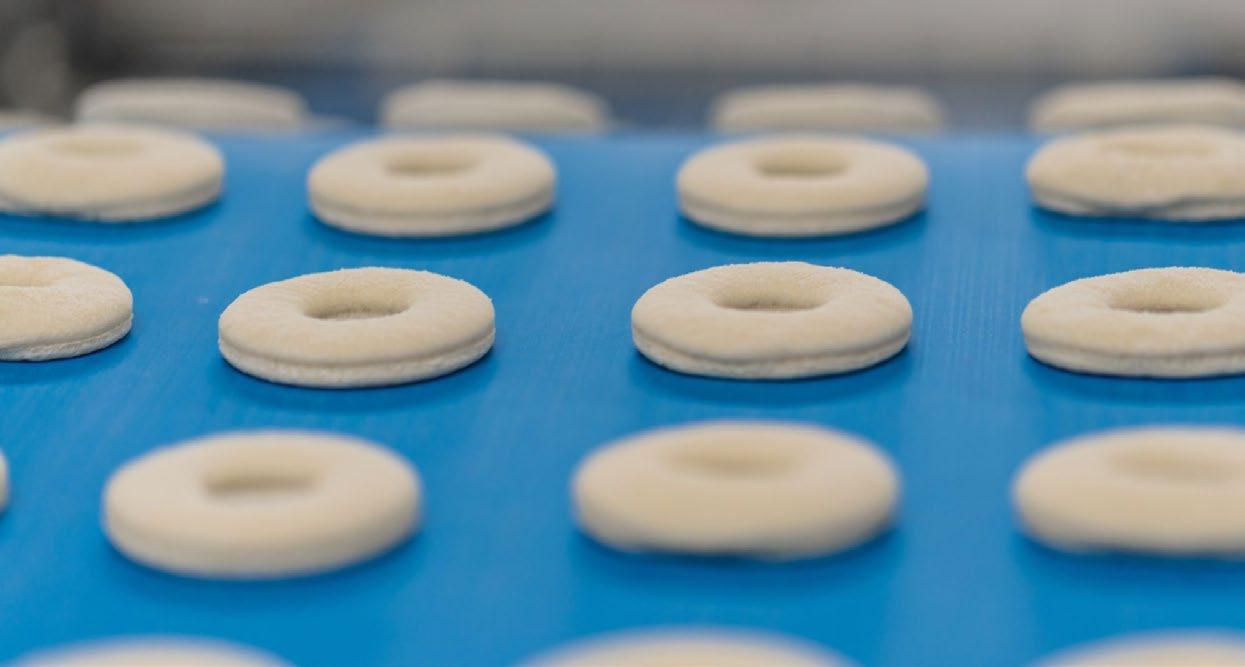
Earlier this year, Dawn Foods’ Europe & AMEAP team held a seminar together with RONDO, where specialists from both companies pooled together their expertise in everything donuts. It was held at RONDO’s Dough-How Center in Burgdorf. RONDO and the ingredient specialist worked on being able to speak the same language when visiting common customers and working on improving their donut manufacturing process, Alexander Weissbach, Head of Technology and Product Management at RONDO Burgdorf AG, pointed out.
Semi-industrial and industrial donuts, all donuts
Depending on the automation level of the operation, RONDO can provide training about the recipe, the process, and the critical control points in manufacturing. Some of these points that startup bakeries should master can be handling the dough and the dough band tension, managing the size and the weight of the product, how the dough should progress along the line, what temperature parameters should be maintained throughout the process, and using re-work dough. It acts like sourdough; as it starts to ferment and swell, it builds up taste, and the water is better bound to the flour. “There are no downsides to using re-work dough; on the contrary, it is beneficial to include it as it makes the donuts denser, tastier and it helps to keep the donut fresher for longer,” RONDO’s specialist points out.
For semi-industrial operations that want to upgrade and/or expand, the focus of guideline recommendations will be on achieving a constant production flow. A process based on manual operations can afford to have resting last for some minutes longer than optimum when making smaller product batches; however, on a semi-automated or fully-automated line, the dough rheology should be always consistent, or it will impact the final shape of the products, Weissbach
explains. “At this stage, all the process guidelines should be followed strictly. All critical control points must be in check,” he recommends.
Going out of optimum parameters here will influence the dough sheeting process and, ultimately, the roundness of the product. RONDO offers an example in this regard: a bakery cutting the dough manually for their donuts upgraded to a Cutomat automated machine from RONDO. At first, they were not able to perform the cuts to obtain the donut shapes out of the dough band: the dough would not be cut all the way through, or there was too much tension on the dough. The sheeter was the prime suspect initially, but the issue came from incorrect dough development. The dough had not been mixed long enough, making it hard to sheet and then cut.
Another scenario where process and ingredient knowledge help optimize donut production is when reintroducing re-work
www.bakingbiscuit.com 02/2023 PRODUCTION 26
+
© RONDO © RONDO
THE ONLY BAG CLOSURE THAT’S HOME COMPOSTABLE.


dough into production. The recipe needs to be slightly adapted from time to time. It may cause the dough temperature to rise when it is introduced into the mixing bowl, so the balance needs to be restored to bring the dough on the line at the correct temperature. On semi-automatic systems (batch production using equipment such as automated sheeters and cutting tables), the scrap dough mesh is automatically removed from the line, then collected in boxes to be brought back to the mixer by an operator. Four or five people need to run this type of line, for tasks including dough scaling, sheeting, cutting and panning. Each of these processes can be gradually automated on the semi-automated line.
For semi-automated lines (continuous sheeting lines), several process steps are automated. Depending on the level of automation, the number of operators can be reduced to 1-2, while increasing output two- or three-fold, compared with a semi-automatic system. The Smart Donut line is an example of such a line.
For continuous production on fully-automated lines, cross conveyor belts can bring the re-work dough back to mixing. The correct amount of re-work dough will be added into the mixer, also automatically (around 50% of the full volume being prepared), no manual scaling is required. An automated line requires only one operator and achieves even higher outputs.
When having a new line installed, operators receive specialty training from RONDO’s master bakers. They are instructed on how to check if the setup is done correctly and what the dough band looks like when it isn’t (the dough surface is no longer smooth). They also learn what adjustments they need to make in such cases.
From dough band to donut
Once the dough band is formed in the desired width and thickness, product variations will only involve swapping the stamping die, for unlimited shape options, from the classic ring and circular shapes to more unusual patterns (stars, apples, pumpkins, etc.). This changeover is done in a matter of seconds, RONDO explains. In addition to variety in shapes, RONDO equipment is also flexible around different recipes. Dough bands made of sweet yeast dough, gluten-free dough, free-from products such as egg-free dough, or free-from additives can run on the sheeting line with the same setup. ‘Donut-adjacent’ products can also be made in the same way – coffee rolls or cinnamon buns, for instance. In this case, the dough band is made slightly thinner than required for donuts, and then sprinkled with cinnamon and rolled into shape.
Some types of dough pose more challenges than others. Free-from doughs, for example, are more fragile and stickier. The laminating and sheeting line can be easily adjusted to overcome challenges; flour can be dispersed on the dough band, the specialist illustrates.
Some of the biggest donut producers in Europe work together use RONDO sheeting and laminating fully-automated equipment. Well-adjusted processes and recipes are run continuously, without encountering problems over the years. +++
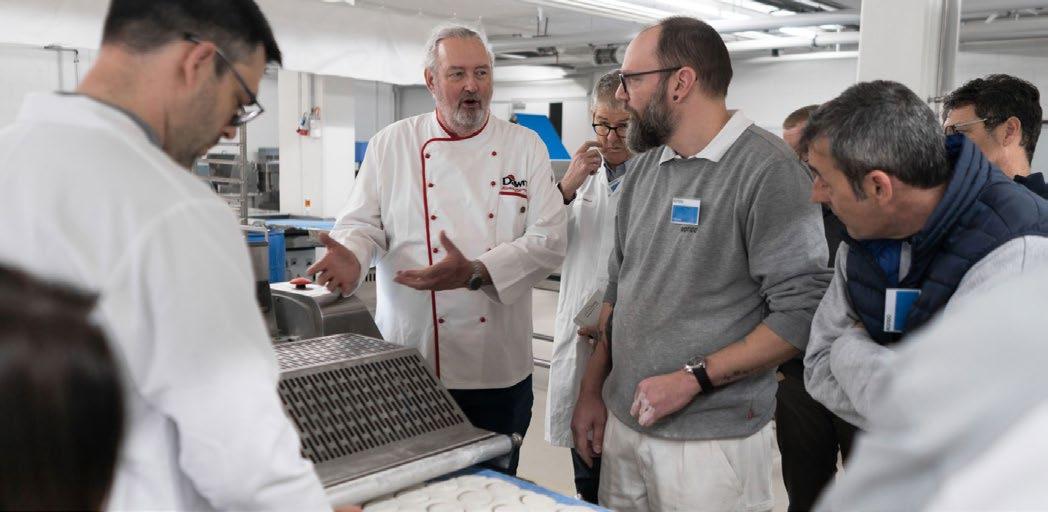
www.bakingbiscuit.com 02/2023 PRODUCTION 28
”There are no downsides to using re-work dough; on the contrary, it is beneficial to include it.”
Alexander Weissbach, Head of Technology and Product Management, RONDO
© RONDO






THE INTERNATIONAL NEWSFEED YOU NEED. Subscribe to the Bakery Mirror newsletter, delivered to your inbox every other Wednesday. www.bakingbiscuit.com © carl-heyerdahl-unsplash.com
BELT
CLEANING
A clean start
Cleaning is an essential aspect of belt maintenance. It is important in terms of complying with food regulations as well as ensuring visually appealing baked goods. Looks are not everything, though: clean belts also guarantee product safety, for every production run.
Cleaning baking oven belts can be a dirty, timeconsuming task, causing downtimes of two days or even more, when done with any of the traditional methods – chemicals, detergents, or dry ice. This spells considerable loss in production runs. Even more so, when the first batch baked right after the cleaning is usually discarded, for safety.
Cleaning requirements for baking belts are mainly determined by the type of product being baked and its ingredients; some might have higher fat or oil contents, some can be covered in flour, while others might be high in sugar or contain fruit. Sugar crystals are usually the most challenging material to clean off oven belts, as the sugar sticks on the belt tightly and can scratch its surface if it builds up on parts inside the oven, explains Marko Leber, Global Product Manager, Food, IPCO.
Planning cleaning cycles is another major factor that influences the belt cleaning process. “We learned from experience that some oven users delay the job to keep production running; but, that only makes it more difficult. When cleaning is put off for too long, the layer of baking residue becomes so thick that it’s impossible to remove by hand,” Leber points out. Finding the right balance for the right cleaning times depends on the ingredients in the bakery products. To expedite the process, IPCO recommends laser cleaning where applicable.
Laser cleaning vs. traditional methods
The immediate benefits of using laser cleaning technology for baking belts are the convenience and speed of the
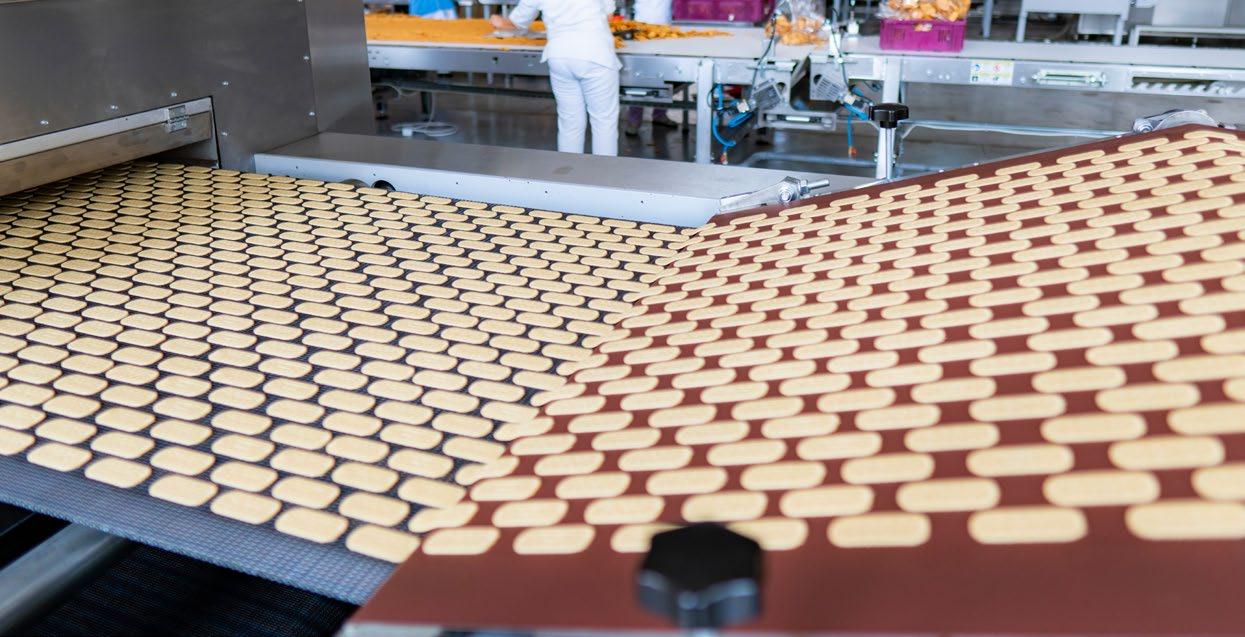
process. With it, cleaning can be carried out at a rate of 10-15 sqm/hour, depending on the level of build-up. “This means that a typical baking oven belt can be cleaned in a day, depending on the belt size and accumulated buildup,” Leber highlights. What’s more, production can begin right away, with no wasted batches. Product discharge is also considerably improved.
Laser cleaning has zero impact on the structure of the belt itself, as it is an entirely contactless process. By comparison,
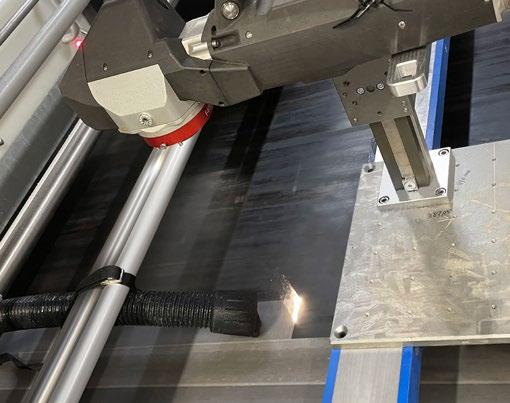
”The belt drive is turned on and, as the belt travels under the laser, baking residues are burned off.”
Marko Leber, Global Product Manager, Food, IPCO
www.bakingbiscuit.com 02/2023 PRODUCTION 30
+
© IPCO ©
sergey–stock.adobe.com
scrapers or brushes are abrasive and can impact the belt’s lifespan. “Using caustic soda (NaOH) to soften the residues before manually scraping them off, aside from being an extremely time-consuming and dirty process, also requires rinsing in abundance, to avoid contamination, and then immediate drying of the belt, to prevent it from rusting,” he explains. Using ice, on the other hand, can be a more effective method than chemicals. But, there are also some drawbacks to it, including the time needed for preparation as well as challenging (and costly) transportation and storage requirements.
Another major benefit is that this is a much cleaner process than other technologies, environmentally friendly and, in most cases, will not require closing down adjacent lines, IPCO’s specialist adds.

How does laser cleaning work?
IPCO has recently started providing laser cleaning services, for solid and perforated steel belts, using a high-power industrial laser. “The laser head is installed above the belt on a manually controlled carriage rail and the beam is focused on an area approximately 70 mm wide. The belt drive is turned on and, as the belt travels under the laser, baking residues are burned off,” explains Leber. Once the strip has been cleaned along the entire length of the belt, the laser head is moved across the carriage rail to the next section; this process is repeated until the full belt width has been cleaned.
The system is equipped with an external vacuum system that collects any remaining carbon residues, while also extracting any fumes that might be generated while cleaning. “Any residual debris left on the belt will be trapped by the scrapers or can easily be removed by hand,” adds the specialist.
The whole process is set up and managed by a single technician, including dismantling it when cleaning is completed. For safety reasons, a specialist from IPCO will perform the entire procedure, wearing appropriate protective gear for eyes and ears. A laser hazard zone must be established for the cleaning process, covering an area of at least 5 m from the equipment, in all directions (measured from the center of the belt at the spot were the device is placed). While cleaning operations are underway, only authorized staff may access the area, wearing laserprotective eyewear.
In Europe, the system needs a 380 V / 50 Hz power supply in the form of two 5-pin, 16 Amp connections. The oven must also be capable of running at a speed of 4 m/min or less and needs to be at room temperature before cleaning can begin (there are slightly different requirements in North America).
MDI Stratos
The indirectly heated multi-deck tunnel oven MDI STRATOS is an extraordinary combination of compact design, modularity, power and control. The heat transfer to the product takes place mainly by radiation, but also by contact and natural convection. The decks are totally independent, also allowing the management of different production rates and/or different products to be baked simultaneously.
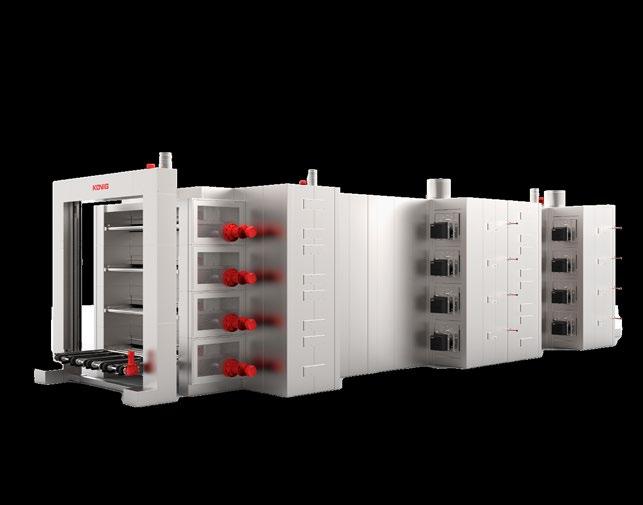
SDI Pharos
The indirectly fired single-deck tunnel oven SDI PHAROS takes advantage of the same technology developed for the MDI STRATOS oven, yet with variable working widths available and burners in tower configuration.
SDD EOS
The directly fired single deck tunnel oven SDD EOS has been custom designed and realized for baking flat bread and typical pizza to perfection. This oven can reach incomparably high temperatures (500°C), yet it can also be widely modulated down to 150° C for baking any type of rustic product.
Koenig Group Baking Equipment 8045 Graz · Austria info@koenig-rex.com · koenig-rex.com
TUNNEL OVENS FROM KOENIG
CRAFT. FOR YOUR PERFECT BUNS. 4.-10.05.2023 Visit us at our booth at Interpack in Düsseldorf! Booth No. 3E47 PRODUCTION ADVERTISEMENT
TECHNOLOGY MEETS BAKER‘S
The added bonus is that it’s an essentially green process: no water, detergents, or chemicals are used, so there is no waste going into the drains.
Cleaning all belts
Every bakery set up has its preferred cleaning methods; some might steer clear of using water in the production area, and many will use high-pressure air. Whenever possible, moving pieces of equipment to a dedicated cleaning room might also be a practice. “Whatever method is chosen to clean belts and equipment, it must include a complete inspection to ensure that cleaning is satisfactory,” underlines Jonathan Lasecki, Director of Engineering, Ashworth.
running high-pressure air on them regularly might be all that is required to blow off any residues. However, this does not replace the periodic, thorough cleaning and rinsing that only hot water can provide, Lasecki illustrates. Belts that come in contact with wet dough products, on the other hand, require frequent cleaning to prevent debris build-up. In this case, “Hot water and or hot water under steam pressure may be required to control and remove product build-up on equipment. Each baker must determine the requirements necessary for their products and processes,” he adds.
Ashworth custom designs its belts with cleaning in mind: they include wide openings to allow debris to be easily removed. Where support openings need to be smaller, the surrounding areas within the belting are made smooth and as curved as possible to minimize product from adhering to the belt surfaces. “Our Omni-Grid 360 belting features a built-in hygienic design where the edge welds are specifically designed for easy cleaning. The welds are smooth and completely cover the hole through which the rod protrudes. This minimizes the areas for product to collect and the smooth surfaces allow easy removal of product that may collect on the weld surfaces during processing,” Lasecki details.
Working and cleaning
Monitoring should help determine the best cleaning schedules. Changes in the drive amp consumption are a good indicator that the belting might require cleaning, Asworth’s specialist explains: “As the ‘soils’ build up on the belt and system, drag friction will increase and the power consumption used to drive the belt will increase.” Another indicator could be belt tensioning, which may increase due to product contamination that increases belt drag.
To minimize downtimes for cleaning conveyors, Ashworth recommendations include planning and having well-trained staff on standby. “A well-trained staff with the necessary equipment that is readily available and understands sanitation requirements will minimize cleaning/sanitation time.”
New belts start with a ‘run-in’ period, to ‘settle’ all moving components. “For metal belts, this might take up to 24 hours or more, while plastic belts may only need a few hours. Regardless, the belt needs to be thoroughly cleaned after this run-in period to remove manufacturing and any wear debris that may have been generated,” the specialist explains.
Belts for different jobs will have different cleaning approaches. If they carry dry bakery products, for example,
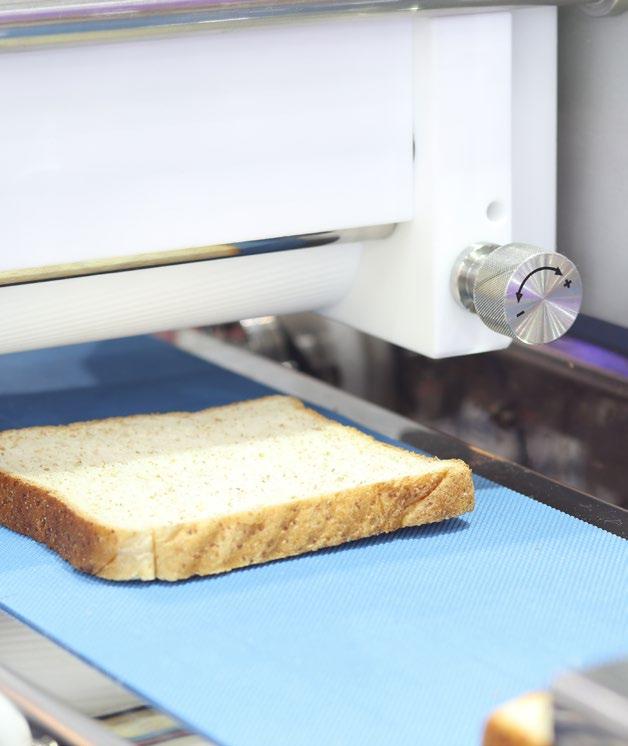
One person can manage cleaning a small transfer conveyor, while a large cooling spiral conveyor may require three-four trained workers to complete a cleaning routine in the required time. Equipment-wise, belt washers placed at the infeed or discharge of the conveyor will clean the belt as it passes through, while spirals’ CIP systems wash and sanitize the enclosure. Depending on the cleaning task, cleaning solutions that can be used may include high-pressure water, high-pressure air, or steam.
Alternatively, in some cases, simple tools will be called into action: a bucket and a scrubbing brush. +++
www.bakingbiscuit.com 02/2023 PRODUCTION 32
”As the ‘soils’ build up on the belt and system, drag friction will increase and the power consumption used to drive the belt will increase.”
Jonathan Lasecki, Director of Engineering, Ashworth
© warut–stock.adobe.com
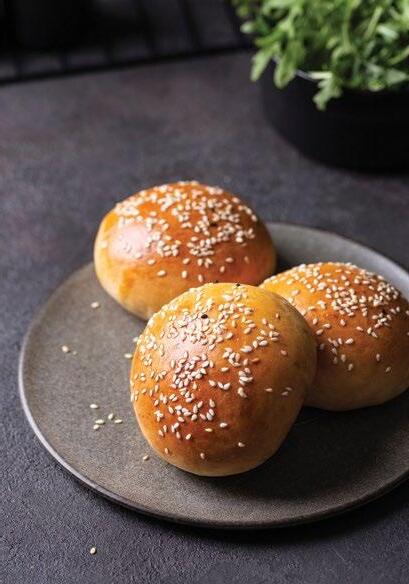
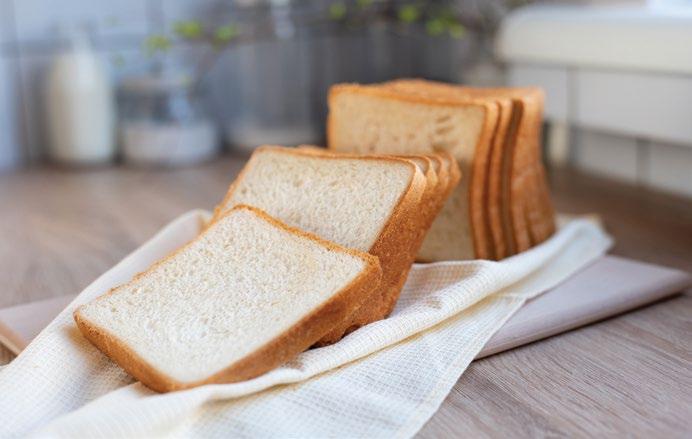


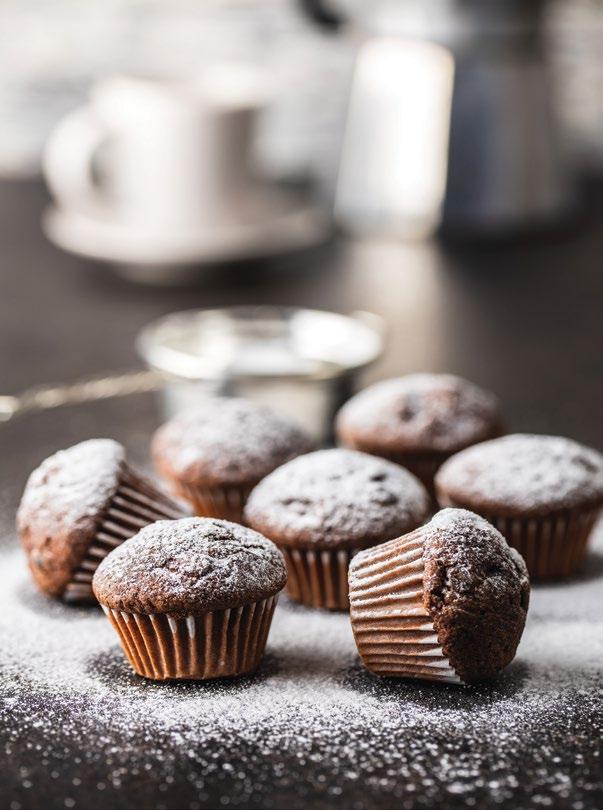
ONE CONTINUOUS PERFECT BAKE FROM END TO END TOP OF THE LINE Breads | Buns | Cookies | Crackers | Cakes | Muffins | Pastries | Pies | Pizzas MIDDLEBY’S TURNKEY BAKERY SOLUTIONS HAVE GOT YOU COVERED. Middleby optimizes best in the industry end-to-end solutions and provides you with top tier lines for all your baking needs, with complete customer support throughout equipment development, installation, and production. HUNGRY FOR MORE? Bread Dough Make-up Machinery Complete Biscuit & Cracker Solutions Professional Baking Machinery AGV Robot Loading | Unloading High-Capacity Bread and Bun Conveyorized Systems Interleaving | Stacking Interleaving Materials Freeze | Chill Steam | Proof Automated Guided Vehicles Proof | Bake | Cool Pan Shakers | Topping Applicators Water Splitters | Closure Systems High Capacity Serpentine Solution for all Bakery Categories Washing | Sanitizing Drying Professional Mixers Deposit | Portion | Fill | Pump Automated Logistic Solutions See you at Interpack Düsseldorf, Germany, May 4-10, Stand 1/B31 & 3/A55!
The proof is in the technology
There are clear requirements for the proofing process. The dough may be resting, but its transformation process does nothing but rest. The question is, always, how to improve the process? Technology brings new answers.
+Technology innovation not only ensures the right temperature, airflow and humidity settings, but also addresses a priceless ingredient in baking: time. Reading Bakery Systems (RBS) recently launched a new multipass proofer, which was designed to do both. It is designed to be flexible in function, foot print, and form.
The multi in multi-pass

The new multi-pass proofer automati cally controls the heat and humidity inside the proofing chamber, perfecting the environment in the proofing chamber to allow the yeast to develop, resulting in flavorful end products. It precisely controls proofing parameters to optimize the process so that the dough develops faster, with improved consistency. The new proofer enables controls via an intuitive PLC touchscreen. “Setpoints can be entered onto the touchscreen to increase or decrease air circulation speeds, increase the temperature, or change the relative humidity settings. The system uses thermocouples and humidity sensors inside the chamber to monitor the actual conditions, and the system automatically adjusts to achieve the setpoints,” explains Chris Kline, R&D Engineer, RBS. Process and machine monitoring is done at the Operator Interface Terminal, where the operator has access to all recipe and process controls, which can all be adjusted during production as conditions change.
The temperature of the proofer can be adjusted from 70°F to 100°F (21°C38°C) and the relative humidity of the proofer can be adjusted from 45% to 85%. The temperature and humidity settings for different products can be saved in the recipe screens, to optimize proofing efficiency. Moreover, the
provides insulation and is designed with doors and access points to facilitate cleaning and inspection, which also contributes to minimizing downtimes.
The multi-pass proofer is built with five independent conveyors with variable frequency drives (VFD). Their speed can also be adjusted via the touchscreen interface. Each of the transfer points between the conveyor tiers is also fully adjustable, to optimize product transfers.
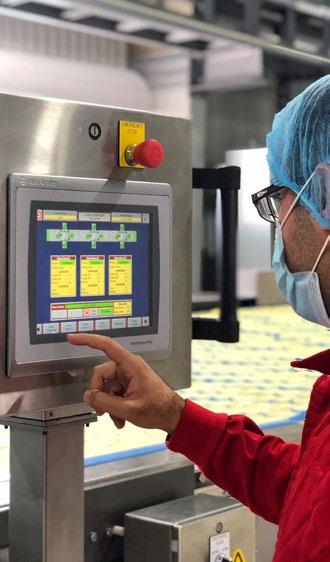
proofing distance in a 9 m-long machine, saving big on floorspace in the bakery. “We’ve taken the multi in multipass to a new level. This design has a lot of efficiencies, but the smaller footprint vs. a comparable production line is significant,” Kline highlights. Aside from freeing up space in the bakery, nesting multiple conveyors into a single enclosure lowers the overall volume of heated space, which also saves on energy requirements.
The new proofer requires a minimum of five meters of ceiling height. It can come with different widths, to match the equivalent RBS oven widths. The standard design has an overall length of 16 m, including the infeed and discharge conveyor extensions.
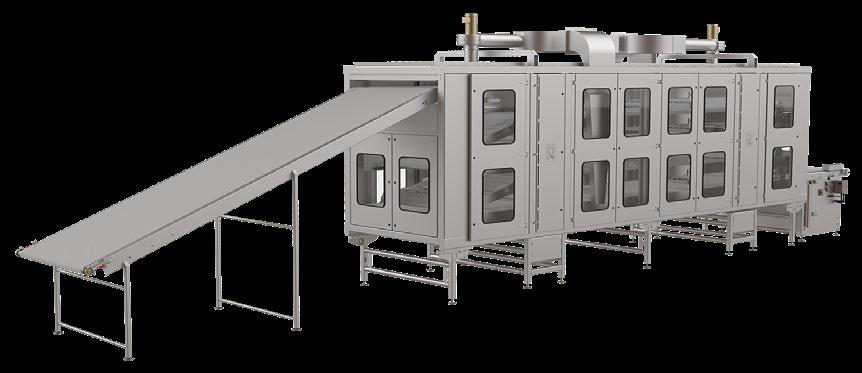
RBS designed this machine to meet its SafeShield Program standards, making cleaning and sanitation much easier. The specialist illustrates: “The drive roll bearings are located in the drive cab inet area – and not near the product zone – allowing for ‘exposure-free’ bearing lubrication and inspection.”
One way to go is up
Another recent development in proofing technology is built around flexibility. Mecatherm’s M-UB Han dling System supports all process stages and promises homogenous
www.bakingbiscuit.com 02/2023 PRODUCTION 34
© RBS © RBS
treatment of all products, on any type of support.
When proofing large volumes of dough, the stakes are higher in maintaining optimum conditions. All products must be exposed to the same airflow – at the required parameters. Measurements are taken continuously to regulate temperature and humidity rate according to settings defined by the baker. “The filtered, warmed and humidified air is blown in the proofer through textile blowing ducts positioned in the lower part of the enclosure. This air is then collected in one or more points of the upper part of the proofing enclosure. Air conditioning features and air flow circulation are calculated and adjusted following product rates,, proofing parameters and enclosure volume and design, on a case-by-case basis to make sure that each product receives the same quantity of hot air,” explain Marie Laisne, Marketing Manager and François Retailleau, Product Manager, Lines and Digital solutions, from Mecatherm.
Several proofing systems handle products directly on belts. With vertical solutions, such as Mecatherm's MVS and M-UB proofers, products are placed on proofing boards or pans.
Mecatherm’s vertical proofing pro -
+ Hygiene: the systems are very easy to clean
+ Food safety: products are not in direct contact with the conveying system, limiting contamination risks
+ No risk of dough damage/deformation (no transfers from one conveyor to another)
+ Simple changeovers (flexibility for multi-product lines)
Proofing can be managed in two steps, which improves product quality control, by allowing different proofing temperatures in two different zones. “It is possible to have a warm zone first and a second, colder zone after. The second zone, the ‘retarder’, helps to provide better steam on the product, for a better volume and a better shine on the product surface, as well as a better development of aromas,” Mecatherm’s team explains.
Mecatherm’s MVS and M-UB modular proofers are designed to provide a high level of flexibility. The MVS proofer allows a wide range of capacities and dimensions, meaning it can operate with a wide variety of pans and peelboard sizes. They are also suitable for heavy-duty loads of up to 10 tons per module, Mecatherm highlights.
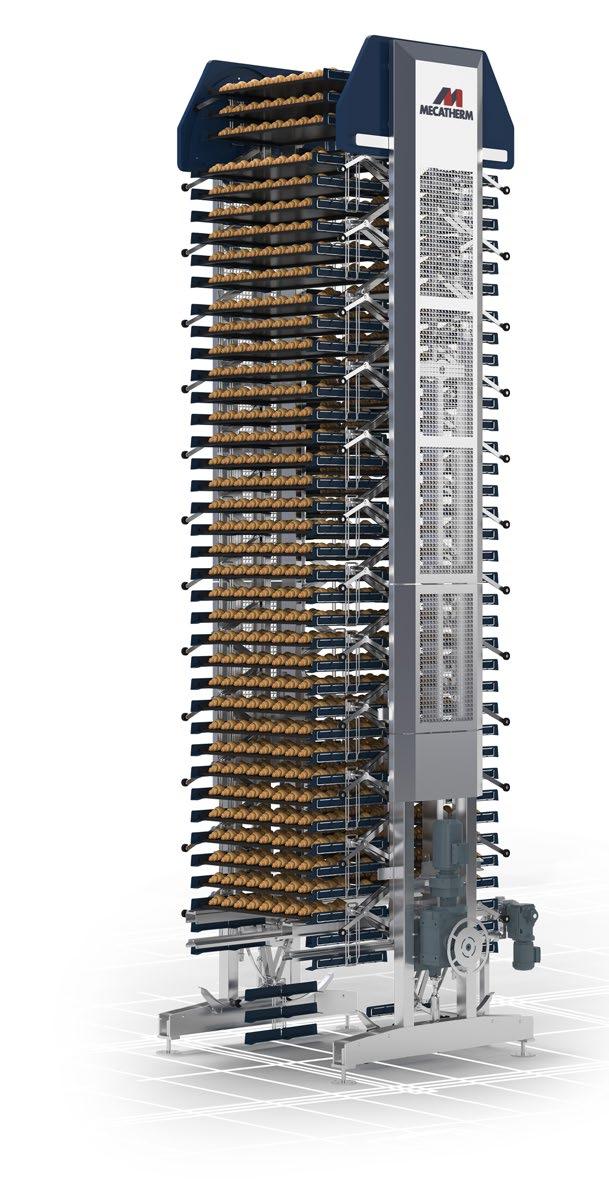
The M-UB proofer features a smooth top transfer system, with no shock,
that have different proofing times: some modules can be easily bypassed to lower proofing time, when needed. Mecatherm adjusts proofing solutions as needed; for example, if products with different proofing times run simultaneously, a solution will be put in place to allow quick product transitions, which is a specialty of all Mecatherm proofers.
Innovations in every aspect of proofing help optimize the process and contribute towards the operation’s overall efficiency. End products with perfect color, texture and flavor are the result.
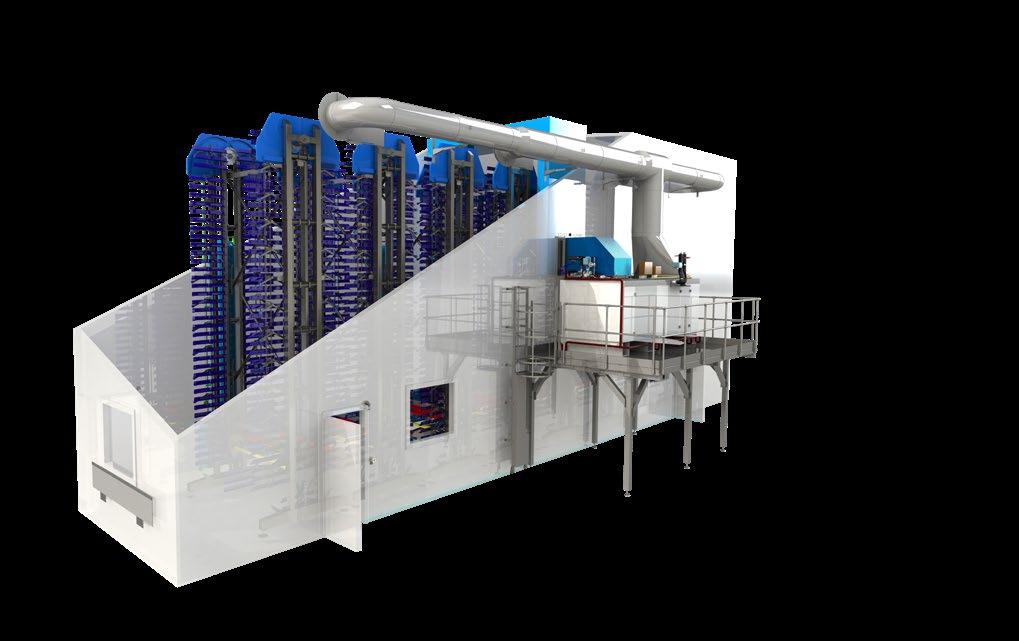
35 PRODUCTION www.bakingbiscuit.com 02/2023
+++
© Mecatherm
©Mecatherm
HYGIENE Easygoing, easy cleaning
Hygiene priorities ruled the drawing board for new equipment revisions at SOLLICH. The Thermo-Flow ® cooling tunnel debuts a wheel-out heat exchanger, to allow the operator to clean it easily and thoroughly. Efficient cleaning is an improved feature we will find on numerous SOLLICH machines this year, most of which are to be unveiled at interpack.
+R&D at SOLLICH is focusing on the optimization of the manufacturer’s production process, by improving machine uptime and equipment handling. The company has recently revised its entire portfolio, which is designed to meet hygiene standards, and has designed several new features for various machinery that will further improve their efficiency and cleanability.
The Turbotemper ® , for example, is a machine for chocolate pre-crystallization, or tempering cocoa butter crystals into melted chocolate. SOLLICH now provides it with a complementary cleaning device, which allows quick and easy mass changeovers. The mobile cleaning device can be flexibly operated within the production site for different tempering machines with a throughput of up to 3,600 kg/h. The Turbotemper ® can be cleaned with vegetable fat or cocoa butter. Ralf Schaeffer, Executive Director, SOLLICH explains: “The external circulation system guarantees optimum cleaning of the tempering column, combining the role of its filter with functions such as automatic temperature adjustments, using different speeds and movement directions. The corresponding pipework can be cleaned with a ‘pigging system’.”
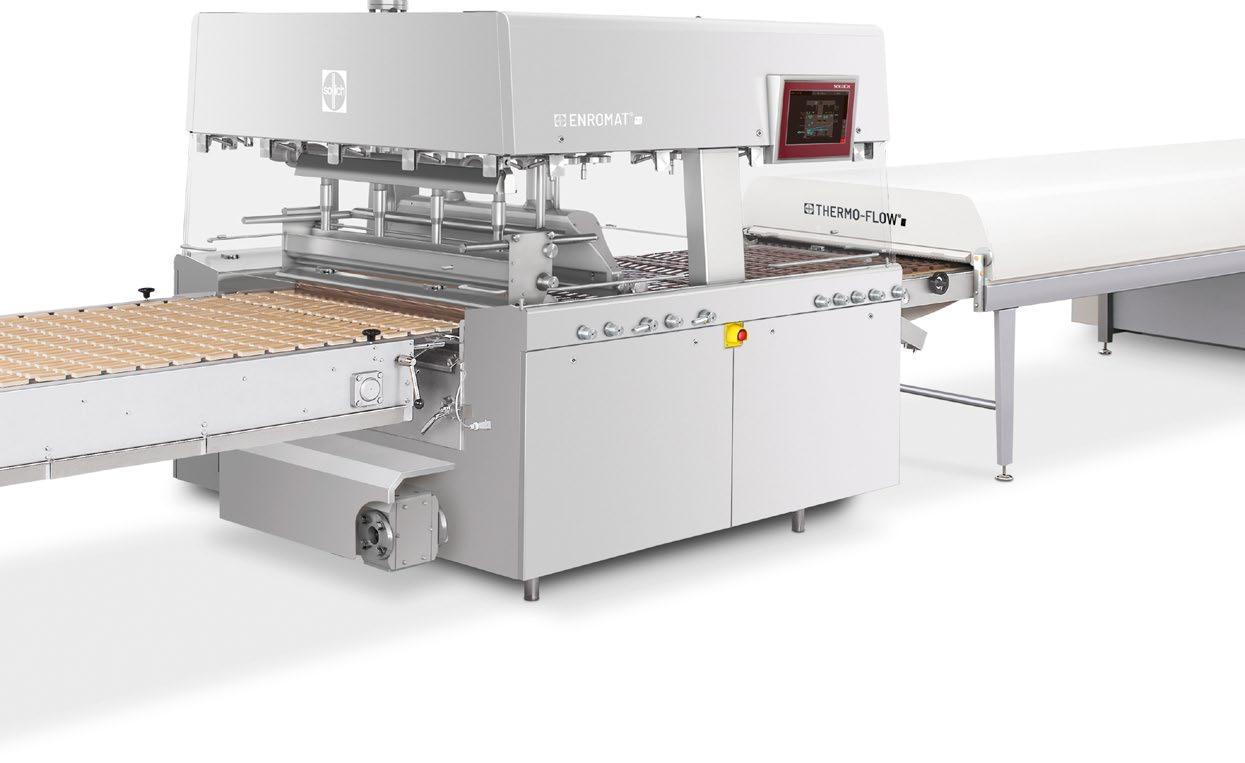
“In the future, the production lines will work as if all the experienced operators were combined to ensure perfectly efficient production.”
Ralf Schaeffer, Executive Director, SOLLICH
The Enromat ® enrobing machines are also among the machines that have received a makeover in hygiene functionality and now come with Cleaning-in-Place (CIP) systems. All enrobing machines are built to meet increasingly strict hygiene requirements, SOLLICH explains, in addition to a mobile washing station and new additional accessories for cleaning.
Designing an enrober with a CIP system does not simply mean that the cleaning system is added onto it; rather, every component and feature is engineered to be able to withstand cleaning with water if needed, while also keeping in mind maintaining the quality of the enrobing process itself. Hundreds of SOLLICH enrobers with automated or semi-automated cleaning are in operation, Schaeffer points out.
www.bakingbiscuit.com 02/2023 PRODUCTION 36
New technology concept for the Thermo-Flow ® cooling tunnel
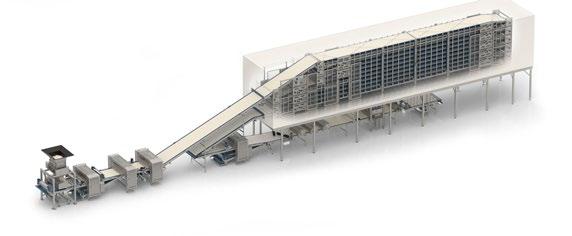
The Thermo-Flow ® cooling tunnel segment now comes with an absolute novelty: the wheel-out heat exchanger, which allows the operator to achieve easy and thorough cleaning. It can be simply disconnected from the cooling media supply to which it is attached with a fast connection. “The efficient heat exchanger has a big surface and is located in a small space. Therefore, it is difficult to clean it in one place, i.e. in the air cooling box. When wheeled out, it can be cleaned with high-pressure water and air in a separate washing room to achieve the highest hygienic standards. In
other cooling tunnels, the cleaning has to take place in the air handling box and cleaning is more difficult,” explains the company's executive director.
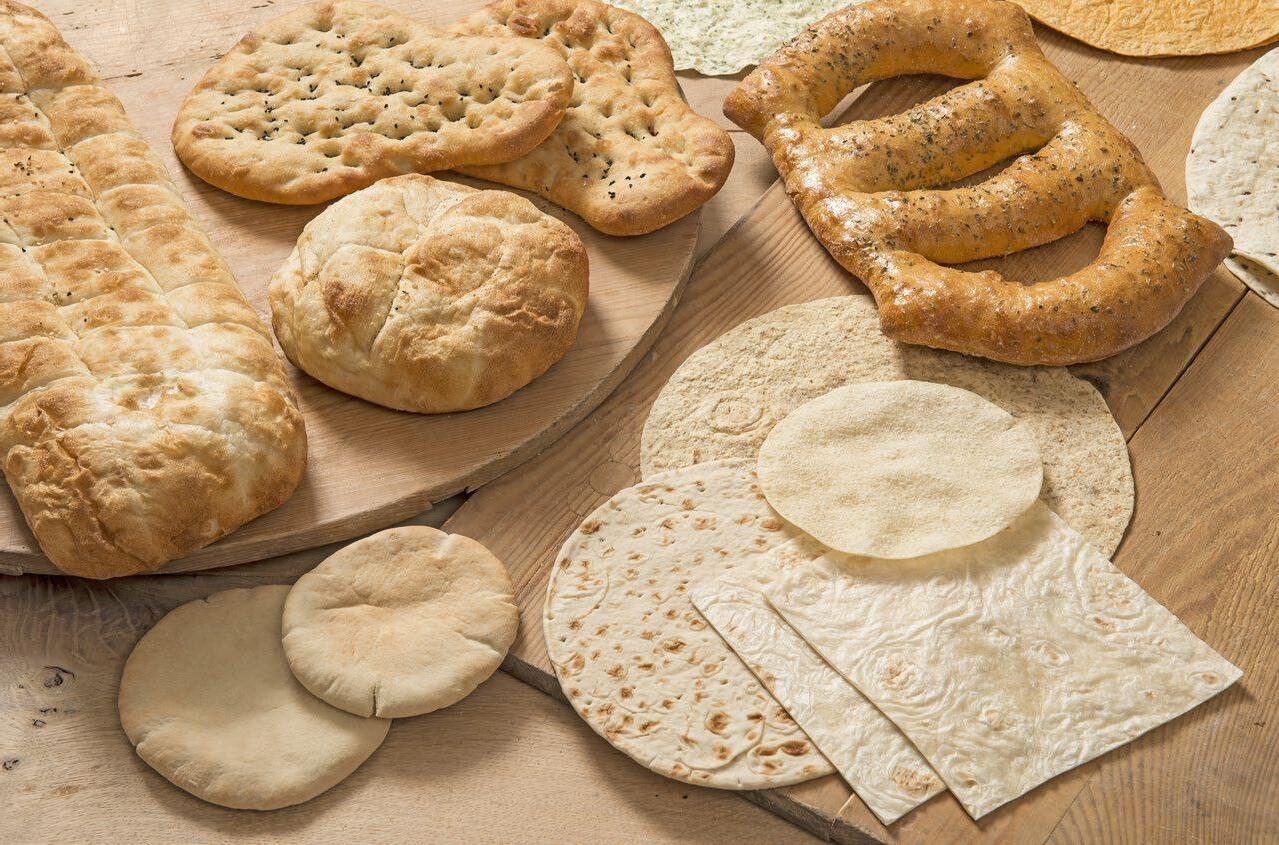
Cleaning requirements for the cooling tunnel vary according to the products and the specific production circumstances. The air filter guarantees that the cooling air has no products, such as sprinkling materials. Furthermore, the temperature of the tunnel itself can impact the tunnel’s cleanliness, when it becomes too cold. This, too, has been addressed: “The new automatic humidity control of the cooling tunnel will help operators to always keep the cooling tunnel in the right condition. Additional air dryers can further improve the situation,” says Schaeffer.
The conveyor of the cooling tunnel can be cleaned during or after production with an automatic belt-cleaning device, which can be used at different places in the factory. Normally, cleaning is carried out with hot water only. What’s more, “The new design of the belt washing device will help operators to keep the unit itself clean,” SOLLICH highlights. The mobile belt washing unit with an integrated hygiene washing drum is designed for convenience in handling when cleaning
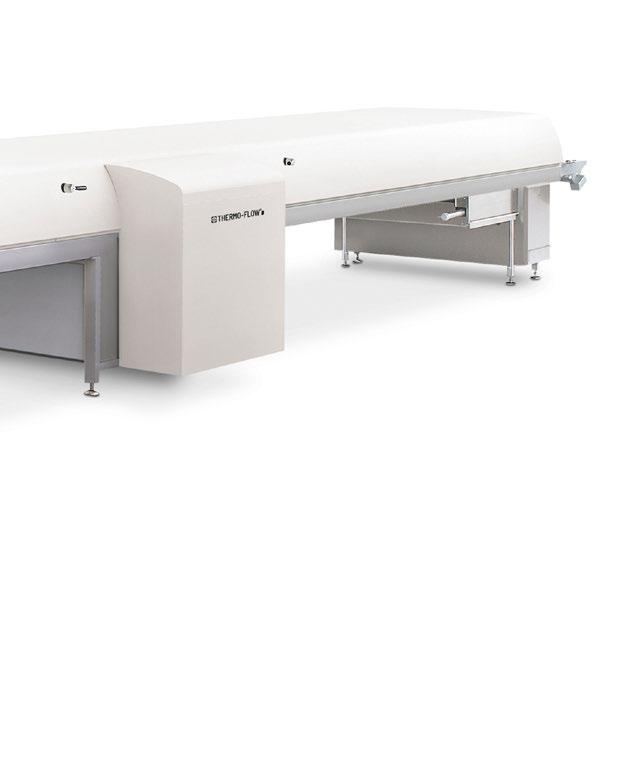
37 PRODUCTION www.rademaker.com Tel: +31 (0)345 543 543 E-mail: office@rademaker.nl INNOVATIVE PRODUCTION LINES FOR BREAD PASTRY LAMINATED DOUGH FLATBREAD CROISSANT PIE / QUICHE PIZZA Different dough and crumb types possible Premium dough quality Dough thickness of up to 0,5 mm Best weight accuracy Your flatbread deserves a Rademaker system
ADVERTISEMENT
©
SOLLICH
the conveyor belt. In this way, no foreign particles can get onto the products during the cleaning process.
Sweet, smart tools
Automation tools are mandatory for today’s process efficiency requirements. They autonomously detect anything from changes in production to machinery errors, monitor material supply and make necessary adjustments and/or notify the operator. The German company has also made new improvements to its digital tools, focusing on the information exchange between the machine, its operator and SOLLICH itself. To this end, it founded SweetConnect GmbH, in partnership with other supplies of confectionery technology. On the SweetConnect ® platform, users can manage all their integrated production machines. “SweetConnect ® supplies all required information of the entire line to guarantee efficient production including manuals to easily identify spare parts for the maintenance schedule and support. The main advantage is that all these features are not only for machines from one supplier, but also for the complete line or even the complete factory,” the specialist explains. SOLLICH also provides remote maintenance for the SweetConnect ® platform – the ‘Fast Lane’ service. Application data is transmitted to optimize services and performance.
SOLLICH is also launching its first Artificial Intelligence solution, building on the tempering machines’ ability to perform self-analyses. This feature will be the basis for the machine's automatic self-regulating function. The goal is to have the equipment adjust its temperature values independently, to minimize the operator’s workload, while also achieving quality tempered chocolate, consistently.
The Tempergraph ® by SOLLICH is yet another solution designed for process efficiency, aiming to improve the quality of chocolate during the handling process. This device automatically monitors the tempering degree of the chocolate. It can also be installed on enrobers.
Each machine has gained new features that help them improve product quality, such as the dew point display within the cooling tunnel, for instance. This instrument helps to prevent errors during the cooling process, ensuring the product’s quality after cooling.
The future of chocolate
Digital tools such as the SweetConnect ® , ‘Fast Lane’ and Artificial Intelligence are increasingly more important, to ensure constant and efficient production quality. Accurate monitoring is especially instrumental when dealing with a delicate, often premium and super-premium product: chocolate. Product consistency has been traditionally relying on the skill and experience of the operator; today and tomorrow, AI and digital tools are in charge of this
SOLLICH history
SOLLICH is also organizing a ‘Heritage’ area at the booth, with highlights of key moments in its history of more than 100 years. A few century-old, retro machines will be displayed.
instead, making production less dependent on finding these highly-experienced people. Process efficiency increases and the staff can take on new, superior tasks.
In this way, “In the future, the production lines will work as if all the experienced operators were combined to ensure perfectly efficient production,” Schaeffer anticipates.
That’s not all: for the production of various bars, SOLLICH will bring another new machine to interpack, the Miniconbar® system. With this version of the Conbar bar line, the specialist is adapting to the demands observed in the bar product industry and is also offering a version for smaller production capacities.
Other new machines presented at interpack include the Sollcocap ® sandwich system that can produce up to 240 biscuit rows per minute. Sandwiches processed with the Sollcocap ® can have two different fillings, with the help of two separate depositing machines.
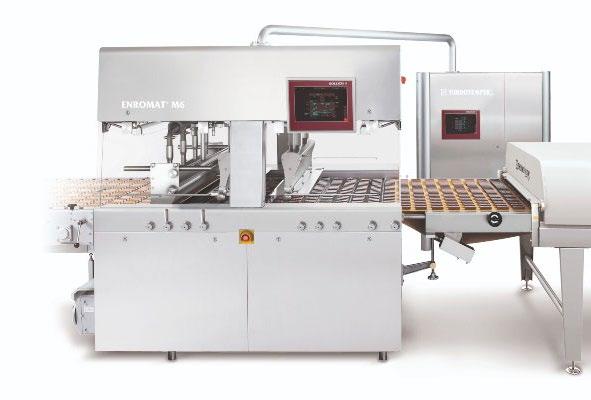
Last but not least, SOLLICH will also present a new solution for tempering and aerating masses with ingredients and/ or flavors. “Mixing of ingredients and tempered mass is always an important part of the whole process. As the mass with mixed ingredients cannot be easily reused, SOLLICH has a rework tempering system to recycle the mass with ingredients during the process in combination with aerated masses,” the specialist details.
The picture of solutions will be completed by Chocotech, SOLLICH’s sister company. Together, the two offer solutions for the complete process, from cooking to forming and enrobing. +++
www.bakingbiscuit.com 02/2023 PRODUCTION 38
©
SOLLICH
Bake more, bake better with IPCO steel belt technology
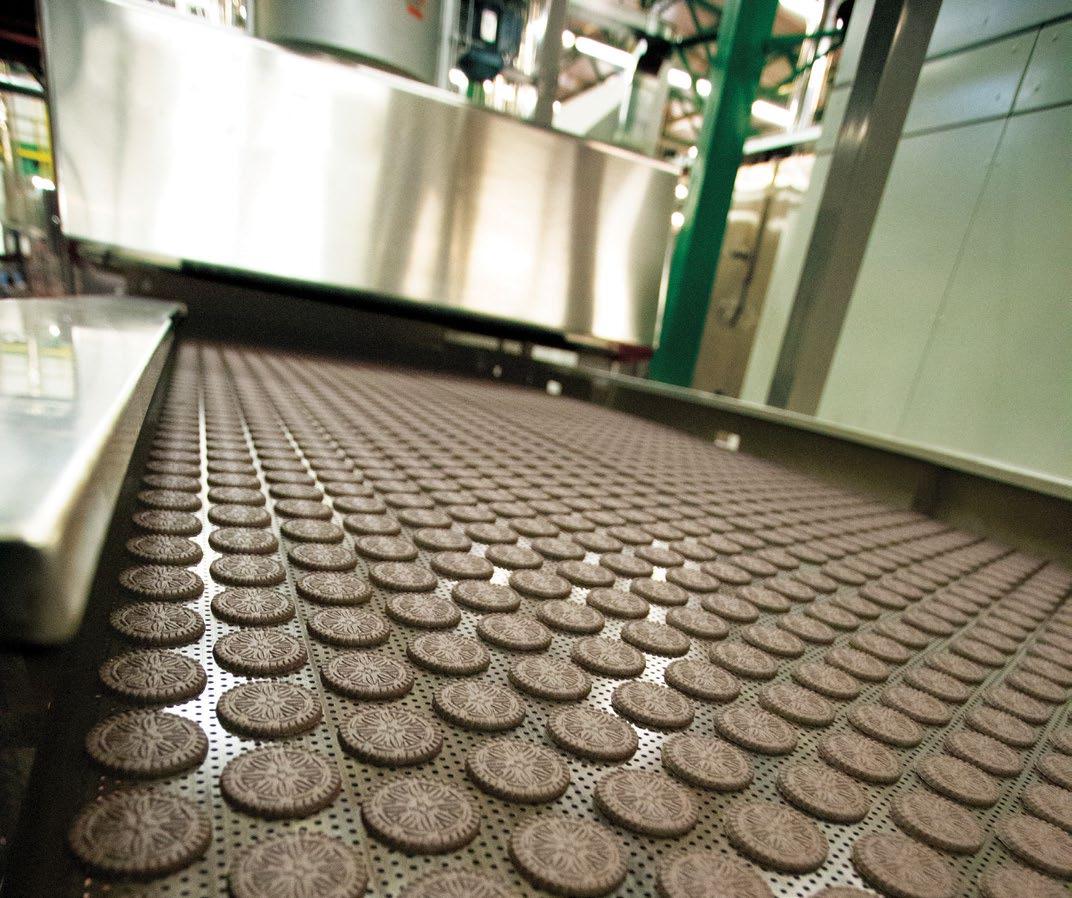
Our solid and perforated steel belts have helped bakeries produce premium quality products for almost 100 years. Flat, straight, durable and easy to clean, they provide a baking surface that’s ideal for everything from rich, chewy all butter cookies to traditional biscuits and crackers.
The other reason for choosing IPCO is our global service capability, providing the reassurance of premium productivity too.
• High productivity wide belts up to 3500 mm.
• Maximum versatility – bake more on an IPCO steel belt.
• Energy efficient – lighter belt means lower carbon footprint.
• Belt only or full range of conveyor components.
• Installations, upgrades (mesh replacement), repair, maintenance and spare parts.

See us at Bakery China Shanghai · 22-25 May · Hall 21 Stand A97 See us at IBA Munich · 22-26 Oct · Hall C1 Stand 120
ipco.com/bake
Sealing the deal
Packaging affects the state of the product throughout the supply chain. Identifying the best packaging process and materials ensures all types of baked goods make it from plant to table, exactly as intended. A thorough checklist is necessary to back these choices.
On their journey from the processing plant to shops and homes, breads and biscuits must remain intact, but also look, feel and taste fresh. At the same time, they must remain inviting with easily shared information about the product properties, from nutritional features to addedvalue ingredients, or allergens. Packaging must answer all these needs, and more.
MULTIVAC’s Stefan Scheibel, Vice President of Training, Innovation and Partner Products, Corporate Sales and Marketing, shared with us the main aspects that determine the functionalities required for a dedicated packaging solution. Determining the technology to meet the packaging needs of a bakery starts with the product and its presentation, as well as the needs of the consumer. Asking all the right questions is instrumental. These include, “Does the product need mechanical protection or is it sufficiently robust? Does it need a modified atmosphere to extend its shelf life (vacuum, MAP), or is simply sealing the pack
sufficient (no shelf life extension, just grip protection)? When the pack is presented at the point of sale, should it be lying flat, standing up or hanging? Which convenience features does the customer want, i.e. is a reclosure facility or a dispensing function desired? Which aspects of sustainability should be taken into consideration regarding shelf life and packaging materials?”
At the same time, the requirements of the product itself also determine the type of technical solution, as they will be reflected in the product handling. For example, the way the products are loaded into the pack depends on their characteristics, and it determines the line concept. MULTIVAC develops a suitable solution by having its team of packaging experts work directly with the baker, to answer these questions, and more, and then translate them into the required packaging line.
”Thanks to rapid conversion by means of die dividers or new format sets, the packaging machines can be converted – even several times a day – to different pack sizes (four baguettes instead of two) or different products (biscuits instead of bread).”
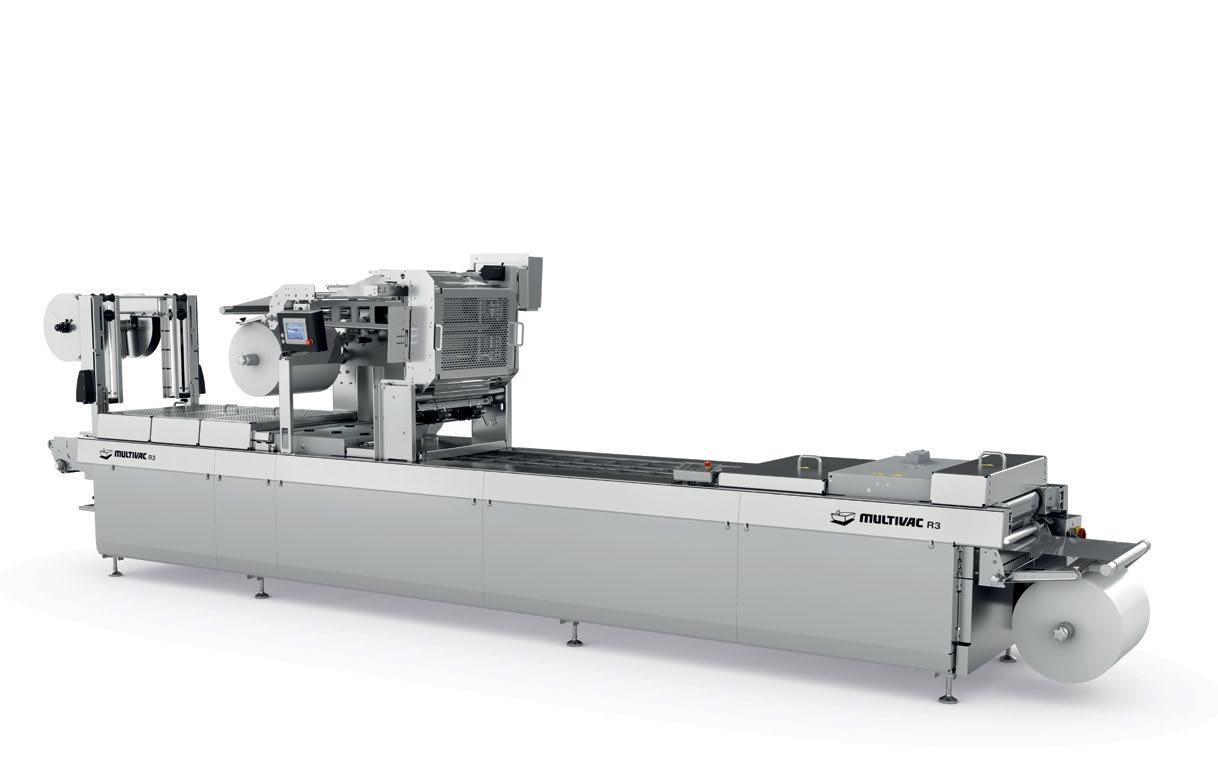
Stefan Scheibel, Vice President of Training, Innovation and Partner Products, Corporate Sales and Marketing, MULTIVAC
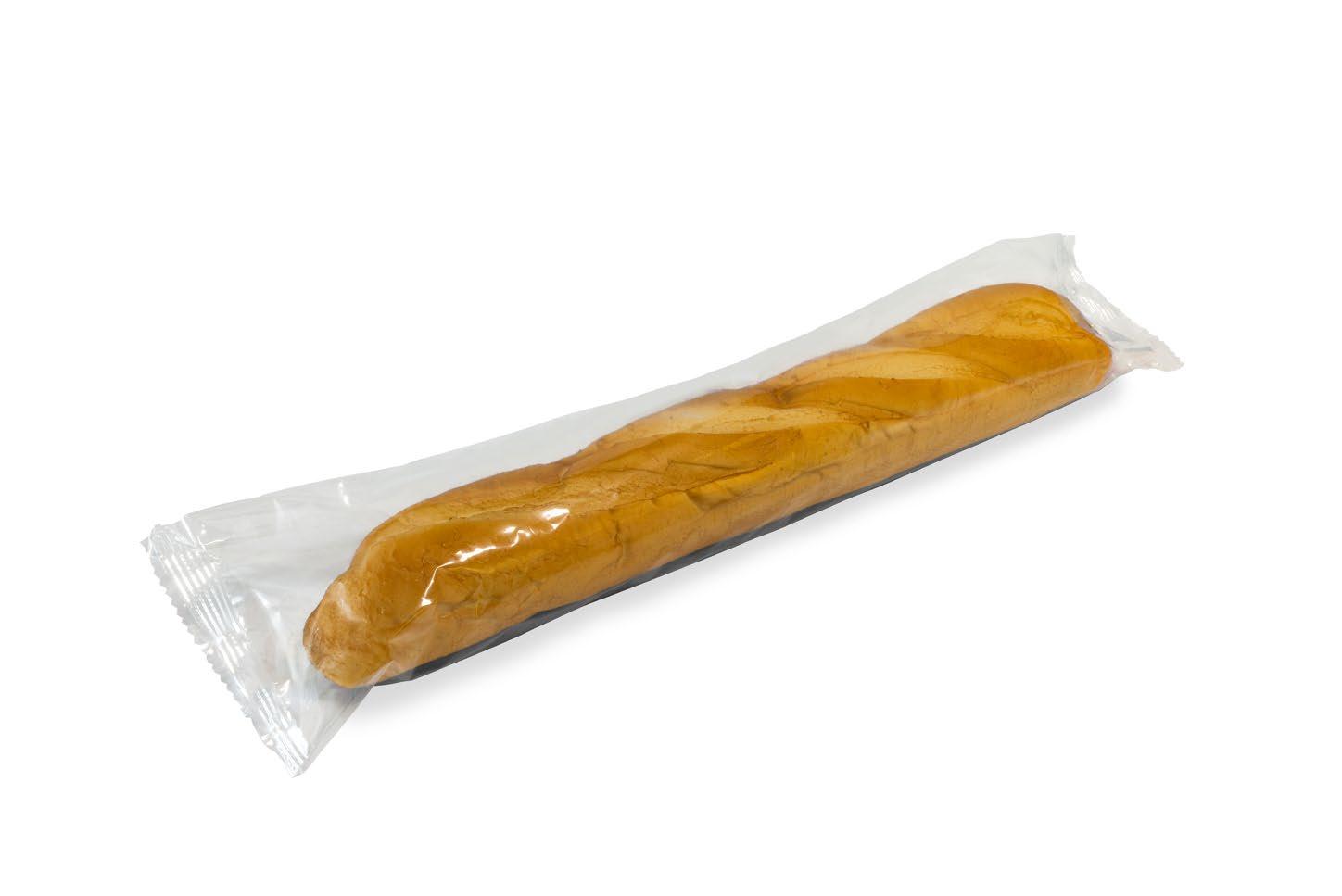
www.bakingbiscuit.com 02/2023 PACKAGING SPECIAL 40
+
© MULTIVAC
© MULTIVAC
Four types of packaging technology are suitable for bakery products: thermoforming packaging, packing in trays, packing in film pouches, or flowpacking. The spectrum of materials used ranges from thin flexible films up to rigid films – for stable packs. Sustainable material options are available, such as recyclable, fiber-based packaging (PaperBoard) and materials made from mono plastics (mono PE, PP or APET).
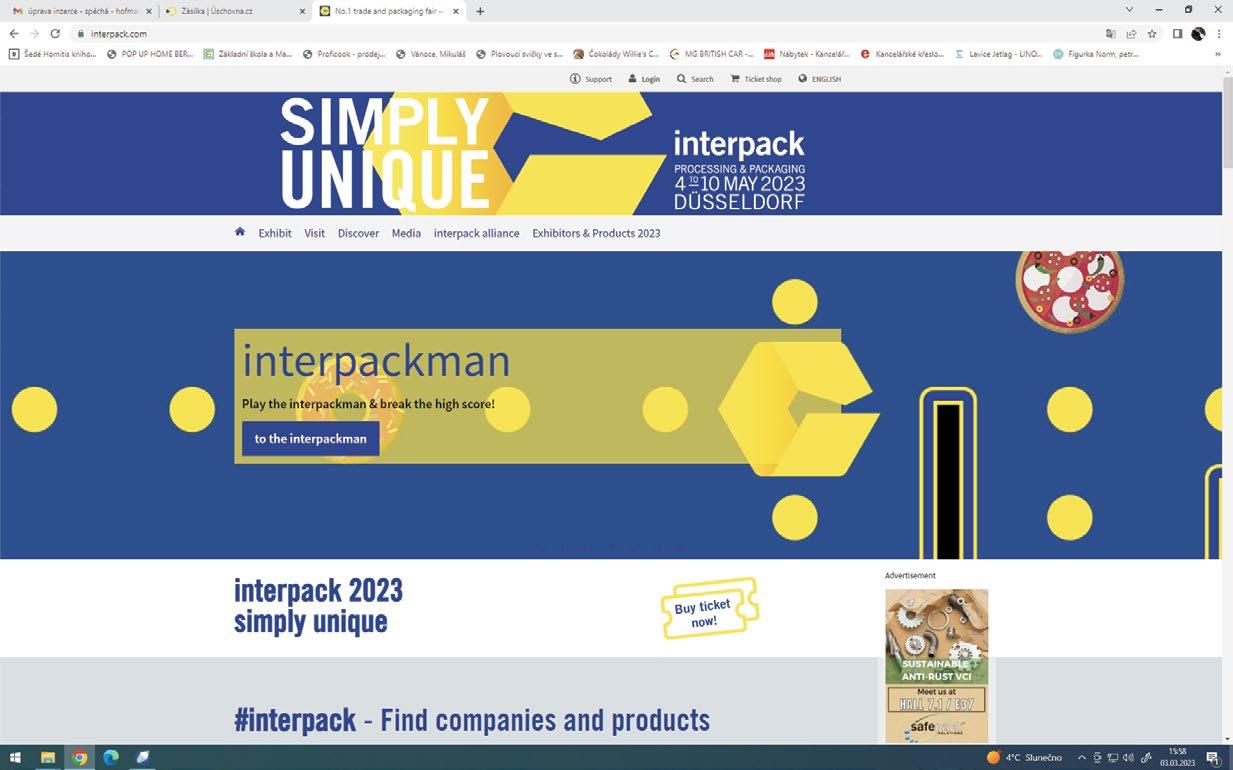
MULTIVAC also adds that a special feature should be noted: thermoformed packs and film pouches made from aluminum multi-layer film are best used for long-life products, such as biscuits with a very long shelf life.
Different product needs
When ready for packaging, biscuits are typically fully baked and very delicate, likely to easily break, become distorted or crumble. The pack, therefore, needs to offer a high level of protection against external mechanical stress. It must also prevent the products from rubbing against each other in the pack. The requirements for this kind of packaging are usually the highest, concerning both the presentation of the products and the point of sale and the convenience features it should have. “In the case of biscuits, it is recommended that the packs have a reclosure facility, so that the biscuits can be removed individually, and also that they have compartments shaped to the biscuits for secure transport. Another option would be for the pack to have several compartments, each of which can be opened one after the other, when the content has been consumed,” Scheibel illustrates.
A different set of issues is encountered when packaging bread and other baked goods. Here, the pack must allow fermentation gases to escape. Integrated valves are a way to achieve that, Scheibel illustrates. Packaging for chilled and frozen products has extra tasks: in addition to keeping the product fresh over a significant shelf-life time, it must also be suitable for presentation and storage in a refrigeration cabinet.
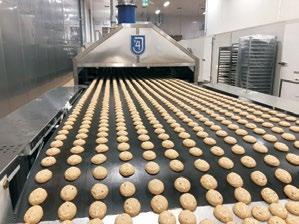
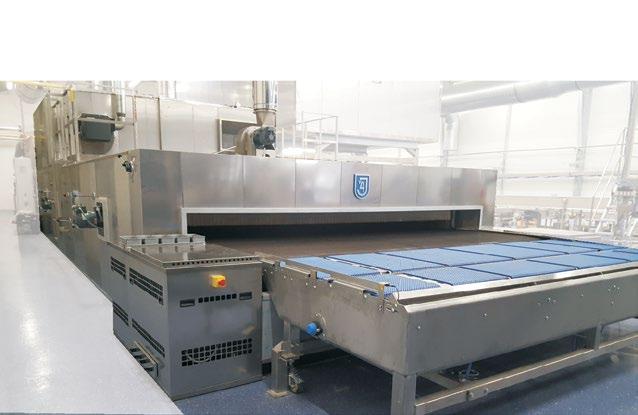
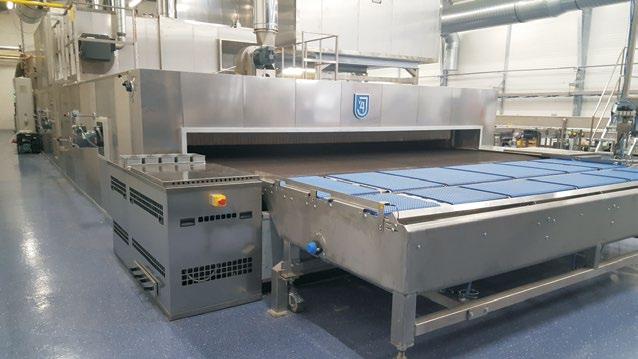
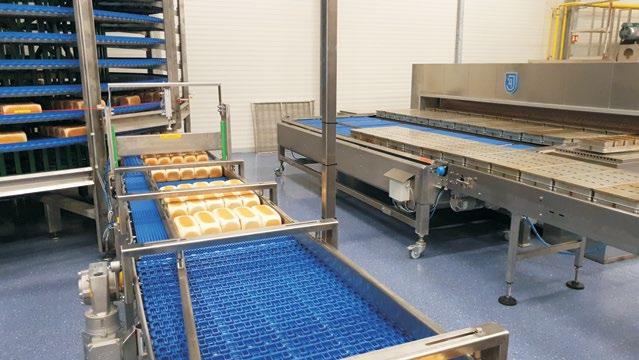


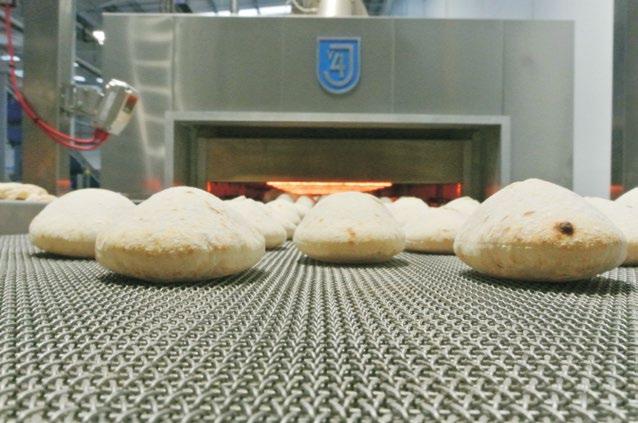
Another interesting – and trendy – category is made of products for bake-off, either pre-baked dough products or fully-baked bread, which are all fairly robust mechanically and have a relatively long shelf life. “The pack has essentially the function of creating a retail item, and it offers primarily grip protection (no vacuum, often also no MAP), as well as maintaining the required moisture in the product. A high level of flexibility is required for the different product lengths and pack size,” Scheibel explains.
For bread, packs with a reclosure feature may also be considered, to allow individual slices to be removed, he adds. Alternatively, multiple packs are also an option which will help with product freshness once the pack has
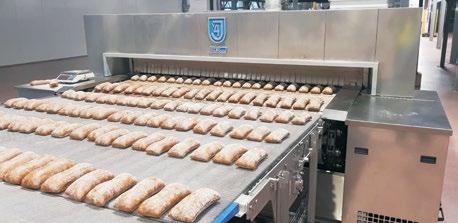

ADVERTISEMENT PACKAGING SPECIAL
been opened. Such examples can be packs of five tortillas or three naan breads.
Enter production: new process improvements, new product ranges
Another aspect to be considered when looking at the features of packaging solutions is always the future. How will a packaging line support an expanding product portfolio? Modified atmosphere packaging provides opportunities to cover the needs of products with requirements not yet known. A hermetically sealed pack with modified atmosphere influences the state of the product along the entire supply chain, from the manufacturer through to the retail outlet and, finally, to the consumer. “By ensuring that certain parameters such as oxygen content, CO 2 content, product moisture, etc. are maintained, completely new products, such as gluten-free specialties, or bakery products with new recipes and ingredients can be safely launched,” MULTIVAC’s specialist highlights.
The future can also hold exciting opportunities for communicating with the consumer. Printing special markings on the packaging can bring the conversation online or even into the realm of Artificial Reality, where more information about the product or the brand can be shared. Moreover, the company can connect and engage with consumers in this way.
In addition to future production plans, MULTIVAC lines will also accommodate future technology upgrades, without having to replace the equipment. New functions can be installed at any time by retrofitting parts for various functions, such as automatic loading, inline printing or labeling, visual inspection of products and packs, foreign object detection, automatic box packing, and more.
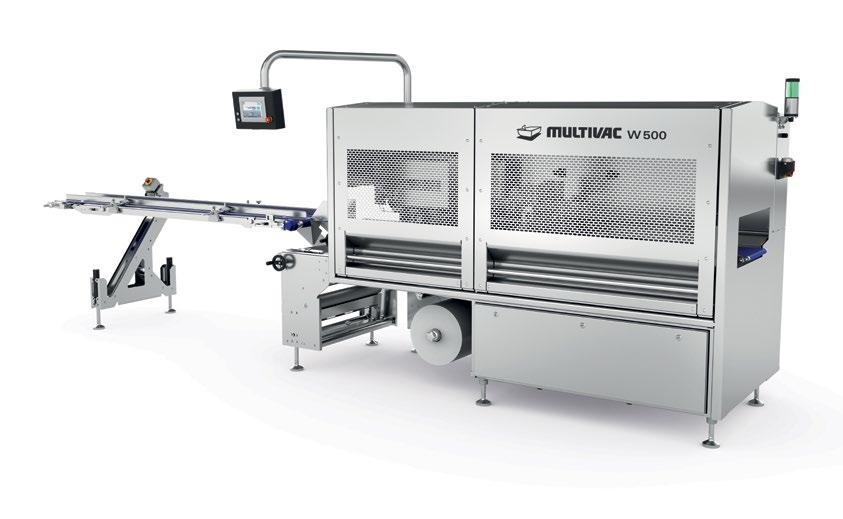
Product variation is a design feature for MULTIVAC, with solutions typically built out of independently-defined modules. This applies to standalone machines as well as to entire, automated lines: “Thanks to rapid conversion by means of die dividers or new format sets, the packaging machines can be converted – even several times a day –to different pack sizes or different products,” Scheibel says. Switches can be made in this way so that the same machine can handle anything from packing two baguettes to four, or moving to other products entirely (changing from bread to packaging biscuits on the same machine, for example). “And a wide variety of packaging materials, labels and printed designs can create a diverse range of packs,“ he points out.
With recent process improvements, all processes can be tightly controlled with MULTIVAC’s new flowpacker, which means consistent, higher-quality packaging. Thermoforming
packaging is also seeing new developments, in perfecting die designs. The result: less film trimming is required during the process. Material savings have also been perfected; film-forming was improved so now even thinner films can be safely used.
Process efficiency
MULTIVAC provides packaging equipment for any production volume, from small, semi-automatic machines to fully automatic, high-speed lines. Automation offers the best tools to optimize processes, either complete or even partial sequences in operation.
The company also offers digital services, the so-called MULTIVAC Smart Services, which increase efficiency. They help achieve faster product and format changes, as well as lower downtimes in the event of malfunctions, as they include online support or remote assistance. Moreover, “The MULTIVAC Pack Pilot means that the packaging machine can be set automatically to the desired application,” explains Scheibel.
MULTIVAC’s PaperBoard is one new development counting toward packaging sustainability; but, several equipment options also play a role: “Power consumption is reduced through the use of energy-efficient servo drives. Automatic flow control reduces the consumption of cooling water. MULTIVAC Line Control, an overarching system of control throughout the line, ensures that there are fewer time and material losses during line start, line stop and product change. MULTIVAC Pack Pilot, a cloud-based piece of software, provides the perfect parameter setting and less wastage. And last but not least, the MULTIVAC Hygienic Design reduces the use of cleansers,” the specialist illustrates. Packaging concepts are designed to enable sustainable packaging materials to be run, while still reducing their usage and maintaining the same pack functions.
www.bakingbiscuit.com 02/2023 PACKAGING SPECIAL 42
+++ © MULTIVAC

All about gentle handling
For sensitive products such as cookies, the journey from the oven all the way to the primary packaging machine can be quite a long and arduous one. The longer the transportation belt, the higher the risk for cookies to bump together and break. However, manufacturers can counteract product loss by investing in gentle handling solutions.
When handling crumbly cookies, biscuits and crackers, manufacturers can opt for one of two technologies or even combine them: pick-and-place technology or conveyor systems. Each of them is suitable for different tasks along the packaging line: while conveyor belt systems are often the technology of choice for distributing the product stream from the oven onto packaging legs, pick-and-place solutions are ideal for placing sensitive products from the transportation belt right into the primary or secondary packaging machine or onto the infeed belt of flow wrappers or vertical baggers. Seeing how many manufacturers also work as contractors, product and format changes are frequent and need to be performed efficiently to keep downtimes to a minimum. Both technologies cater to this need, as many pick-and-place solutions and conveyor
systems are suited to handling a variety of different products and formats.
Reducing mechanical stress to a minimum during distribution
Before the cookies enter the packaging process via a conveyor band, they cool down on the cooling conveyor after leaving the oven. Right from the start, the cookies are prone to breaking and crumble easily, so gentle handling is of the utmost importance. Syntegon’s newest discharge station Distribution Continuous Slide (DCS) is a conveyor system that fits that bill. The modular discharge system consists of one or more stations that can be arranged one behind the other. Each is equipped with belt slides and runs entirely without format parts. The fragile cookies are neither dropped nor pushed, but simply slide over the system’s belts. This design minimizes mechanical stress and avoids product breakage and loss. In addition, it makes the system particularly flexible as it can process products of varying shapes and sizes. Changeovers can be performed with just a touch of a button.
Ready for fluctuating output
The DCS is particularly suited for handling large quantities of products. The faster its belts move, the more cookies are distributed onto individual packaging legs. On the legs, an additional belt slide arranges the straight product stream into an S-shape. This ensures that the cookies and crackers are evenly distributed across the entire width of the belt, preventing
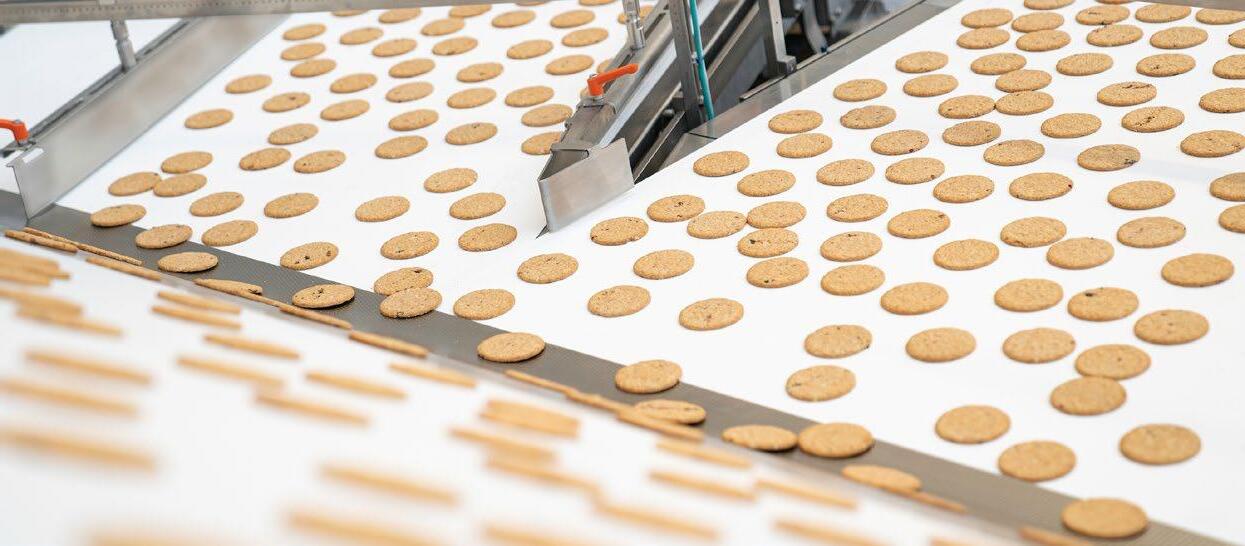
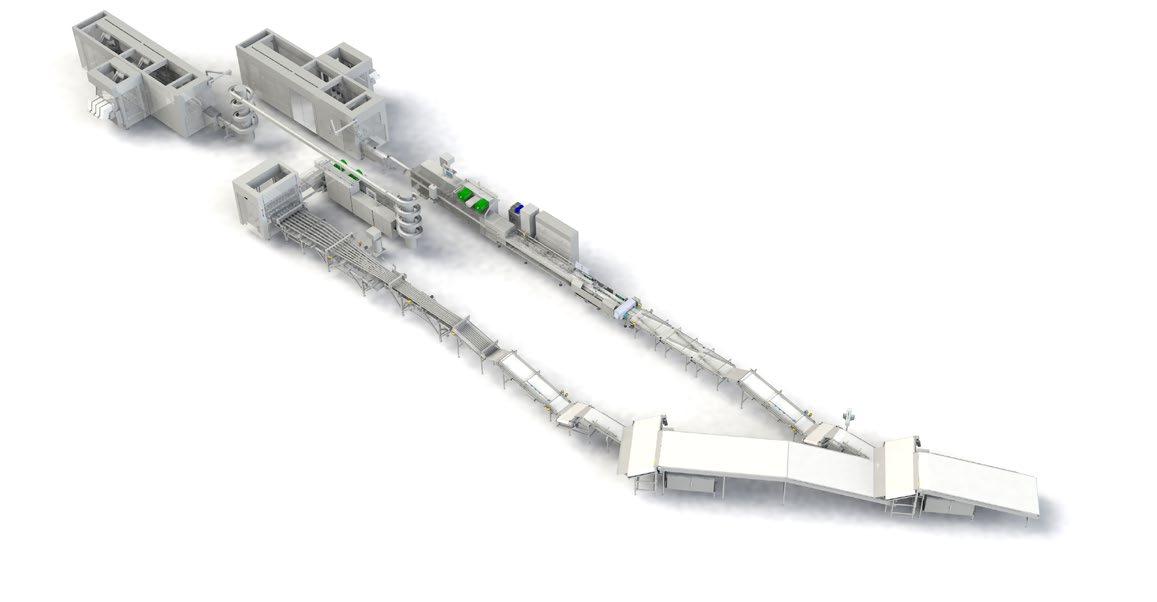
www.bakingbiscuit.com 02/2023 PACKAGING SPECIAL 44 +
“Specifically for cookie handling, integrated linear motor technology has proven particularly gentle, both in robotic solutions as well as in transportation belts.”
Syntegon specialists
© Syntegon © Syntegon
them from wedging or overlapping – and breaking. Since the probability of breakage increases as more cookies accumulate on the belts, the DCS counteracts product loss by increasing the discharge capacity of individual stations if needed. In case of fluctuating production volumes, the system is able to automatically increase its storage capacity and discharge fewer products onto the overloaded packaging leg. At the same time, it distributes the product surplus to the following stations. All legs can continue to operate continuously – until the product storage is empty and the product build-up has been safely processed.
Robots lending a hand in handling and packaging
After the products have been distributed, robotic pick-andplace solutions are often the main protagonist in the next processing step. Equipped with specially developed Endof-Arm (EoA) tools, they either pick the cookies individually from the transportation belt and place them into the infeed of flow wrappers or vertical baggers or directly into trays. Additionally, they load already-wrapped products into cartons for secondary packaging. To keep up with consumers’ needs for different products and formats, pick-and-place solutions offer a high level of flexibility – operators can perform format changes within minutes, by switching out the
EoA tool. Pick-and-place robots are then ready to process varying product sizes and shapes.






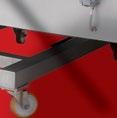


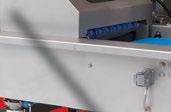






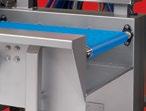
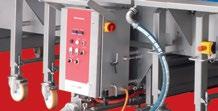


Specifically for cookie handling, integrated linear motor technology has proven particularly gentle both in robotic solutions as well as in transportation belts, Syntegon explains. With both technologies, the mover’s smooth and slow movements reduce mechanical stress on the cookies and prevent breakage and product loss. Additionally, they can be operated individually, ensuring highly precise handling processes. Integrated into infeed modules for flow wrappers, for example, linear motor technology performs exact portioning and increases the packaging line’s output when combined with smart acceleration. Once an individual infeed mover takes hold of a cookie or a grouped cookie stack such as a slug pack, it accelerates automatically and transports the products into the wrapper.
Most frequently, manufacturers opt for an application- and product-specific combination of conveyor systems, pick-andplace solutions as well as infeed modules that allow for maximum efficiency during cookie handling. Syntegon can provide support in realizing an operation’s full potential in terms of efficiency. +++
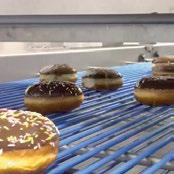
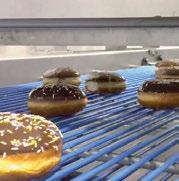
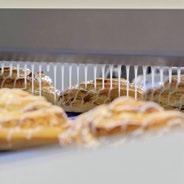
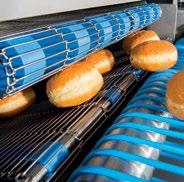
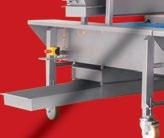
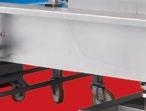
BAKON designs and manufactures complete production lines to the needs, desires and circumstances of customers all over the world. Together with you we will look at the requirements and present you your customized solution.












45 PACKAGING SPECIAL www.bakingbiscuit.com 02/2023 ADVERTISEMENT
SEE THE DIPPING MACHINE IN ACTION
SAVE TIME AND EFFORT WITH THE BAKON DIPPING LINE: THE DIPPING LINE PUTS AN END TO MANUAL DIPPING AND SPEEDS UP YOUR PRODUCTION.
BAKON.COM DIPPING 1/2p.indd 1 17-09-2021 16:08
Keeping a promise of quality
Wooden Bakery of Lebanon has maintained the product quality its customers are accustomed to, throughout several, sometimes overlapping challenges over the years. To cope with the latest struggles due to material availability, the use of flour and dough rheology technologies has helped the business manage flour quality.
By Georges Tawil, Product & Applications Specialist, CHOPIN Technologies, KPM Analytics
+Most of the world’s iconic brands share one crucial characteristic: adaptability – being able to adapt their methods to persevere through hardships, while keeping a promise to produce the best possible products.
The people of Lebanon have certainly faced their share of challenges over the last few decades. However, they have still experienced notable events in the past few years. Between the country’s current economic crisis, which began to take hold in 2019, compounded with the explosion at the Port of Beirut in 2020 – all while wading through lockdowns and anxieties brought upon by the COVID-19 pandemic –Lebanon has managed to demonstrate resiliency through turbulent times.
The struggles do not end there for bakeries in Lebanon and throughout the Middle East. The war in Ukraine has made operations even more difficult, as the two countries in conflict are their leading wheat exporters, making flour much more challenging to acquire. However, Wooden Bakery has flourished in the face of adversity and maintained its product quality.
This is Wooden Bakery
Founded in 1969 in Jal El Dib, Lebanon, Wooden Bakery is a family-owned business that has become one of the most recognizable bakery brands throughout the Middle East. From humble beginnings, Wooden Bakery has revolutionized the industry in the region by setting new standards as it has continuously upgraded its products and services. Wooden Bakery has expanded to over 50 locations in Lebanon and opened an overseas Master Franchise Operation in Saudi Arabia. They also have international
operations in Qatar, the United Arab Emirates, and Kuwait, with plans to open in Iraq. Its products include traditional breads, flatbreads and cakes native to the Middle East, as well as French breads and Viennese pastries.
“Each of our products requires a specific formulation of flour based on various aspects, including protein, ash content, wet gluten, and others. This can be a challenge given the availability of flour to our region and because flour quality can vary significantly with each delivery. ”
According to Jessica Bitar, Total Quality Manager for Wooden Bakery, the company’s emphasis on consistently providing top-quality baked products contributes greatly to their success. Technology has helped them to achieve this, including the flour and dough analysis instrument in the quality control lab. “Each of our products requires a specific formulation of flour based on various aspects, including protein, ash content, wet gluten, and others,” says Bitar. “This can be a challenge given the availability of flour to our region and because flour quality can vary significantly with each delivery.”
Rheological analysis
Wooden Bakery acquired its universal dough characterization tool, the CHOPIN Technologies Mixolab 2, in 2012. It can take a small flour sample (50 g) and output a data
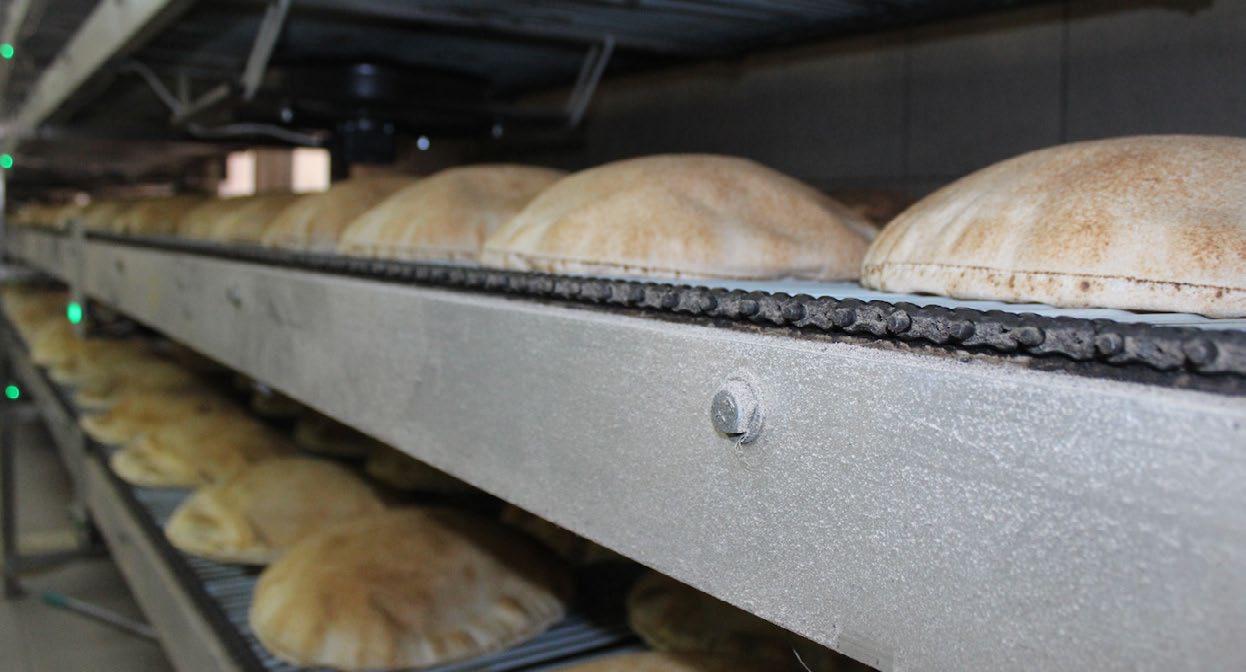
www.bakingbiscuit.com 02/2023 BAKERIES 46
Jessica Bitar, Total Quality Manager, Wooden Bakery
© Wooden Bakery
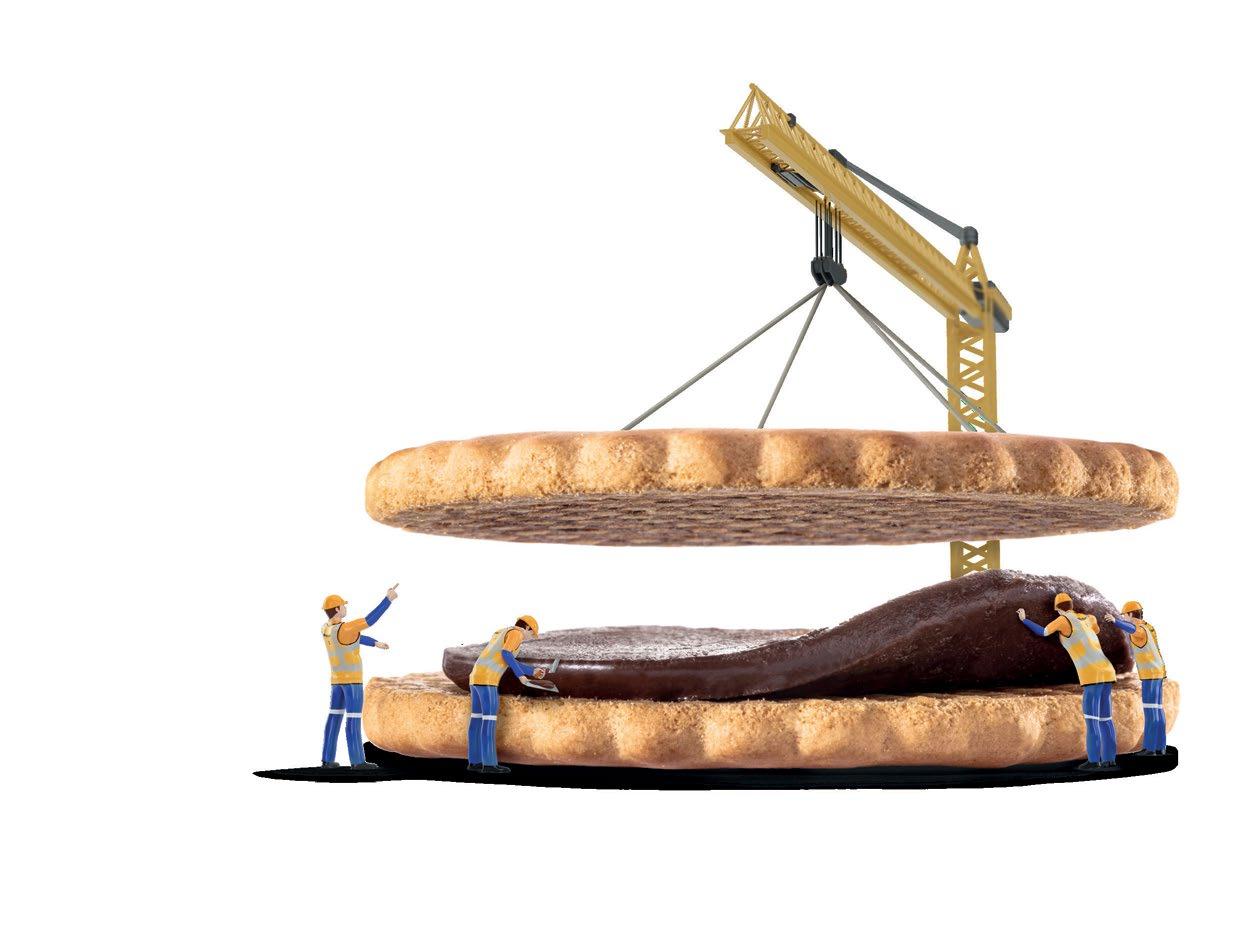
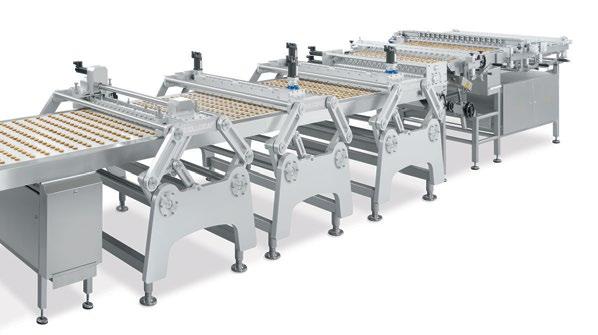
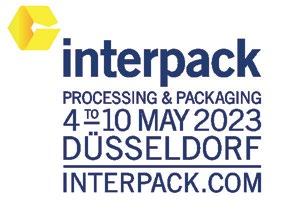
HALL 03 | BOOTH 3F20
SOLLCOCAP ® www.sollich.com UNIQUE FOR YOUR NEEDS
PERFECT ASSEMBLY
curve, or ‘profile’, in about 45 minutes. This profile includes data on a flour’s water absorption capacity, mixing behavior and amylase activity, while providing insights on product shelf life.
The instrument simulates the processes a dough undergoes during the production process, helping the quality team gain a clearer idea of flour quality, Bitar explains. “Over the years, and with the support of Hasan Shaib of Labcore, we have developed flour quality profiles for our numerous products with the dough characterizer.” The bakery tests each new flour delivery before production for any discrepancies in quality, so their production team can plan ahead. Wooden Bakery also used their dough characterizer to audit their miller’s flour quality, even before the current struggles with material availability. It is not uncommon for a delivery of flour to arrive out-of-spec once in a while. When one of Wooden Bakery’s millers was missing their mark frequently, the bakery explained how they assess flour qualities for their specific products with the dough characterizer. The miller got its own measurement equipment and now delivers flour with the datasheet of values. The two can now compare results. “It is as if we are speaking a new language together, which has greatly helped our relationship and productivity with this miller,” Bitar said.
Now, with the current wheat and flour market, Wooden Bakery is using the instrument less to audit flour deliveries and more to arm their producers with the information they need to adjust their process. With each delivery of flour, Wooden Bakery runs a sample through the dough characterizer; based on the data curve, the production team can make immediate tweaks to their recipe, using the dough
characterizer again to assess how introducing enzymes and other ingredients to the formula can help them reach their target product profile. This effort ensures that each delivery of flour, of various quality levels, can be used in production.
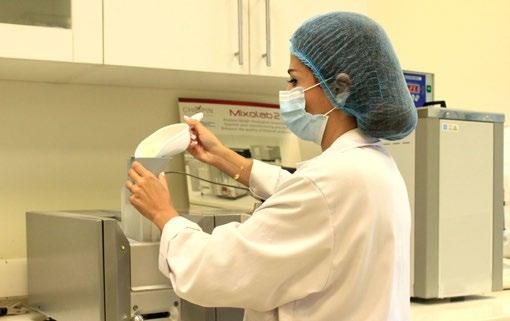
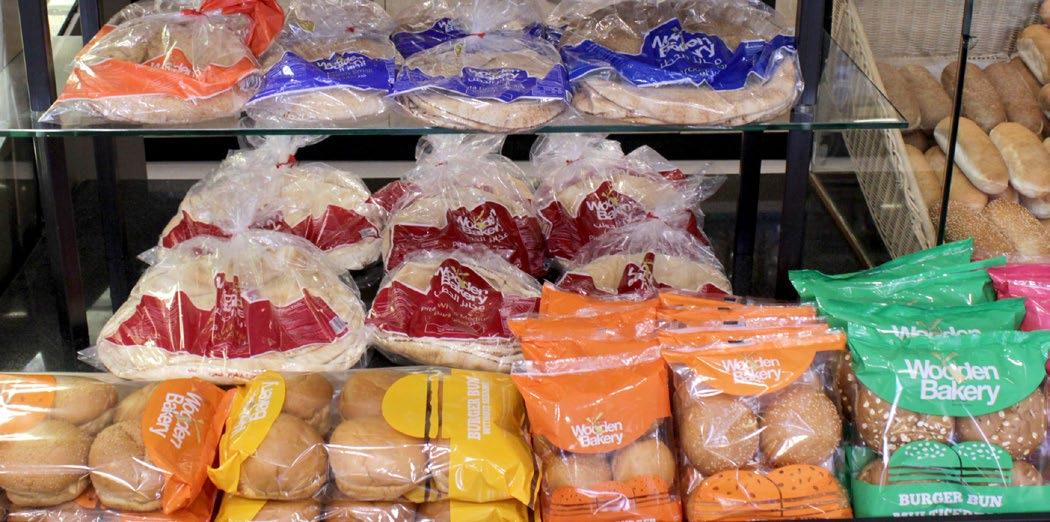
“We are not currently in a position where we can reject flour from our suppliers, but this technology helps us obtain a baseline for flour quality. Then we can use improvers to help us reach our product specifications, which we can transfer to production,” says Bitar.
In this way, Wooden Bakery can continue providing topquality products under any circumstances. In essence, the bakery’s adaptability and resilience embody the people of Lebanon, whose pride and dedication to baking as a craft and their consumers knows no bounds. +++
www.bakingbiscuit.com 02/2023 BAKERIES 48
Despite wheat shortages, Wooden Bakery ensures the quality of its baked goods by using technology and working closely with its millers
In minutes, the Mixolab 2 dough characterization tool can profile a flour sample’s water absorption capacity, mixing behavior, and amylase activity
© Wooden Bakery
© Wooden Bakery
Go for real American indulgence
4 in 5 European consumers who tried American sweet baked goods said they liked it*. With our roots strongly set in the US, no one knows real American Bakery like we do! Find out more about our latest Authentic American products: New York Style Cheesecake Mix, Blondie Brownie Mix and Crunchy Peanut Butter Filling and how we can help you tap into the growing demand for American sweet baked goods! We are Dawn, your partner for bakery success.

Discover how we can be your partner, contact us at dawnfoods.com/eu


*Dawn Global Trends Survey 2022
Contact us
An evolving kaleidoscope
Europeans are returning to their bakery favorites. The market is steadily growing and should exceed pre-pandemic levels by 2026. However, the new patterns symbolize not only growth but also change, as foodservice bounces back and retail strengthens its hold.
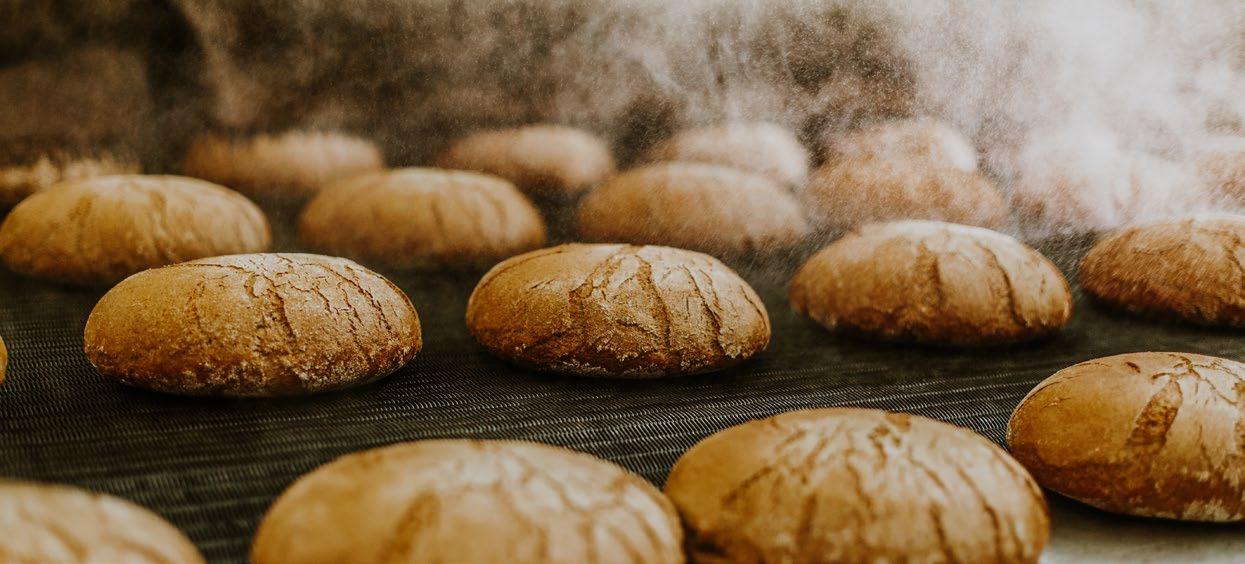 By Anne Fremaux, Bakery Director, Gira
By Anne Fremaux, Bakery Director, Gira
+Gira recently published the fourth edition of its European Bakery Companies Panorama, encompassing all the fundamental industry and market data on the European bakery chain. Gira’s research analyzes all the major developments in this globally mature market, with an assessment of their importance for the future.
The Bakery Panorama separately covers the four major bakery products: bread, viennoiserie, patisserie and savory pastry, with key data on 29 European countries, plus Turkey. The analysis looks into markets, distribution channels, supply strategies and the events that are shaping the business environment. It concentrates on Europe’s bakery industries and situates the 200 major European industrial bakers in the context of their major competitors, by specialty products (fresh, packaged, bake-off).
The long-term impact of the COVID-19 pandemic
Total bakery consumption in the 29 European countries covered in the research was about 38 million tons in 2021, with a market value of almost EUR 167 bn (consumer price). Bread and fresh products account for a major part of consumption, with respectively 78% and 69% of total bakery consumption by volume in 2021.
European bakery consumption has been rather static during the past decade and was heavily impacted by the COVID-19 crisis, with total bakery consumption decreasing by 3% in total, between 2019 and 2021. Fresh and sweet bakery products have been the most affected with a 6% drop between 2019 and 2021, whereas bread consumption only saw a 3% decline in the same period. Packaged bakery products have been the main winner with a 3% consumption growth.
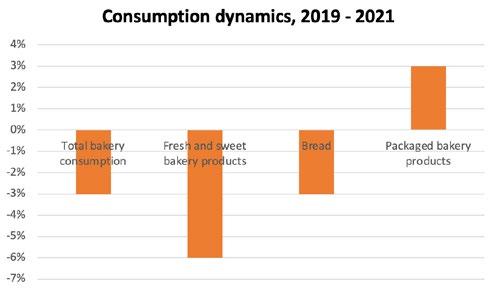
To what extent will the market recover by 2026? European bakery consumption is going to follow a positive trend with
an almost +1% increase per year expected between 2021 and 2026 (more catch-up than long-term growth). Therefore, in 2026 total bakery consumption is expected to reach 101% of 2019 volumes. Fresh bakery consumption is nevertheless expected to remain at only 99% of 2019 volumes in 2026.
Future drivers for bakery consumption:
+ The development of out-of-home consumption is among the main drivers, including snacking and food-to-go (a growing fast food segment and bakery chains, meal delivery and click & collect, etc.);
+ The search for authentic, artisanal, premiumization;
+ Multiple consumption occasions throughout the day;
+ Strengthening share of bakery goods for moments related to indulgence and for a genuine experience;
+ Growing availability and range of fresh products in in-store bakeries;
+ Healthier recipes.
Main restraining forces:
+ Greater attention to the balanced nutritional values of products (the unhealthy image of indulgent bakery goods);
www.bakingbiscuit.com 02/2023 MARKETS 50 EUROPE
© Roman –stock.adobe.com
Source: Gira
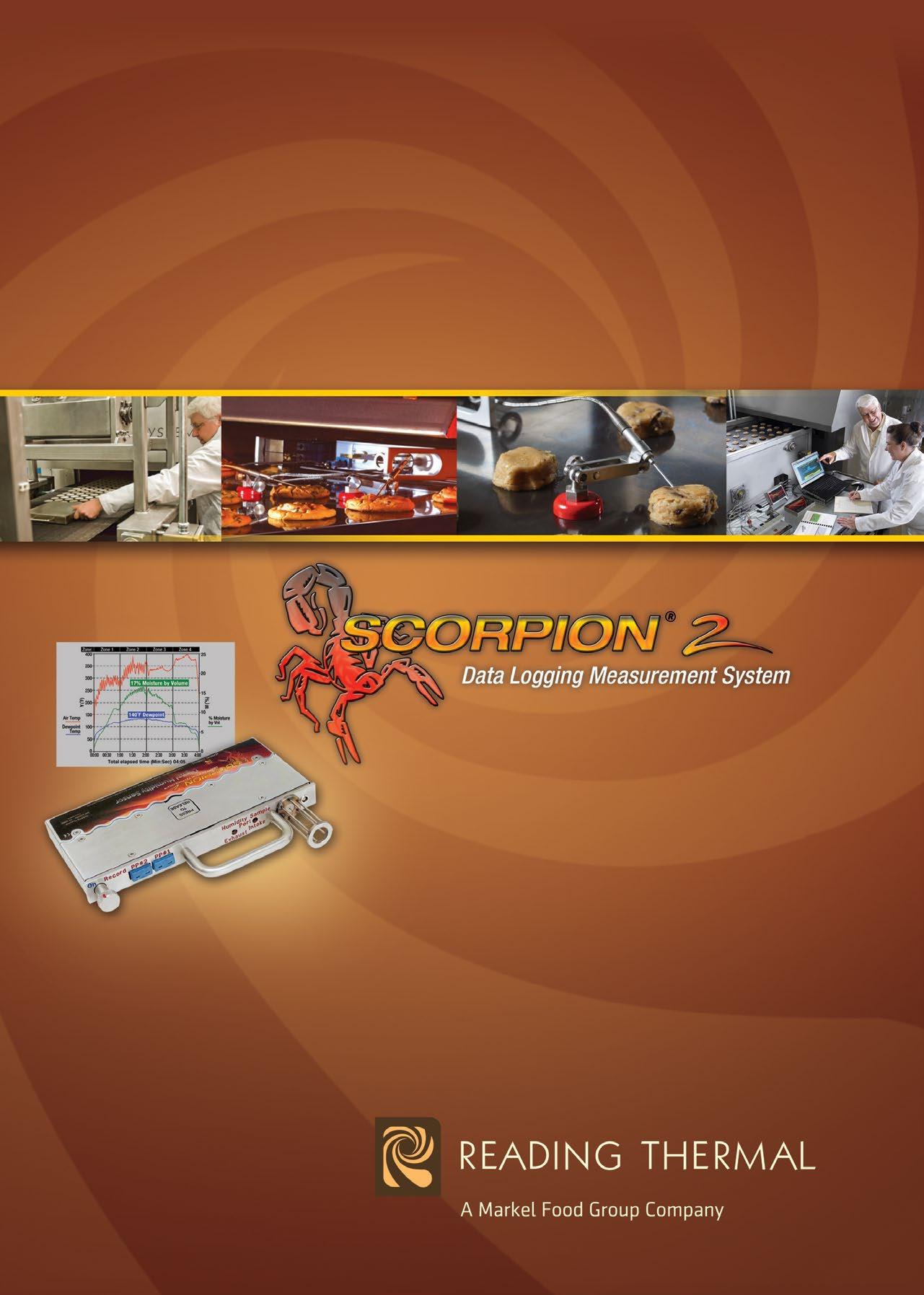
Bake better product and improve oven throughput with the New SCORPION® 2 Digital Humidity Sensor For details, visit readingthermal.com, e-mail us at info@readingthermal.com or call 610-678-5890 ext. 2. The new SCORPION® 2 Digital Humidity Sensor provides a better way To measure humidity in your oven, proofer, dryer and cooling tunnel. This breakthrough design provides a more accurate and reliable way to measure the absolute moisture content of the thermal environment. The sensor contains a proprietary humidity sampling system with patent pending Anti-Saturation TechnologyTM that allows measurements In high temperature and very high dew point processes. VISIT RBS. Hall 1. Stand B70.
+ High inflation may (temporarily) limit the premiumization trend and negatively impact the market value;
+ Smaller formats/portions of bakery products.
The main consumption dynamics, by type of bakery product
+ Bread: special recipes now account for almost 60% of fresh bread consumption, with the greatest share of special bread in eastern and northern European countries, whereas the share of white bread is declining in almost all countries. Flatbreads see ongoing development (both as fresh and packaged bread).
+ Viennoiserie: consumption remains centered on French laminated recipes such as croissants (50% of all viennoiserie consumption). Doughnuts will see further premiumization.
+ Patisserie: traditional and regional recipes account for the largest share of the market. However, US sweet pastries and branded licensed products are promising segments.
+ Savory pastry: the multiplication of consumption occasions (as snacks, for a quick lunch, at breakfast, or in the mid-morning, for an aperitive, as an appetizer/starter, for buffets, seminars, outdoor events, as a meal accompaniment). Flexitarian/vegan trends to favor vegetables and/or cheese.
The main industrial bakers of Europe
The top 200 European industrial bakers have been ranked not only according to their total bakery turnover, but also by technology. The comparison with previous Gira reports highlights the emergent bakery groups and those divesting from bakery operations:
+ Bakery companies that have kept their lead in the Top 10 (including Aryzta, Lantmännen Unibake and Barilla)
+ Bakery companies that have grown stronger, through acquisitions or organic growth (e.g., Chipita/Mondelez, Bimbo and Europastry)
+ Bakery companies that have lost some of their market share (such as Agrofert)
+ The new bakery groups that have emerged, often with the financial support of investment funds (e.g., Forno d’Asolo and Novepan)
+ And the disappearance of bakery companies/groups (e.g., Cerealto/Siro).
Future changes in distribution structure
In 2021, bakery distribution was split between retail (78% in volume) and foodservice (22%), compared to 75% vs. 25% in 2019. Retail channels and particularly modern retailers were favored in 2020/21 during the COVID-19 crisis as consumers preferred one-stop shopping. Modern retail is, by far, the first distribution channel for all bakery products, and by 2026 will continue to gain shares over traditional bakers for convenience reasons, whereas artisan bakers’ sales should decrease in most European countries.
However, a renewal of the artisan sector is foreseen in the United Kingdom, Ireland as well as in the Nordic countries.
The foodservice sector has been strongly affected by the COVID-19 crisis. Overall, the segment saw a total decrease in bakery product sales of 16% between 2019 and 2021. Foodservice is now recovering from the pandemic crisis; but, bouncing back with contrasting trends: full recovery in 2026, compared to 2019 level, is not expected for social (especially the workplace sector) and commercial foodservice (especially table restaurants), whereas bakery chains will further expand, beyond the 2019 level.
Overall, some long-term trends are expected to remain, such as shopping locally, online sales and home deliveries.
Bakery product supply strategy options and impact on production structure
There are different options for fresh bakery product supplies at the point of sales:
+ From-scratch baking (buying fresh ingredients and baking from scratch on the premises) remains the main supply method for artisan bakers, albeit decreasing. Scratch baking in the bakery chain sector is linked to the development of ‘artisan’ chain types. In other channels, it is primarily seen in hypermarkets and, to a much smaller extent, in some foodservice sectors.
+ Buying fresh bakery products (from artisans or industrial bakers – for reselling) is still the main supply method in social and commercial foodservice. It is also a significant supply method in the bakery chain sector, with fresh bakery products often supplied by chain-owned factories.
+ Bake-off (buying semi-finished bake-off products to be baked/thawed in-store) is gaining ground in all channels. It is widely used by modern retailers and bakery chains, whereas its lowest share remains in the artisan baker sector.
In the medium term, the shift towards bake-off will continue. However, the new trend away from international supplies to the benefit of domestic or local sourcing will be reinforced. Therefore, industrial fresh supplies will not decrease further in the future, as some modern retailers and many bakery chains still develop their own central plants delivering the nearby outlets with fresh products.
As of 2021, industrial supplies (packaged, fresh, or bake-off) accounted for 73% of the total consumption of bakery products in Europe, against 27% for artisanal manufacturers. By 2026, bake-off will become the number one supply method for total bakery products, outpacing industrial packaged ambient production. However, it must be outlined that the supply structure varies greatly between countries, with an ongoing high share of artisanal production in Southern European countries. +++
www.bakingbiscuit.com 02/2023 MARKETS 52
INGREDIENTS OF YOUR SUCCESS
More than 7 % bres.
The Kornspitz® has been delighting bakers and consumers in over 70 countries around the world for more than 30 years. Pure enjoyment, thanks to high-quality raw materials and a high bre content.
More at www.kornspitz.com
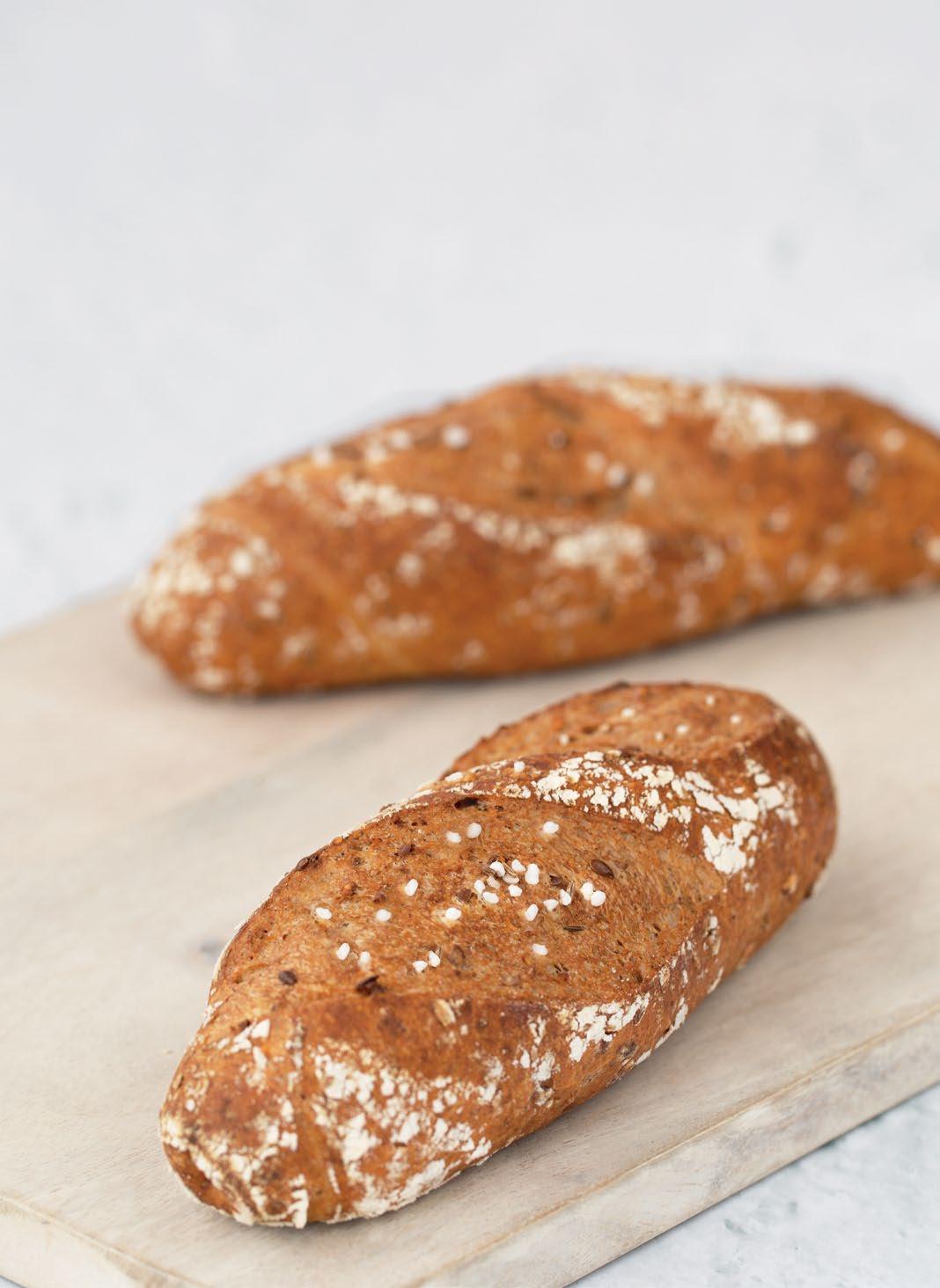
Seeing the bigger picture
Setting a sustainability strategy requires a holistic approach.
By Maggie Glisan
+Tune into the news at any given moment, and you'll likely find a story related to climate change, whether it’s about massive fires, extreme drought, or rare weather events. The narratives have become so commonplace that they barely grab people’s attention as they scroll from one headline to the next. Yet the latest research suggests issues pertaining to the environment are, in fact, very much top of mind.
In recent years, transparency and building trust have topped the list of Innova Marketing Insights’ top consumer concerns, but in 2022, people have zeroed in on environmental issues.
“For the first time ever, more consumers surveyed globally for Innova’s Lifestyle & Attitude Survey say the health of the planet is their top global concern, rather than the health of the population,” said Lu Ann Williams, insights director at Innova.
It’s a significant shift, and it’s having a big impact on how companies plan for the future. In a recent Deloitte Global survey of 350 executives, 91% said their business felt the impact of climate change, and 84% said they are personally concerned about the impact of climate change on their business.
There is no global standard for sustainability practices, and commercial bakeries run the gamut regarding individual progress for improving energy efficiency, reducing greenhouse gas emissions, improving water efficiency and reducing waste. That said, there are several tools and

resources that can help manufacturers determine where they are, where they need to go and how they need to get there.
Since this is a global issue that impacts every industry and individual on the planet, it’s helpful to take a step back and look at the big picture, starting with the United Nations’ Sustainable Development Goals (SDGs). Also known as The Global Goals, the set of 17 standards tackle the world’s most challenging issues and outline targets to achieve by 2030.
They include an actionable framework — agreed upon by world leaders — to address environmental concerns including affordable and clean energy, responsible consumption and production, and clean water. But they also address human rights and social issues like health and well-being, gender equality, and safe and inclusive communities.
The SDGs are the cornerstone of Mexico City-based Grupo Bimbo’s ambitious new sustainability goals, which build on more than 15 years of sustainability programs and projects.
www.bakingbiscuit.com 02/2023 SUSTAINABILITY 54
“For the first time ever, more consumers surveyed globally for Innova’s Lifestyle & Attitude Survey say health of the planet is their top global concern, rather than health of the population.”
© savantermedia –stock.adobe.com
Lu Ann Williams, Innova Market Insights
In the past few years, the company has been recognized by the Ethisphere Institute as one of the most ethical companies, as well as the first company in Mexico to receive clean energy certificates.
The strategy is based on three pillars: Baked for You, Baked for Nature and Baked for Life. Like the SDGs, Grupo Bimbo’s pillars take a broad approach to sustainability, one that focuses not only on the planet but also people and communities.
“The key ingredients are all linked directly to the purpose of the company, which is to nourish a better world,” said Alejandra Vázquez, Grupo Bimbo’s global sustainability VP. That includes promoting wellness through plant-based diets and nutritional diversity, becoming a net zero-carbon and zero-waste business, advancing regenerative agriculture, and improving the lives of its people and communities.
This broad approach to sustainability falls in line with today’s shopper. According to a survey conducted by The Conference Board in collaboration with The Harris Poll, consumers are increasingly expanding their definition of sustainability to include issues like fairness and corporate citizenship.
“Our research with The Conference Board reinforces the unique sustainability inflection point we’re seeing with American consumers,” said Rob Jekielek, managing director at The Harris Poll. “An organization’s environmental footprint and impact still matter, but treatment of employees and the workforce is rapidly emerging as a new core pillar and proof point for showcasing an organization’s sustainability impact today.”
Vázquez said using benchmarking tools was crucial to helping define short-, medium- and long-term goals. For example, a target for achieving net zero carbon emissions by 2050 was developed following Science Based Targets initiative’s (SBTi) framework. SBTi is a partnership between environmental non-profit CDP, the United Nations Global Compact, World Resources Institute (WRI) and the World Wide Fund for Nature (WWF).
Benchmarking also helped Grupo Bimbo assess what similar companies are doing and determine how they might form alliances and work together toward some of these larger global goals.
As a global company operating in 33 countries, it was also important for Grupo Bimbo to establish customized action plans based on the environmental, social and governmental standards in each specific region.

“In each one of the organization’s regions, we define a specific roadmap for the overall goals that we need to
reach as a company,” Vázquez said. “The speed and the way in which each will reach those goals will depend on the maturity [of sustainability standards in the country]. In some places, we are working toward renewable energy, and in other places, we are working toward electrical vehicles, but all of us are going to hit the goal by 2030.”
Like Grupo Bimbo, Los Angeles-based Aspire Bakeries is using the SDGs as a guidepost as well as broadening its approach to sustainability. Using inputs from internal stakeholders as well as brand, customer and employee expectations, the company recently outlined five areas of focus which includes people, food, planet, sourcing and communities. The American Bakers Association (ABA) also has a history of meeting members where they are and supporting companies in their sustainability efforts. But the organization is also starting to think more holistically about sustainability as the commercial baking sector becomes more willing to engage in targeted commitments.
“I think it’s time for us to revamp where we are and seek additional recommendations for bakers to embrace,” said Rasma Zvaners, VP of technical and regulatory services at ABA. “We run the full gamut of large global companies to small- to medium-size companies that are more regional. Three years ago, you had some that were out front and willing to make statements about their goals, but there may have been some hesitancy from some of the small- and medium-sized companies that simply lacked the resources.”
Fast forward three years, and Zvaners thinks bakeries are more inclined to commit to specific sustainability targets.
55 SUSTAINABILITY www.bakingbiscuit.com 02/2023
“In each one of [Grupo Bimbo’s] regions, we define a specific roadmap for the overall [sustainability] goals that we need to reach as a company.”
Alejandra
Vázquez, global sustainability VP, Grupo Bimbo
© Grupo-Bimbo
That’s in part because of increased pressure from major retailers like Walmart and Target to meet sustainability specifications, but it’s also about the reality of climate impacts (like drought in the Western US) on individual businesses.
One significant way ABA has helped support bakeries’ sustainability efforts is through its promotion of the Environmental Protection Agency (EPA)’s Energy Star certification. The national program recognizes participating bakery facilities that improve energy efficiency by 10% or more within five years, and the top 25% of energy-efficient US manufacturing facilities receive the EPA’s Energy Star certification.
Fifty commercial bread and roll bakeries and 24 cookie and cracker bakeries have received recognition since ABA began partnering with the EPA in 2010. Of the 92 manufacturing plants recognized by the EPA’s Energy Star certification for superior energy performance in 2021, 42 were ABA member facilities, and their efforts resulted in an energy saving of just over 6 million MMbtu.
“Energy Star was an amazing first step for the sector and continues to be a strong program,” Zvaners said. “It has provided a base framework. For those that were starting to think about sustainability early on, it provided a cookbook of ideas.”
Portfolio Manager, the Energy Star program’s online benchmarking tool, has also proven to be an effective resource for commercial bakeries. The tool allows individual

companies to input their facility’s energy uses, then calculates an energy performance score so they can see where they rank relative to their peers. Nearly 25% of US commercial building space is actively benchmarking on the platform.
Although the tool doesn’t allow users to identify competitors by score, it does help bakeries get a sense of where they are excelling and where they can improve based on where they stack up against their peers. Ultimately, that data can help inform strategy. And it can lead to significant cost savings, too.
Another program encouraging better sustainability practices is the US Department of Energy (DOE)’s Better Plants program. As part of the Better Buildings Initiative, Better Plants partners with manufacturers and water and wastewater utilities to boost their competitiveness by improving energy and water efficiency and reducing waste and greenhouse gas emissions.
Flowers Baking Co. of Batesville was recently recognized with a Better Practice Award for its energy efficiency projects, which included boiler, compressed air, LED lighting upgrades, waste heat recovery and variable-frequency drives for exhaust fans, among other projects. In total, the bakery reduced its annual energy use by more than 13,000 MMBtu.
“When planning equipment upgrades, Flowers Baking Co. of Batesville incorporated energy efficiency throughout the project design, reducing energy usage and costs longterm,” said Margaret Ann Marsh, VP of sustainability and
www.bakingbiscuit.com 02/2023 SUSTAINABILITY 56
© Lomb –stock.adobe.com
environmental at Thomasville, GA-based Flowers Foods. “Across the Flowers network, this program has become a case study in how to look at every operational upgrade project as an energy efficiency opportunity.”
Flowers’ efforts highlight a key takeaway: Reducing your environmental footprint isn’t just good for the planet; it’s good for business. Companies that lean in to the challenge and lead with innovative solutions come out with a competitive advantage.
Energy-efficient building improvements are not the only way to get out ahead of the pack, of course. Packaging is one of the biggest hot-button issues when it comes to sustainability, especially from a consumer perspective. According to Innova’s Lifestyle & Attitude Survey, as many as 20% to 25% of consumers adjusted their product choices for environmental reasons such as choosing food with environmentally friendly packaging.
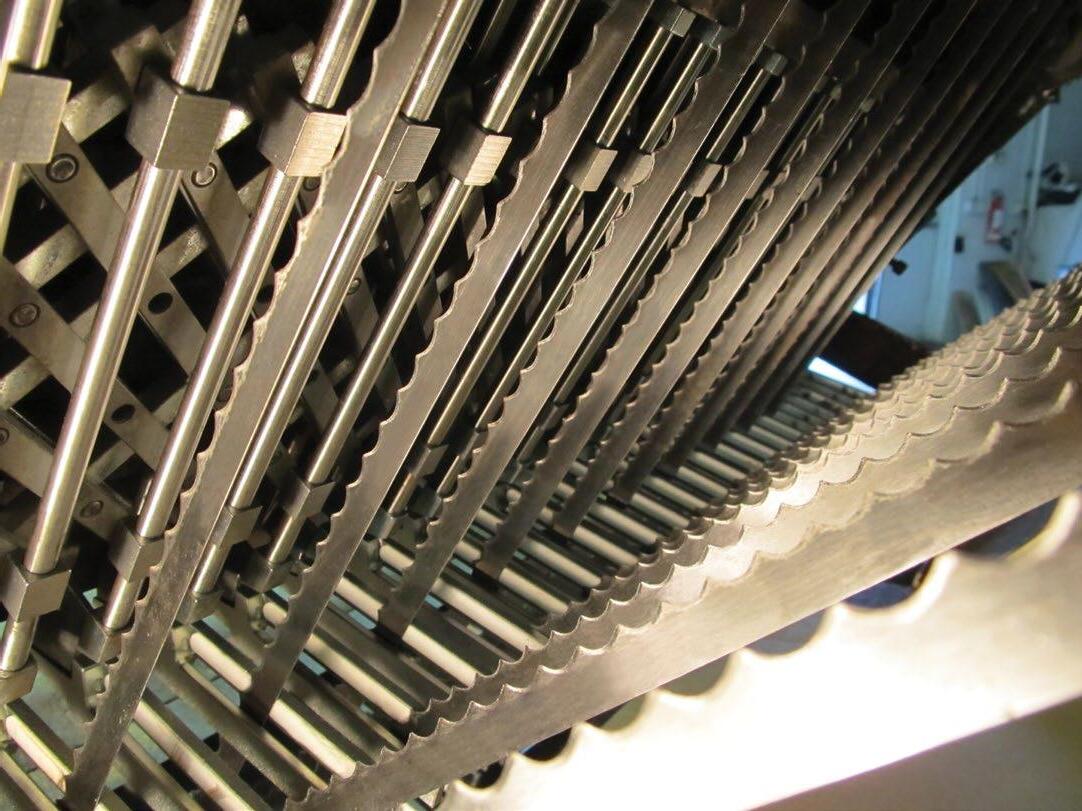
Karen Reed, global director of marketing and communications at Kwik Lok, said one of the biggest challenges when it comes to meeting packaging sustainability goals in the US is the lack of federal regulation.
“There’s currently a patchwork of regulatory obligations, and that can be difficult for bakeries to navigate,” Reed said. “As more state legislation is passed, it will become increasingly challenging.”

Zvaners also said that packaging is top of mind right now for ABA members as they sort through state-by-state legislation, but she expects Congress to step in to set some
general expectations — much like they did with GMO labeling — that level the playing field at some point in the next few years.
In the meantime, Reed said Kwik Lok is focusing on developing products that give companies options, depending on what their current sustainability requirements and goals are. “We're trying to develop a portfolio of options, where people can choose what works for them right now, knowing that that is going to change rapidly,” she said. “We are paying attention to what's happening with material science and with regulation, and we see more change on the horizon.”
They say that change is the only constant in life. And with that, consumers will no doubt expect faster progress moving forward. That includes commercial baking companies expanding the definition of sustainability and taking a more holistic approach when it comes to goal setting. It also means using competition as a driver for innovation … but doing so in a way that keeps the larger picture in mind.
“Success hinges on collaboration,” Reed said. “This is not something any one company's going to do by themselves. We have to change the whole system. We have to change how we approach our work. We have to create infrastructure, both in our companies and in the places that we live.” +++
57 SUSTAINABILITY
Commercial Baking magazine (Avant Food Media) Providing high quality blades for 85+ years. Partner with our experience to optimize your slicing. Sharp. Strong. Quality Blades. + +1-563-386-1131 • sales@hansaloy.com • www.hansaloy.com ADVERTISEMENT
Content provided by
Mitigation of product safety issues in bakery
By Mike Adams, Product Innovation Lead, Campden BRI
+This article will consider some of the major food safety risks that the bakery industry is dealing with, and discuss some emerging risks and threats, which it is vital to be aware of. Each section will consider the risk, its root cause and the status of any mitigation strategies.
Acrylamide, 3-MCPD and GE
Acrylamide is produced by a particular reaction pathway within the Maillard reaction, which occurs between amino acids and reducing sugars within food when it reaches temperatures of 120oC - 165oC. It is an important reaction responsible for significant physical changes, such as the browning of foods, as well as the generation of a large number of different molecules responsible for flavor and aroma.
Whilst many of the resultant molecules are incredibly important, imparting the characteristic flavors to many bakery products, especially bread and cake crusts, biscuits and crackers, one molecule has been identified as particularly problematic.

Acrylamide is formed from the reaction of reducing sugars (such as glucose, fructose, lactose) and the amino acid
asparagine. Acrylamide has been identified as a potential carcinogen and therefore steps to limit human exposure to it have been implemented across many territories.
In 2018, the EU Regulation (EU) 2017/2158 came into force that set a Benchmark Level (BML) of 350 parts per billion (ppb) of acrylamide in biscuits and cookies, with manufacturers required to apply practical steps during processing to achieve acrylamide levels that are ‘As Low As Reasonably Achievable’ (ALARA). The Regulation has been retained in the UK, however any further changes made on an EU level will not be automatically introduced in the UK.
Currently, products are still allowed to be marketed that have an acrylamide level above the BML, as long as they are using the ALARA principle to ensure the level is as low as possible, as well as reviewing mitigation strategies and demonstrating they are working to reduce the level.
Similar restrictions are in place in other territories, with Proposition 65 in California using a ‘No Significant Risk Level’ (NSRL) and a ‘Maximum Allowable Dose Level’ (MADL). In order to avoid a mandatory warning being printed on the product packaging, Proposition 65 states
www.bakingbiscuit.com 02/2023 SCIENCE 58
© Тимур Конев –stock.adobe.com
The safety of food products is of critical importance to all businesses within their supply chain. It is also a topic that is fast-moving, complex and one of the most challenging aspects of manufacturing food or food ingredients.
that the NSRL for acrylamide is 0.2 micrograms per day, so manufacturers are required to understand the typical consumption rates of their products, as well as the acrylamide level in their foods. At a national level in the US, the Food and Drug Administration (FDA) has released guidance for manufacturers on reducing acrylamide levels in foods.
There are several strategies to reduce acrylamide to ALARA and they are primarily a combination of reformulation and processing changes to reduce exposure to elevated temperatures for prolonged periods. Other strategies include the use of enzymes, as well as longer-term approaches involving changes to agricultural practices for key raw materials. Some of the most common mitigation strategies in the bakery are listed in Table 1.
One of the newest strategies on the market is the use of acrylamide-reducing yeast. Several manufacturers now offer a type of yeast that produces a significant level of asparaginase. This enzyme breaks down asparagine, which is the key amino acid in the Maillard reaction pathway that leads to acrylamide. While a number of enzyme preparations have been on the market since the 2000s, this recent innovation of utilizing yeast to produce the enzyme in-situ has the benefit of reducing the number of ingredients required, as well as potentially removing the need to include enzymes on ingredient declarations in territories where this is required.
3-MCPD (3-monochloropropane diol) is part of a group of related substances called 3-MCPD esters that are formed in foods and oils during both the production and refining of oils, as well as processing during food manufacturing.
GEs (glycidyl fatty acid esters) are formed in a similar way and a large proportion of these contaminants are
Lower pH. High pH values will lead to significantly higher acrylamide levels
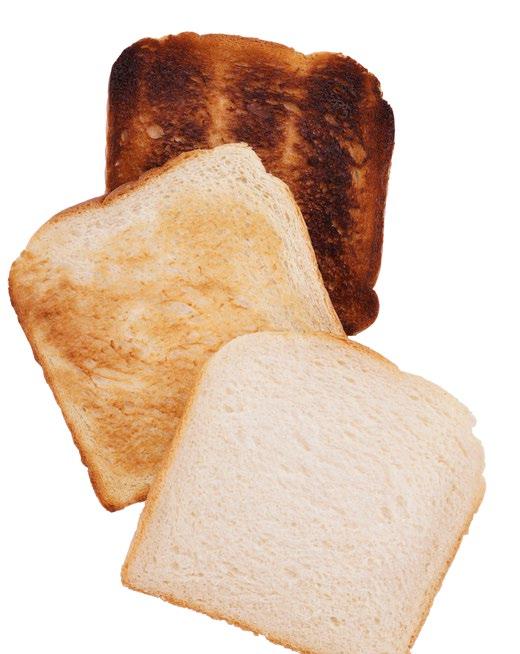
Remove or reduce ammonium-based raising agents
Use of asparaginase or asparaginase product yeast (see text)
Alter sugar types
Partial replacement of wheat/rye/oats with maize or rice flour
Increase finished product moisture specification
Change bake profile
produced during the refining process of oils. There are a number of actions that oil refiners have implemented, between 2010 and 2015, that have led to significant 50% reductions in GE, demonstrating that supply chain management plays a key role in mitigation strategies.
However, several products that contain fats or other lipids, or are fried as part of their manufacture, can generate 3-MCPD during processing. GEs tend to be generated at temperatures >200oC, so are not typically generated in significant levels during manufacture.
3-MCPD is considered potentially carcinogenic and has a tolerable daily intake (TDI) of 2 µg per kilogram of body weight per day. There is no legislation on levels in individual products, so manufacturers must assess the typical consumption of their product and whether levels of 3-MCPD are in line with this. Once the product is consumed, GEs are broken down by the digestive system and glycidol is released. Glycidol is considered carcinogenic and mutagenic, therefore intake via food should be as low as possible.
There are mandatory limits on the levels of 3-MCPD esters and GEs for some foodstuffs, such as soy sauce, hydrolyzed vegetable protein and infant foods, contained within Regulation (EC) No 1881/2006 (introduced via Regulation (EU) 2020/1322).
Mitigation of the formation of 3-MCPD varies considerably depending on the product and process. The focus for baked products such as biscuits is primarily on formulation, while fried product mitigations use a combination of reformulation and process adaptions. Chloride has been identified as a significant cause of elevated 3-MCPD levels, so the reduction or elimination of chloride from recipes can have a major impact. Oil temperature management when frying foods has a significant effect, with elevated temperatures (such as during temporary downtime) causing notable elevations in 3-MCPD levels.
It is worth undertaking a risk-based approach to both 3-MCPD and GEs, encompassing supply chain, formulation and manufacturing practices, with a comprehensive analysis
59 SCIENCE www.bakingbiscuit.com 02/2023
Table 1: Common mitigation strategies to combat acrylamide risk
© Axel Bueckert –stock.adobe.com
of suppliers, ingredients, formulations and processes. You must ensure levels are known, risk factors are understood and mitigation strategies can be implemented if required.

Titanium Dioxide
Titanium dioxide was first approved for use as a food additive by the European Union in 1969. Its many technical attributes and benefits make it a versatile ingredient for the food industry:
+ Gives products, such as glitter, icing, dressings, white chocolate, panned confectionery and sauces, a brilliant white sheen that makes food look more appealing to consumers
+ Inert in the presence of other ingredients
+ Resistant to pH and temperature fluctuation
+ Capable of acting as an anti-caking agent
+ Can improve texture
The European Food Safety Authority (EFSA) undertook a review of the safety of titanium dioxide in 2016 and identified the need for new safety studies due to gaps in the understanding of the risks associated with its use.
In 2021, following additional research, EFSA updated its safety assessment of titanium dioxide to reflect that it can no longer be considered safe as a food additive. Following the publication of this report, the Commission Regulation (EU) 2022/63 was drafted and formally adopted, coming into force in the EU on 7 February 2022. The ban included
a six-month transition period, meaning that foods produced containing titanium dioxide, in accordance with the rules applicable before this date, could continue to be produced and placed on the market until August 7, 2022, and sold through until the end of their shelf-life.
“The risk of food fraud, although not emerging, is expected to see a resurgence due to supply chain issues and inflation. There have been a number of high-profile incidents in the past decade.”
In the UK, the Committee on Toxicity published an Interim Position Paper which did not support EFSA’s opinion on titanium dioxide therefore at present the additive continues to be permitted in Great Britain while a further review is undertaken. Under the provisions of the Northern Ireland Protocol, however, the EU ban applies in Northern Ireland.
As previously discussed, titanium dioxide is a highly functional ingredient, used widely across bakery applications. Unfortunately, there are few solutions that offer similar levels of functionality, both in terms of quantity required and cost. In some applications, there are no solutions at all that offer similar functionality.
The method for replacing titanium dioxide depends on the matrix it is being used in, with very different methods required for each matrix. Table 2 lists some of the replacements and technologies that have been applied.
Corn starch
Rice starch
Calcium carbonate
Calcium phosphate
Color management
Processing to improve “whiteness”
The starch and mineral-based solutions are widely available, with a number of proprietary toolboxes being developed by colorant suppliers, such as ADM and Sensient, as well as the availability of bulk commodity materials for use by manufacturers. Color management solutions exploit the physics of color and light, using blue or purple colors to ‘neutralize’ yellow shades and make products appear whiter or brighter. This is not the most effective strategy; but, it forms part of the toolbox for manufacturers.
Processing changes can also be used to help improve whiteness, especially in liquid and semi-solid products.
www.bakingbiscuit.com 02/2023 SCIENCE 60
Table 2: Options for replacing titanium dioxide
Mike Adams, Product Innovation Lead, Campden BRI
© WavebreakMediaMicro –stock.adobe.com
Homogenized fat droplets within a water phase, such as milk or mayonnaise, are responsible for the white appearance of these products, due to fat micelles causing light to refract and scatter, therefore reflecting all light and appearing white. This phenomenon can be utilized to improve the whiteness of fat-containing products and the addition of a homogenization step during processing can help improve the whiteness of products. In addition, helpful new materials are constantly coming to market, such as ‘Bright White’ chocolate, which is a white chocolate that claims to be significantly less yellow than conventional white chocolate. This could possibly help reduce the reliance on titanium dioxide in product categories that use white chocolate.
Emerging risks
PFAS – polyfluoroalkyl substances
Governments around the world are currently trying to remove PFAS (polyfluoroalkyl substances) from the food supply, as well as the environment. A patchwork of new legislations in recent years has banned packaging products with PFAS and increased pressure on manufacturers to provide safe alternatives. In Europe, Denmark became the first country to ban PFAS in packaging, in July 2020. Together with four other European nations, they are proposing a joint
REACH restriction to limit their manufacture and placing on the market, and around the world, non-governmental organizations are asking for a prohibition on PFAS in food packaging.
PFAS, also called per- and polyfluoroalkyl chemicals, are part of a class of about 9,000 fluorinated compounds. Due to their structure and properties, PFAS are widely used as they provide a non-stick barrier to fat and water. The compounds are therefore found in takeaway food packaging, microwavable bags, kitchen utensils and cookware.
Linked to a range of serious health problems, they are dubbed ‘forever chemicals’ because they don’t break down naturally and consequently toxic exposures continue even after the packaging is disposed of.
Consumers and some researchers fear that PFAS in food packaging can leach into food, which then provides an easy ingestion source for consumers.
The demand to ban PFAS from food packaging increases pressure on food packaging companies that need to quickly adapt in response. Under constrained timelines, companies
Hybrid made easy.

61 SCIENCE www.bakingbiscuit.com 02/2023 ADVERTISEMENT
With our new hybrid heating system you can heat with an electric and/or any other alternative energy source. The choice is yours!
Curious?
must look for substitutes, undertake PFAS testing and R&D, and conduct due diligence in order to ensure that substitutes marketed as ‘PFAS-free’ are as described and are free from the thousands of compounds that make up the PFAS class of chemicals.
Food fraud
The risk of food fraud, although not emerging, is expected to see a resurgence due to supply chain issues and inflation. There have been a number of high-profile incidents in the past decade:
+ Substitution of horse meat into the beef supply chain
+ The use of melamine to increase the apparent protein content of milk
+ Multiple issues, both historical and ongoing, with olive oil and honey authenticity
+ Illegal dyes in spices
Not all of these present an immediate food safety risk. However, the very fact that a manufacturer may not know what is in the material they are purchasing presents a significant risk. While lab-based tests are available for many of the most common and well-known issues, such as
Bread sommelier training now available in English

illegal dyes, animal speciation and authenticity of olive oil and honey, there is huge scope for adulteration and substitution across the entire food supply chain which would be impossible to test for.
This risk, therefore, requires a combined mitigation approach, with the primary step being the development of Vulnerability Assessment and Critical Control Points (VACCP) and Threat Assessment and Critical Control Points (TACCP) plans, to consider vulnerabilities and threats respectively. These assessments will help identify where the most critical risks are and will assist in the development of procedures, tools, audits and testing regimes to identify and mitigate as many risks as is reasonably practicable.
As this article has shown, there are a wide variety of food safety hazards faced by the bakery industry, requiring a concerted effort to ensure that consumers’ health is protected. Government regulation has been shown to move quickly to legislate around levels and use of risk-linked substances, so it is more important than ever to ensure that manufacturers are aware of the risks and have mitigation strategies in place. +++
The Academy of the German Bakery Craft Weinheim (Akademie Deutsches Bäckerhandwerk Weinheim – ADB) is expanding its bread sommelier training course, which will be offered in English starting this September. The teaching materials are translated into English, including the Weinheim bread language. Additional adjustments were also made for the upcoming course: two longer face-to-face modules are planned, to better support bakers traveling from other countries. The first module starts in September 2023 and the second one in September 2024. Several online modules are scheduled in between the two in-person sessions, as well as practical project work, which is generally required of all bread
sommeliers. The exam requirements will be similar to those of the German-language training course.
“This is a fairly complex project because, for example, sensory components are more difficult to convey online than live,” says Kütscher. The Weinheim team has developed a dedicated system for this.
With the expansion of this course, the Federal Academy wants to grow the network of bread sommeliers, and connect with other international activities such as international youth competitions or iba. +++
www.akademie-weinheim.de/diploma-course
www.bakingbiscuit.com 02/2023 SCIENCE 62
© The Academy of the German Bakery Craft Weinheim
F2M BOOK COLLECTION: the series
MULTI-LANGUAGE SPECIALTY BOOKS
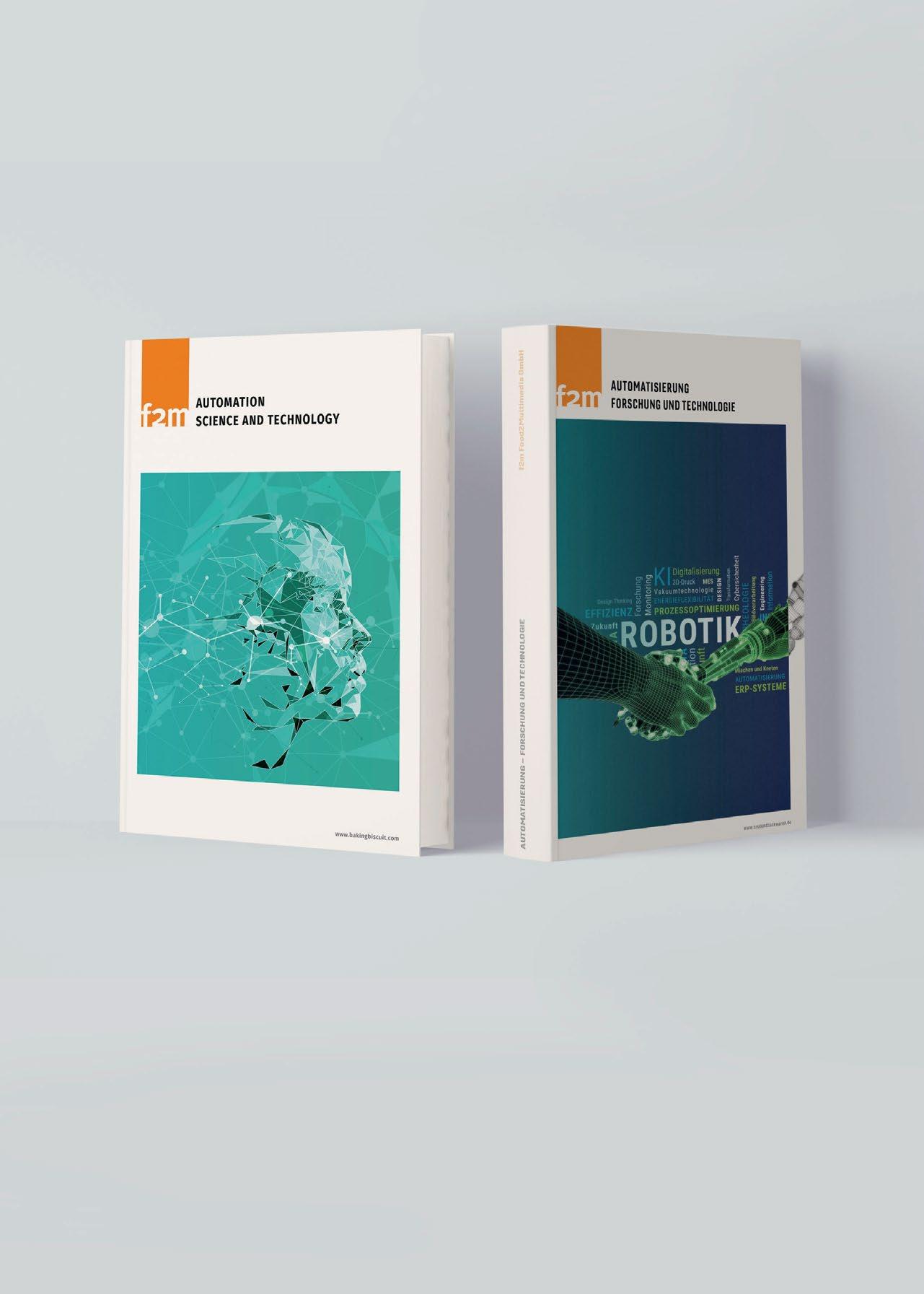
AUTOMATION SCIENCE AND TECHNOLOGY
AUTOMATISIERUNG FORSCHUNG UND TECHNOLOGIE
Language: English (2021)

Hard copy: 180 pages
Price: EUR49,00*
Language: German (2022)
Hard copy: 204 pages
Price: EUR49,00*
*Including VAT, for the hard copy or e-copy. Shipping costs are not included.
Food2Multimedia GmbH Contact: Viktoria Usanova, usanova@foodmultimedia.de
YOURS NOW
ORDER
Proudly sponsoring: Women leaders
Dawn Foods took mentorship a step beyond and established a sponsorship project for the women in its ranks, called the Women’s Leadership Development Program. The HR initiative pairs employees up with one another to help advance women’s career paths at Dawn.
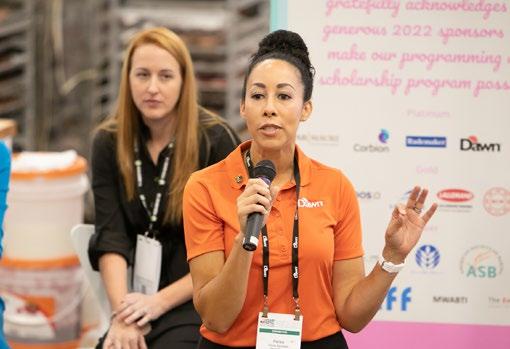
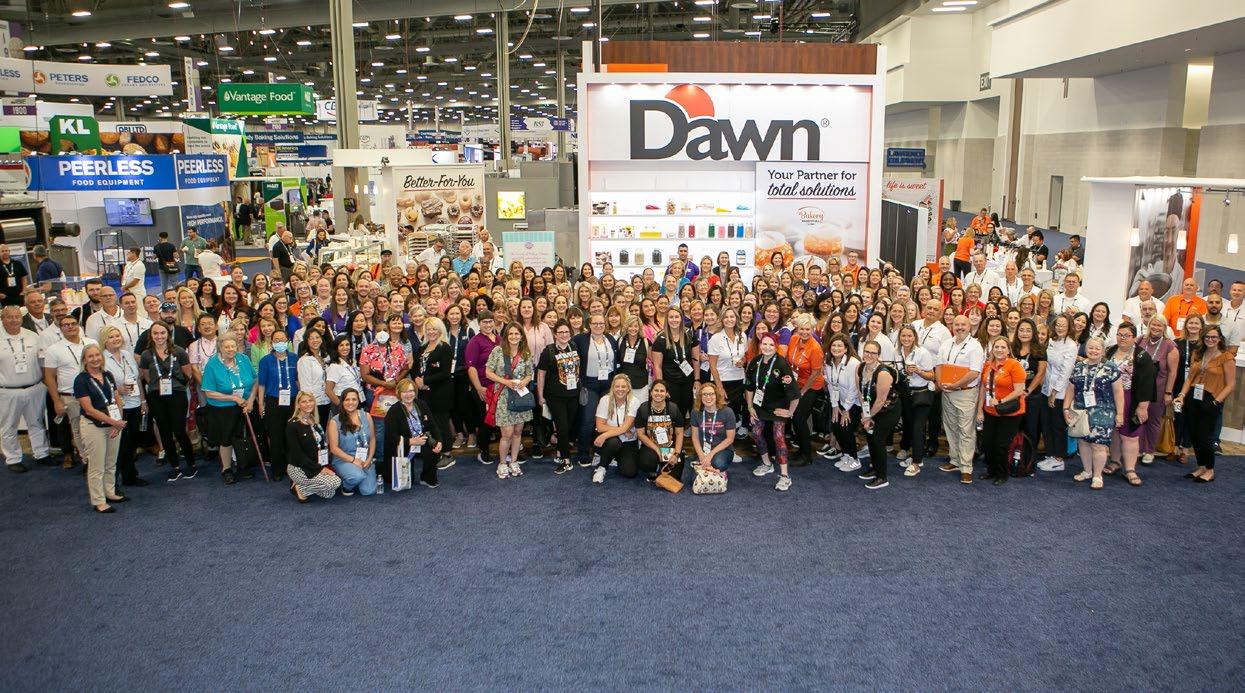 By Catalina Mihu
By Catalina Mihu
Carrie Jones-Barber, CEO of Dawn Foods, had just received a new mentorship request when we met at the ‘Donuts with Dawn’ breakfast. Dawn Foods, alongside The Society of Bakery Women, organized the networking event at IBIE 2022 – a space where women were encouraged to step up, strike up a conversation and together explore new ideas, new opportunities and new connections.
Speaking at the event, Carrie shared how we constantly learn from each other through networking with a story of her own: “I learned something new just a few days ago while talking to a client about diversity – the importance of bringing people of different backgrounds to the table; equity – making sure that we treat everyone in the best possible way; and inclusion – supporting people to feel safe to bring their entire self to work, every single day.” With this, she learned there is also something worth adding: belonging. “You can invite someone to the dance, but if you don’t get them on to the dance floor, they don’t feel like they belong,” her client said. These should be the four priorities: diversity, equity, inclusion and belonging, she concluded. These words thus inspired someone in the audience to reach out for Dawn’s mentorship program.
Dawn supports women in their roles through the Women’s Leadership Development Program, which uses a sponsorship system. It was considered the more accurate concept choice when compared to ‘mentorship’ because it implies closer involvement. In this way, it becomes the sponsor’s responsibility to see the other person succeed, give them opportunities, and support them throughout.
Dawn implemented a one-year-and-a-half program that includes a partnership with the training group Linkage to support the development of women in the baking industry. Both men and women are taking on sponsor roles, helping ‘sponsees’ advance in a meaningful way and hone their skills. Program participants attend an intensive and interactive four-day leadership institute on advancing women leaders, facilitated by Linkage, “It equips women business leaders with actionable steps and practices to address the barriers that impede their advancement in the workplace,” as Linkage describes it.
Felisa Stockwell, Vice President, Global People & Culture, and Osvaldo Santos, Vice President of the People team (LATAM), created the Women’s Leadership Development Program. Together, they developed it for over a year and
www.bakingbiscuit.com 02/2023 CAREERS 64
+
© Dawn Foods ©
Felisa Stockwell, Vice President, Global People & Culture is a co-founder of the Women's Leadership Development Program
Dawn Foods
found a partner in Linkage, before its official launch at Dawn in 2021.
Women on board
Women are nominated by their managers from within the international organization for the program or by selection via talent management process. The program’s debut class of 2021 comprised two ‘sponsees’ from Europe, three women from LATAM and five from the U.S. The class of 2022 was announced just ahead of IBIE.
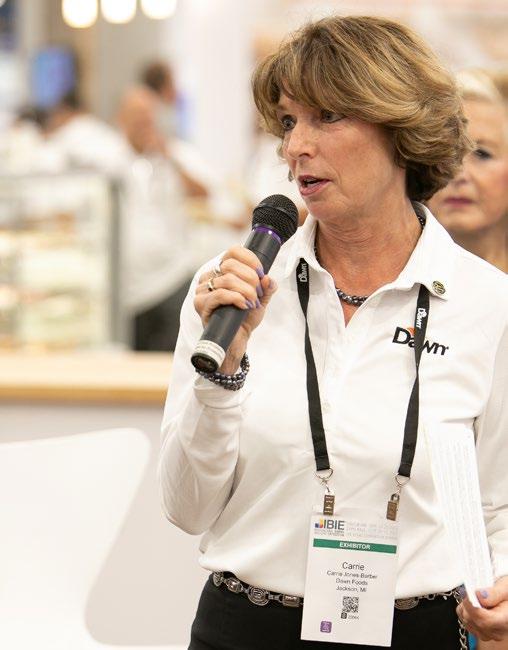
“The program is all about providing career opportunities, giving women the tools and fundamentals to build their confidence, find what their passion is and use that as a career target. This program empowers women to be confident and bold, to ask questions, and even ask for help,” Dawn’s CEO underlines. It supports the women of Dawn to create a network that fills their gaps and helps them be more successful, together. In the words of an attendee of Dawn’s IBIE breakfast, “There are always storms; to be successful, you need to learn to dance in the rain.”
Embarking on this program starts with creating relationships and allowing space for vulnerability. Conversations and connections started in this safe environment continue throughout and beyond the program, Jones-Barber explains. At the end of the first program, in January 2023, there were four sponsees advancing into a new leadership role.
“Can we talk?”
Joining the program gives everyday work a new perspective, too. In her role as a sponsor, Dawn’s CEO looks for

opportunities and ways to promote her sponsee that may arise from any daily activity. Once a month, they meet to catch up with anything from feedback on recent activities to advice on certain concerns. It’s in Dawn’s open-door culture that everyone can be comfortable reaching out, without following a rigid, corporate ‘to-do’.
Talent development is part of the Women’s Leadership Development Program. And that’s because, “As a manager, one of the most important things that I can do is help someone develop their career, watch them grow and take on new steps and opportunities, giving them the tools to do so, providing feedback, or listening to them. It’s all so fulfilling!,” Jones-Barber underscores. Talent planning is very important to Dawn, including the sense of belonging. This is even seen in regular team-building events that are leveling the playing field. Empathy and vulnerability are valued and cared for, the company’s CEO highlights.
These values are reflected in the company’s CSR strategy: “We believe our actions matter and that we have a responsibility to make a positive impact in communities around the world. Our approach to social responsibility aligns to our commitments to our people, our products, and our customers – better known as the Circle of Excellence.”
65 CAREERS www.bakingbiscuit.com 02/2023
The pandemic brought ad-hoc connections to a stop. To help stay connected and reassure the people working at
Cordia Harrington, Crown Bakeries co-founder and CEO, joined the women's networking event at IBIE
Carrie Jones-Barber speaks about the importance of belonging, added to diversity, equity and inclusion, at the 'Donuts with Dawn' event (IBIE 2022)
© Dawn Foods © Dawn Foods
Dawn worldwide, the company set up more frequent communication opportunities. Pay scales are also being adjusted, and are even more closely monitored since the pandemic, to remain competitive. On the bright side, people are now making decisions faster than ever before, changing the dynamics of how the business is run.
Workforce shortage
Staff shortages lingers on in the baking industry. Dawn has implemented several approaches to address it for the company, over time, in order to attract and retain people. Having started as a small family business, Dawn takes pride in its roots and wants to ensure that people who join are satisfied and that they feel fulfilled and appreciated –in one-on-one conversations and on a global scale. “We say, ‘Let’s make this a great place to work!’ And we are very much focusing on it,” Jones-Barber points out.
The company takes decisive steps to find the next hire; we utilize social media, digital marketing and job boards, but we also leverage Dawn networks and even encourages its people to refer friends or family members. If a newcomer is excited about the new job to stay for the first three months, they usually remain on board, the company observes. Communication is the key to this, as it is to all the following
steps in their career at Dawn. This can mean learning new jobs and finishing or furthering their education – all of which are supported by the company. In-house training also provides generous specialization opportunities, as well as resource sharing.
“As a manager, part of the most important things that I can do is help someone develop their career, watching them grow and taking on new steps and opportunities, giving them the tools to do so, or simply by giving them feedback, or listening to them. It’s all so fulfilling!”
Carrie Jones-Barber, CEO, Dawn Foods
Wherever possible, a hybrid work system is in place, tailored to the job and the person’s needs, while retaining the feeling of belonging to the organization. At the end of the day, Dawn wants its people to be truly proud to be a part of the company – and those who stay, are, the CEO says. Optimism is valued at Dawn, the happiness of its people, customers and consumers. It is all about being a part of the ‘Circle of Excellence’. +++
ADVERTISER DIRECTORY
baking+biscuit international is published six times a year.
Single copies may be purchased for EUR 15. Subscription rates are EUR 75 per annum. Students (with valid certification of student status): EUR 40. (All rates include postage and handling, but not VAT).
Cancellation of subscription must be presented three months prior to the end of the subscription period in writing to the publishing company. Address subscriptions to the above stated distribution department.
Claims will not be accepted for any copies not received or lost copies due to reasons being outside the responsibility of the publishing company. This magazine, including all articles and illustrations, is copyright protected. Any utilization beyond the tight limit set by the copyright act is subject to the publisher’s approval.
Online dispute resolution in accordance with Article 14 Para. 1 of the ODR-VO (European Online Dispute Resolution Regulation): The European Commission provides a platform for Online Dispute Resolution (OS), which you can find at http://ec.europa.eu/consumers/odr
Valid advertising price list: 2023
PUBLISHING HOUSE
Food2Multimedia GmbH
Schoolkoppel 27 21449 Radbruch, Germany +49 4178 244 9797 www.foodmultimedia.de
EDITOR EMERITUS
Hildegard M. Keil hildegard_keil@t-online.de
PUBLISHER
James Dirk Dixon dixon@foodmultimedia.de
EDITOR-IN-CHIEF
Catalina Mihu mihu@foodmultimedia.de
EDITOR
Helga Baumfalk baumfalk@foodmultimedia.de
COPY EDITOR
Annie Dixon annie.dixon@foodmultimedia.de
SUBSCRIPTIONS
Viktoria Usanova usanova@foodmultimedia.de
DISTRIBUTION vertrieb@foodmultimedia.de
ADVERTISING
Dirk Dixon dixon@foodmultimedia.de
SOCIAL MEDIA
Annie Dixon annie.dixon@foodmultimedia.de
LAYOUT/GRAPHIC DESIGN
LANDMAGD Design aus der Heide
Linda Langhagen, design@landmagd.de
PRINT
Leinebergland Druck GmbH & Co. KG Industriestr. 2a, 31061 Alfeld (Leine), Germany
IT
IT Consulting BRUNK
Felix Brunk, felix@brunk-net.de
CAREERS 66
www.brotundbackwaren.de 02/2023
IMPRINT
American Pan 21 AMF Bakery Systems 7 Ashworth 19 backaldrin 53 Bakon 45 Dawn Foods 49 DIOSNA 15 FRITSCH 9 Hansaloy 57 Heuft 13, 61 Intralox 23 IPCO 39 J4 41 Kempf 5 Koenig, Werl 25 Koenig 31 Kwik Lok 27 Mecatherm 43 Middleby 33 Rademaker 37 Reading Bakery Systems Cover Reading Thermal Systems 51 Royal Kaak 68 Sollich 47 Verhoeven Bakery Equipment Family 2 VMI 17

KEEP UP TO DATE STAY RELEVANT Your connection to insights into: + Bakery technology + Market trends + Science and Research www.bakingbiscuit.com Subscribe: usanova@foodmultimedia.de
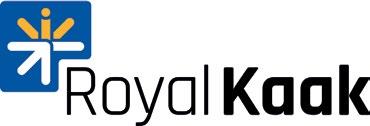


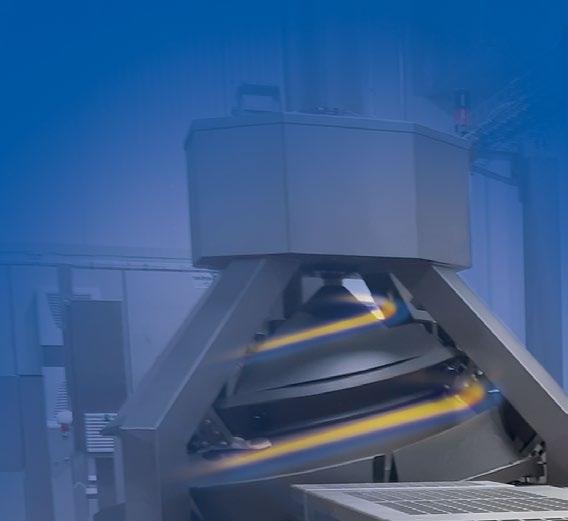



Best Lead Time 24/7 Support Hygienic Design Line Integration Sustainable Development Goals From silo to truck Solutions for your bakery kaak.com Whether you need a single machine or turn-key line
















































































 VISIT US # 4C23
VISIT US # 4C23
 By Catalina Mihu
By Catalina Mihu

































































































































 By Anne Fremaux, Bakery Director, Gira
By Anne Fremaux, Bakery Director, Gira
















 By Catalina Mihu
By Catalina Mihu









